
Rough River History (from various sources)
Frameless version of this page
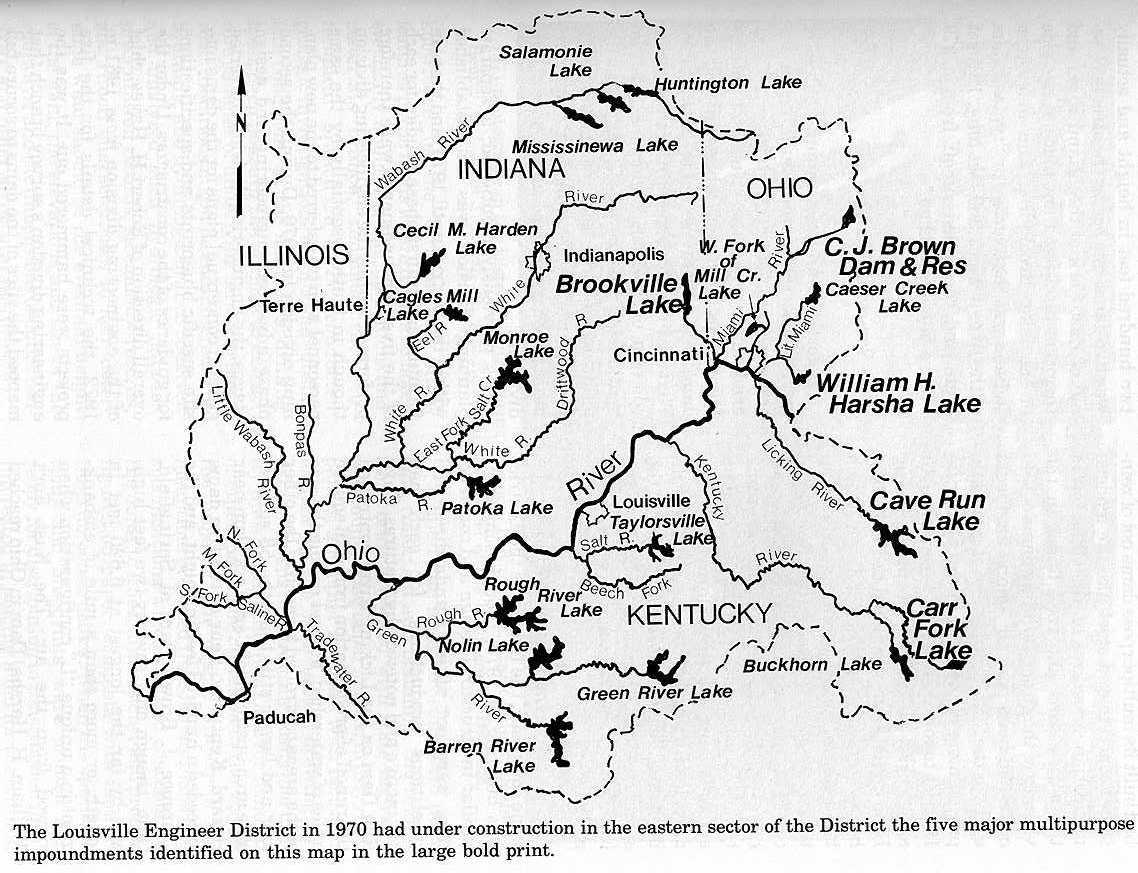
Source: The Falls City Engineers: A history of the Louisville District, Corps of
Engineers United States Army Page 49. Written by Leland R. Johnson, 1974. Published by United States
Army Engineer District, Louisville, Kentucky.
Real-Time Data for Kentucky: Streamflow --
179 site(s) found
Green River Navigation
(from: The Falls City Engineers: A history of the Louisville District,
Corps of Engineers United States Army 1970-1983)
"Like the Wabash, the Green River in western Kentucky had been navigated since pioneer days by a substantial flatboat
traffic as far upstream as Greensburg and by steamboats to Mammoth Cave. To aid that commerce, state government during
the 1830s built four locks and dams on the Green and one on its tributary Barren River to extend slackwater for
commercial navigation as far as Bowling Green, Kentucky. The federal government purchased the state project in the late
19th century and the Engineers built Locks and Dams 5 and 6 on the Green River and another on the Rough River, a
tributary, commercial navigation on the upper Green River ceased by 1951, and Locks 5 and 6 along with the Rough
River Lock were closed.
While shipment of coal from mines along the lower hundred miles of the Green began during the 1950s and the District
built larger Locks at Dams 1 and 2 nearest the mouth of the river to serve that traffic, no substantial commerce
upstream of Lock and Dam 3 developed, and when the 19th century stone and timbercrib dam at Lock 4 washed out
on 24 May 1965, it was not repaired. The remaining stone and timbercrib dams on the Green River project were
in such leaky condition by the 1960s that the District sometimes resorted to a 19th century technique for plugging the
leaks to maintain pools by dropping hay and coal dust into the pools where the material would be drawn into the
crevices in the dams, temporarily blocking the leakage. The timbercrib of Dam 1 [Green River] was removed in 1970 and
replaced with a new dam built economically of the steel sheet-piling cells of the sort used for cofferdams on the Ohio
River also for the temporary lockwalls constructed at Locks 52 and 53. When the contractor, Traylor Brothers, finished
rebuilding Dam 1 for less than a million dollars in 1970, the tonnage moving on the Green River amounted to about
eighteen million tons annually, chiefly coal bound for steam electric power plants along the Ohio River.
Public interest continued in restoring Green River Dam 4 and revitalizing navigation on the upper Green and also in a
proposed high, multipurpose dam on the Green near Lock and Dam No. 3 at Rochester. The District Engineer advised the
Governor of Kentucky in 1971, however, that there was little chance for the restoration of the old locks or for the
modernization of facilities on the Green until coal or other commercial traffic began using the river upstream of Lock
3. On 21 November 1973, the District deactivated Lock 4 on the Green and Lock 1 on the Barren River, and "mothballed"
the structures. The lockhouses and reservation at Lock 4 were deeded to Butler County which planned the development of
a public park and local museum at the site.
When a towboat firm barged about 60,000 tons of coal through Green River Lock 3 at Rochester in 1976, indicating that
shipments might continue, and while rumors circulated that grain and farm produce from along the upper Green might also
start moving via the river, the District sent its repair station crew with the towboat Patoka up the Green in
1977 to repair Lock 3. The crew cleared the pool above Dam 3 and installed new lower gates in the lock, replacing the
ancient manually operated capstans which had opened and closed the lock gates since the 1830s with an ingenious device
allowing operation of the gates with a small electric drill working through a reduction gear. The change in gate
operation ended an era, because Lock 3 was the last in the District and in in the United States to be operated by hand
with the appliances that had been used at locks since their invention during the Renaissance in Europe.
Studies of a proposed high multipurpose dam at Rochester and of a dozen other plans for the future development, or
non-development, of the Green River system were underway during most of the 1970s. The Barren River Area Development
District, headed by Jack Eversole and with the support of local civic and business leaders, pressed the Corps for the
construction of a new high dam or at least for restoration of commercial navigation facilities as far upriver as Bowling
Green. They said the negative reports made by the District on the feasibility of modernizing the Green River had not
adequately considered the potential for hydropower production and for industrial development which might result from
modernization. "We tend to feel the Corps had prejudged the situation and are making their findings fit the plans,"
declared Jack Eversole, adding: "There are facts that the Corps ignores when making a study." Others apparently agreed
with him, for when the District Engineer announced in 1979 that studies indicated neither the construction of a
multipurpose project on the Green, nor restoration of the old locks and dams was economically justifiable. Congressman
William H. Hatcher arranged for funding by Congress of a renewed study to be undertaken during the 1980s.
Two disputes concerning the Green River locks and dams made headlines during the early 1980s, one involving the proposed
removal of Dam 6 and the other the closing of Lock 3. Environmentalists proposed the removal of Dam 6 to open the upper
Green to canoeing and to lower the water level in the Mammoth Cave system which was thought to threaten with extinction
the blind shrimp living in the cave system; other citizens feared removal of the dam might threaten local water supplies
and curtail operations of the [Motor Vessel] (Mv) Miss Green River which carried tourist excursions along the
river in the pool of Dam 6. While the District had expended large sums to maintain Dam 6, it did not object to its
removal, for it had served no commercial navigation other than the excursion boat for years. The decision on the issue
apparently hinged upon whether the U.S. Fish and Wildlife Service determined that the blind cave shrimp qualified as an
endangered species.
Under pressure from Washington to reduce staffing and expenditures, the District proposed the closure of Lock 3 on the
Green River, along with other antiquated locks on the Kentucky River upstream of Frankfort, in 1980. Only four barges
passed through Lock 3 in 1980 and coal tonnage moving on the river downstream of Lock 3 was declining. "Right now
there's a lot of pressure to reduce the number of federal employees," commented Larry Dickson, chief of the District's
waterways management branch, adding that "once a lock or other facility doesn't support itself, it's hard to justify
keeping it open.
The reaction of the citizens in the Green River valley was highly critical of the decision to close Lock 3. The editor
of the Morgantown, Kentucky, newspaper declared that the "pencil-pushing public servants" at the Louisville District
were wrong in thinking that the operation of navigation locks should be profitable, and local officials asked how they
could develop traffic on the river if the locks were closed. Green River historian Helen Crocker urged that Lock 3 be
preserved as a historic site, as an example of the ingenuity of the pioneer engineers who built and operated it without
power equipment.
The Reagan administration insisted that personnel cuts at civil works projects be implemented, and on 1 October 1981,
Green River Lock 3 ceased operation. It was placed in a caretaker status providing for periodic inspection and repairs
necessary to maintain the pool. Rumor had it that a lockmaster still roamed the reservation of Lock 3 at night. The
family of Lockmaster Randall Lytle, who were the last to live in the lockhouse at No. 3, were convinced the house was
haunted, perhaps by the spirit of the old lockmaster. Mr. Lytle's children in fact had referred to the ghost as
"Casper," after the cartoon character. Those who heard the story were amused by the thought of an apparition walking in
circles at the capstans, opening the locks for diaphanous steam packets with excursion parties once again headed
upriver to Mammoth Cave." Source: The Falls City Engineers: A history of the Louisville District,
Corps of Engineers United States Army 1970-1983 Page 149-154. Written by Leland R. Johnson, 1984. Published
by United States Army Engineer District, Louisville, Kentucky.

Early Navigation Projects on Green River, 1828-1842
(from: The Falls City Engineers: A history of the Louisville District, Corps of Engineers United States
Army)
The first American pioneers to settle in the Green River Valley used the river and its tributaries to send produce in
flatboats to New Orleans, but Evansville, Indiana on the Ohio just below the mouth of the Green, eventually became the
marketing center for Green River commerce. During much of the nineteenth and for several decades in the twentieth
century, the Green River Valley supplied Evansville saw mills and wood-working plants with timber; Evansville claimed in
1898 to be the largest hardwood manufacturing center in the world. Logs cut on the Green River or its tributaries in
July were allowed to dry until winter, then pinned together with wooden pegs in rafts and floated down to Evansville.
The steamboat McLean was the first to reach Bowling Green in 1828, and it was followed by other boats each high
water. In 1828 also, Kentucky established a Board of Internal Improvements, which requested the loan of United States
Army Engineers for surveys of streams in Kentucky. Lieutenant William Turnvull and Lieutenant Campbell Graham,
Topographical Engineers, surveyed the Green River in 1828 and turned the results over to the state Board. As part of
its state-wide internal improvements program, Kentucky authorized development of a slackwater project to improve
navigation up the Green and Barren rivers to Bowling Green in 1833, and employed an experienced civil engineer, General
Abner Lacock, former Congressman and Senator of Pennsylvania and engineer on the Pennsylvania canal system, to locate
the locks and dams. The Green-Barren River project was the first improvement of its kind in the United States, and
canal engineers were the men with the most closely related experience. (As previously mentioned, construction of a
slackwater project became known as a "canalization" project; this is, to make like a canal.)
William B. Foster, also a Pennsylvania canal engineer, was first resident engineer in charge of construction, but
because of ill-health he resigned in early 1835 and the project was completed under the direction of Alonzo Livermore,
another Pennsylvania canal engineer recommended by General Abner Lacock. Construction of Locks and Dams Nos. 1 and 2
was underway when Livermore took over; however, Livermore modified their designs to increase lock chamber dimensions to
160 feet long by 36 feet wide. He selected sites of two more locks and dams on the Green (Nos. 3 and 4) and one on the
Barren (No. 1) to establish 175 miles of six-foot slackwater navigation from the mouth of the Green up to Bowling Green
on the Barren. The locks were constructed, under contract, of sandstone masonry laid in Louisville hydraulic cement
(except No. 2 which was laid in common lime). To overcome a gradient of 78 feet in 175 miles, the locks averaged
fifteen and a half feet of lift. The dams were timbercrib, rock-filled structures with masonry abutments.
Several contactors failed on the project, and other problems were experienced -- chiefly resulting from poor foundation
conditions and damages to completed work by floods. A flood in 1840, for example, breached an abutment of Lock and Dam
No. 3 and carried away the lower lock-gates. Exclusive of the costs of snag-removal and general channel clearance,
initial construction costs aggregated $780,000 -- about $10,000 per foot of lock-lift. This cost was about triple the
original cost estimates; however, the fist estimates were for smaller locks and lesser-quality materials and did not
provide for such contingencies as the costs of repairing flood damages.
Though the project was not entirely completed in 1841, the steamboat Sandusky locked through to Bowling Green
late in the year, thereby clearly demonstrating, one contemporary observer said, that "the removal of the obstructions
to the navigation of all the great rivers of the West is practicable." Over $2,000 in tolls were collected during the
first year of operation and fears that the project would form a health hazard and would be a waste of money were
dissipated. Residents of the Green Valley readily acknowledged the "advantages derived from a perpetual line of the
finest water navigation in the world." Regular steamboat trade between Evansville and Bowling Green was inaugurated;
citizens of Bowling Green constructed a six-story warehouse at the river and a mule-powered railroad to connect the
landing with the business section; and the project provided a substantial economic boost to the commercial development
of the region.
Free Navigation on the Barren and Green, 1865-1890
The navigation structures on the Green and Barren rivers were damaged and their maintenance was neglected during the
Civil War, and in 1868, rather than expend the funds necessary to repair the project, the state legislature leased the
works to the Green and Barren River Navigation Company, an organization of bankers, attorneys, and steamboatmen led by
W.S. Vanmeter, the steamboat captain who had obstructed Lock No. 3 for the Confederacy in 1862. The company operated
the project, opened mines and entered other business, and ran its own steamboats, the Evansville and the
Bowling Green. Since company-owned vessels paid no tolls, the company soon drove competition from the river and
established a de facto monopoly.
Opposition to the monopoly soon developed, and it had very influential leadership in the person of General Don Carlos
Buell, former Union General who settle in the Green Valley (at Airdrie, Muhlenberg County) after the war, opened coal
mines, and began shipping coal down river to Memphis in late 1865. His business grew until 1868, when the navigation
company took over the project and, with its toll-free privileges, undersold him and drove him from the market. General
Buell lead a campaign to end the company monopoly and free the river of tolls. When his efforts failed in the state
legislature, he took the case to Congress contending:
If the claim of Green River to the care of the Government as a public avenue rested on nothing but the expressive
fact that at one period in our civil war the slackwater navigation served as a valuable channel of supplies for a Union
army at a critical moment when all other lines failed, the question might properly be dismissed. But the ordinary trade
of the Green River country has been relatively large from the earliest settlement, and the magnitude of its undeveloped
resources especially in minerals, demands for it the facilities of an extended interstate commerce.
General Buell's complaint that the company rested "like an incubus on the destinies of the Green River Valley" brought
Congressional action in 1879. An investigation ordered, and the Corps of Engineers reported that tolls on the Green
and Barren rivers were excessive and that a monopoly did exist. Congress directed the Corps to ascertain the steps
necessary for federal purchase and toll-free operation of the project, and a special Board of Engineers convened at
Bowling Green in 1886. The Board conferred with directors of the company, inspected the project, reported that an
injurious monopoly did exist, and recommended "in justice to the country tributary to the Green and Barren rivers, the
present obstructive tax on its commerce should be removed." The Kentucky legislature ceded its rights to the project to
the United States in 1886, and Congress purchased the company franchise for $135,000 in 1888.
Lock No. 3, the one most heavily damaged during the war, collapsed in 1887; other locks were in poor condition; the
channel was littered with snags; and through navigation on the river had been suspended when the United States took over
the project. Lieutenant William "Goliath" Sibert, Corps of Engineers, was assigned the duty of reopening the river to
navigation. Sibert, a physically large man, had roomed at the Point with diminutive David Gaillard --hence Sibert's
nickname "Goliath." His work on the Green and Barren river project was his first civil works experience and it launched
him on a distinguished engineering career which took him around the world, but he was to call the Green River Country
home ever afterwards. Sibert established an Engineer office at Bowling Green, arranged construction of the
snag-boat William Preston Dix to clear the Green River of snags, and initiated an emergency reconstruction
of Lock No. 3 to reopen the river.
Difficulties were experienced in pumping water out of the cofferdam at Lock No. 3 in 1889, and in 1890 Lieutenant Sibert
called in a waterways engineering expert, Benjamin F. Thomas, U.S. Assistant Engineer on the Big Sandy River, who got
the cofferdam pumped out in ten days, put in the new masonry, and opened the lock to navigation on 10 November 1890.
Residents of the Green Valley were "jubilant" and hundreds gathered at the river to see the first boat pass through
toll-free. General Buell reopened his coal mines, the timber-rafting business increased, and, because the boats could
transport commodities at about half the prevailing rail rates, railroads reduced rates to meet the competition.
Commerce on the river quadrupled -- as many as sixteen steamboats soon plied the waterway regularly. The editor of the
Calhoun, Kentucky, Constitution wrote in 1890:
It is very observable that since Green river has been made free to all who desire to run any kind of craft upon its
waters, commercial affairs are assuming larger proportions; new farms are being opened, and various kinds of
manufacturing establishments are springing up along its course.
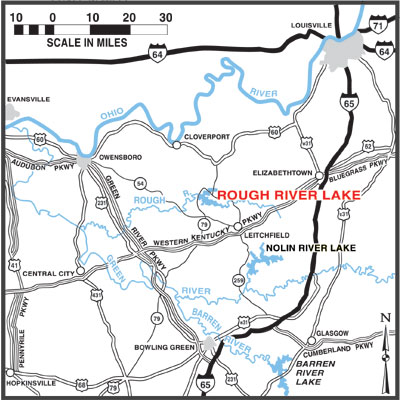
Rough River Project
The success attending the repair and toll-free operation of the Green River project stimulated support for extending the
slackwater system. Of special interest was the project constructed on the Rough River to furnish slackwater from
the confluence of the Rough with the Green up to the town of Hartford, Kentucky -- it was the first river lock
constructed entirely of monolithic concrete in the United States.
A Kentucky state engineer had surveyed the Rough River in 1836 and recommended a slackwater system for the stream
to permit development of timber and mineral resources, but it was not done. In 1856 the Rough Creek Navigation and
Manufacturing Company was incorporated, shortly after the Civil War it constructed a crude lock and dam about eight
miles from the mouth of the Rough and a regular steamboat traffic developed up to Hartford. The trade ended,
however, when the Green River Company abandoned its lock and dam.
Congress authorized a project to reestablish traffic on the Rough River in 1890. Trees were cleared from the
banks, snags removed from the channel, and construction of a new lock and dam, near the site of the old one, commenced,
under the direction of Assistant Engineer William M. Hall. Hall later directed the construction of sixteen locks and
dams on the Upper Ohio River, and implemented a number of novel waterways engineering methods, such as those for
anchoring concrete structures to foundation rock and for drilling cores from substrata to ascertain foundation
conditions. Plans for the Rough River lock called for the use of common stone masonry in construction, but bids for
furnishing cut-stone were excessive because of limited access to the project site, and Hall recommended the
substitution of concrete of "imported Portland cement." The Chief of Engineers approved in 1895, and construction of
the concrete lock, with chamber dimensions of 27 feet width, 123 feet length, and 9 feet lift, was completed in 1896,
at a cost of $85,000.
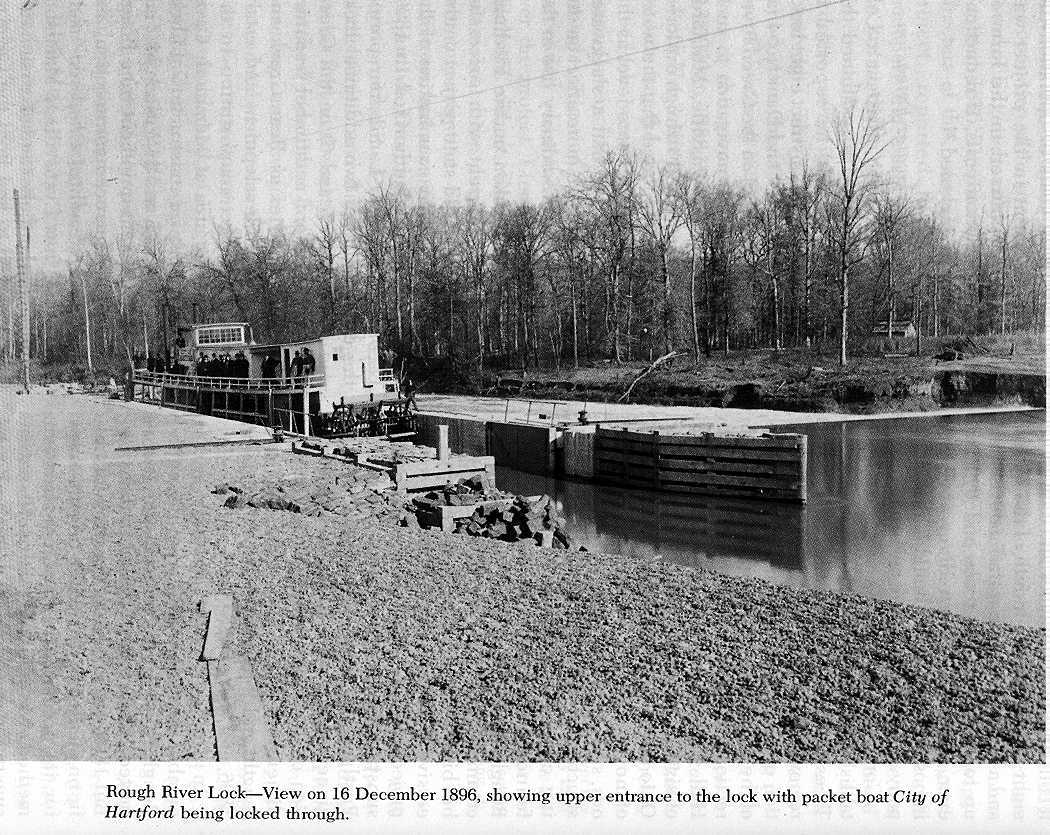
Source: The Falls City Engineers: A history of the Louisville District, Corps of
Engineers United States Army Page 146. Written by Leland R. Johnson, 1974. Published by United States
Army Engineer District, Louisville, Kentucky.
In 1899, three steamboats and a number of small vessels were plying the Rough River to Hartford; they transported
10,883 tons of freight in that year. But 1899 was just about the peak for traffic on the Rough River. The project,
except for its precedent-setting construction method, was a signal failure. No extensive traffic ever developed on
the Rough River, though it is possible, because of how construction and operation costs, that during its many
years of operation the public investment in the project was adequately reimbursed in the form of lower transportation
costs, if reductions in rail rates are included.
Green River Slackwater Extension
When R.H. Fitzhugh, assistant to Colonel William E. Merrill, examined the Green River in 1879, he reported it would be
feasible to construct eight locks and dams above Lock and Dam No. 4 (at Woodbury, Kentucky) on the Green River to extend
slackwater navigation to such communities as Brownsville, Munfordsville, and Greensburg. Fitzhugh explored Mammoth
Cave, reported that the water in the cave was the same level as the river, and concluded that a slackwater project would
have no more effect on the famous cave than an ordinary rise in the river.
No action was taken on the Fitzhugh report, but concurrent with successful reopening of the old state project on the
lower river, another examination of the Upper Green was authorized in 1890. Lieutenant William L. Sibert reported the
construction of two additional locks and dams (Nos. 5 and 6) on the Green could open mineral and timber resources of
such tributaries as Bear Creek and Nolin River to development and establish waterways
transportation to the popular resort area at Mammoth Cave. Congress approved construction of
Locks and Dams Nos. 5 and 6; William M. Hall moved Engineering equipment from Rough River
and commenced construction; and in 1906 the steamboat Chaperon made the first run
from Evansville to Mammoth Cave. A regular tourist and excursion traffic developed
to and from the Cave region and commerce on the Green River system increased, but the
public investment in Locks and Dams Nos. 5 and 6 was probably never reimbursed. Timber and
asphalt resources on the Upper Green were developed to a
limited extent, but general commerce was also served by the Louisville and Nashville Railroad and the turnpike between
Bowling Green and Louisville. Source: The Falls City Engineers: A history of the Louisville District, Corps of
Engineers United States Army Page 142-147. Written by Leland R. Johnson, 1974. Published by United States
Army Engineer District, Louisville, Kentucky.
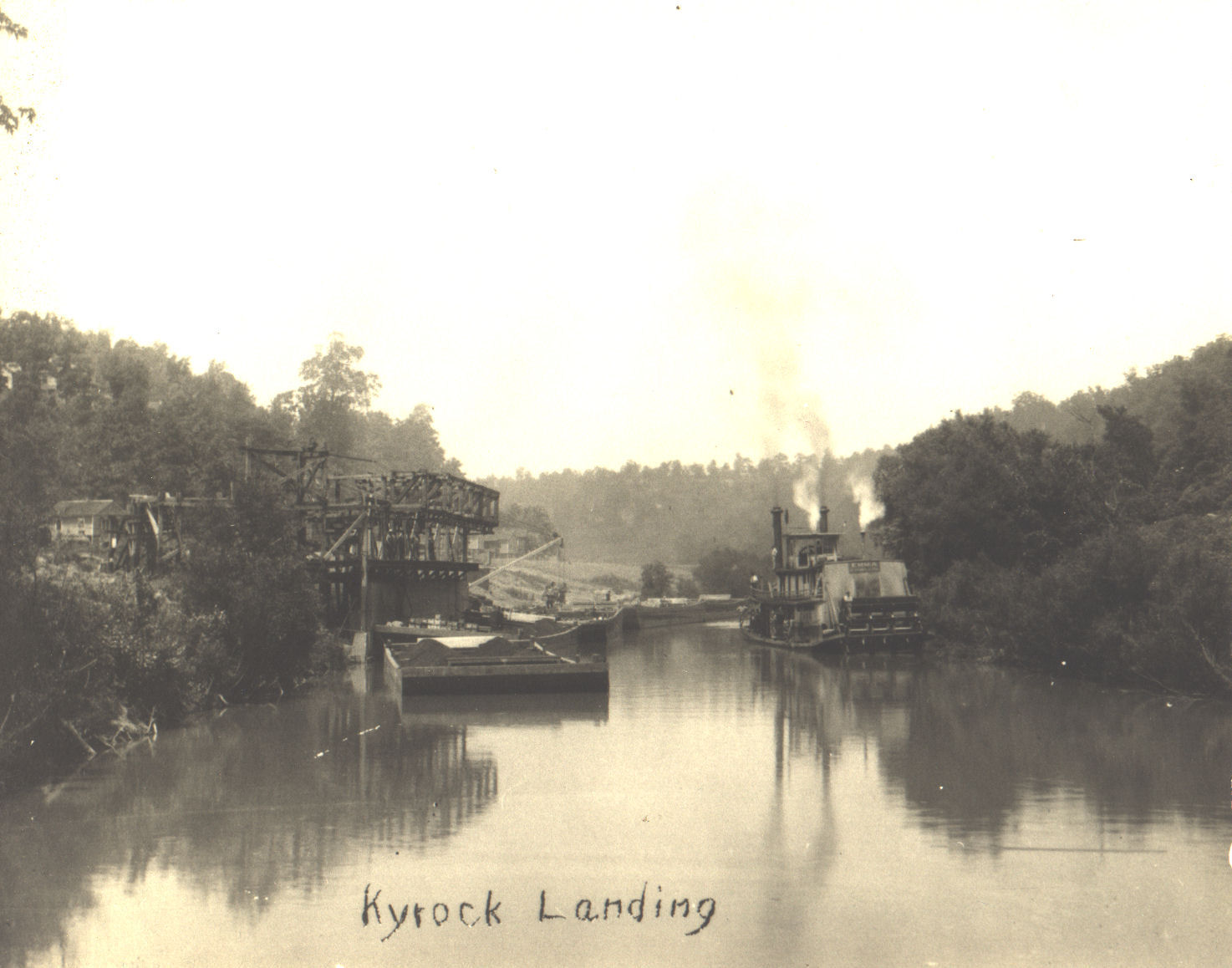
Steamer (towboat) Emma, built 1923 on the Nolin River at KYROCK Landing, heading upstream.
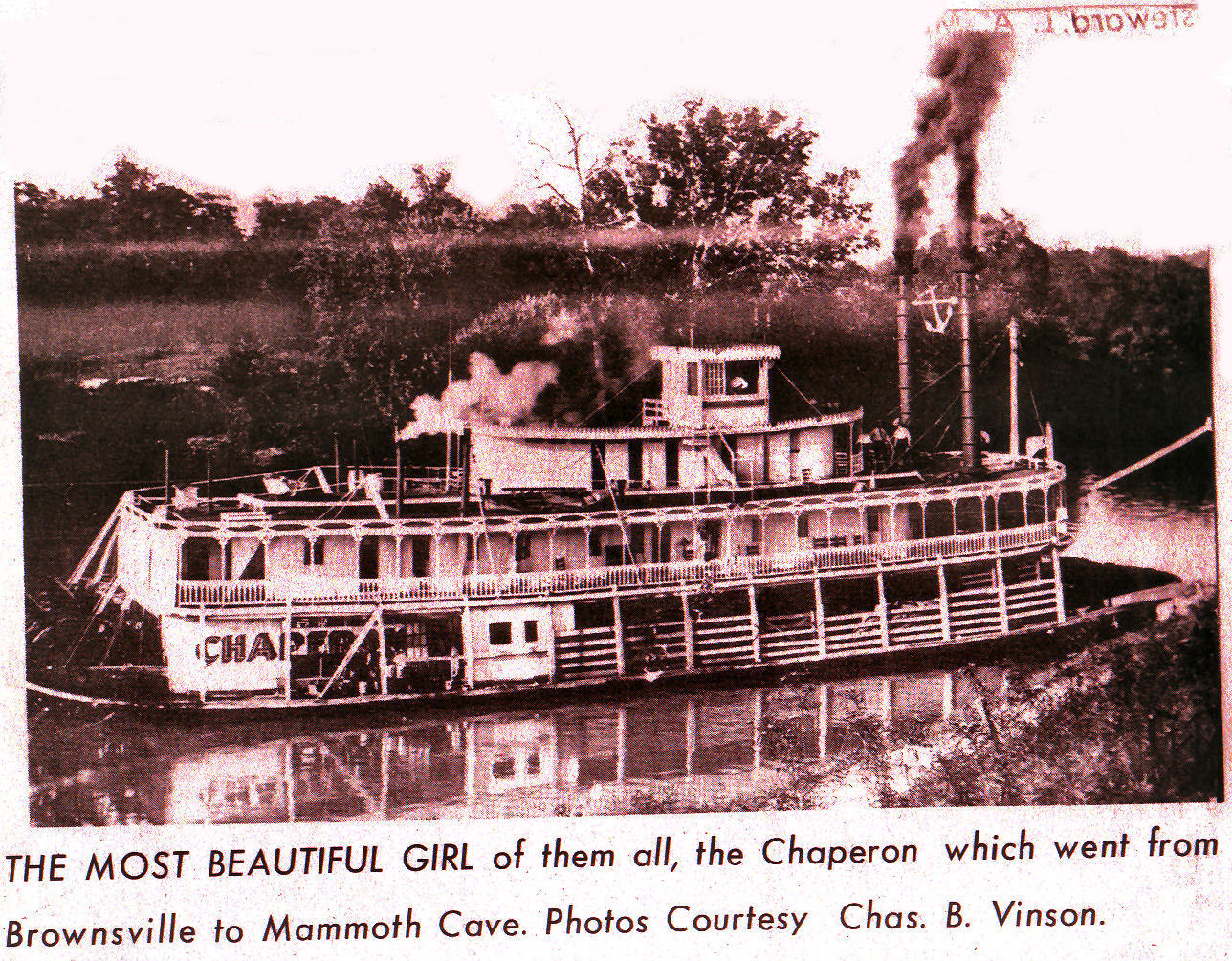
Steamer Chaperon on the Green River.

ROUGH RIVER LAKE - KENTUCKY (from: Kentucky Boater's Almanac)
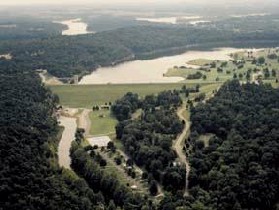
Rough
River Lake webpage with USACE
USACE Rules & Regulations for Rough River Lake
Project
Lake Temperatures
Lake Statistics
Pools of Record
Fact Sheet
News Release (16 February 2005)
Rough River Lake Subdivision Listing
Rough River Lake Shoreline Zoning Map
Draft Shoreline Management Plan, Barren, Nolin, and
Rough River lakes
Rough River Lake Data
Rough River at Recreation.gov
"Rough River Lake was designed and built by the Louisville District of the U.S. Army Corp of Engineers. The lake serves
as a unit of the comprehensive plan for the Ohio River Basin to effect reduction in flood stages downstream from the
dam. The lake provides water supply and serves to augment low-flow conditions downstream in the interest of water
quality control. In addition, the lake provides general and fish wildlife recreation.
The lake was authorized by the Flood Control Act of 1938. Construction was initiated in November 1955 and the project
became operational in 1961. Rough River Lake lies within the "Clifty" area of the Pennyroyal Region of Kentucky. The
term "Pennyroyal" or "Pennyrile," used interchangeably, denotes and area exceeding 11,000 square miles. The name
derives from a plant of the mint family which grows profusely throughout the area. The Clifty area comprises the
western edge of the Pennyroyal region and was carved by streams through alternating layers of sandstone, shale and
limestone, formed in shallow seas of the remote geological past. These rock layers have been assigned by geologists to
the Chester Series of Late Mississippian Geologic Age, a period estimated to have existed about 300,000,000 years
ago.
A wide variety of recreational opportunities and facilities has been provided for visitor enjoyment by the Corps and the
Commonwealth of Kentucky. Visitation at the lake now exceeds two million visitor days annually. The joint management
policies of the Corps and the Kentucky Department of Fish and Wildlife are designed to maintain and enhance the fish and
wildlife aspects of the Rough River Lake Project.
Rough River State Resort Park located at the lake is open year-round and typifies the fine facilities that are provided
for visitors to the Kentucky State Parks System. Information on rates and reservations can be obtained by calling toll
free 800-372-2961, or by phoning the lodge direct at 502-257-2311, Falls of Rough, Kentucky.
Water Safety is a personal matter. Check your equipment to make sure that it is in working order, observe the
rules and regulations on boating, and observe the three "C's" of water safety...Courtesy - considering how your
actions will affect you and the others who are using the water... [Un] Common sense - using your head and
avoiding those foolish and often fatal mistakes of improper equipment or taking chances that result in tragedy...
Confidence - the art of knowing what to do because you have taken time to learn how to do it. Know your boat,
its equipment, and your own abilities. Do not exceed the capability of any of these items.
Elizabethtown (first known as Hynes Station) was settled in 1780 and Hardinsburg (known as Hardin's Station) was settled
in 1781. The farmland of Rough River was not developed until 1810, at which time George Eskridge, a Revolutionary War
soldier, built a cabin and settled near the present location of the dam. Benjamin Sebastian, also a Revolutionary War
soldier, built a water-powered grist mills and sawmill at Falls of Rough in 1813. Sebastian was a prominent political
figure, a Spanish agent, and a judge on the first Kentucky Supreme Court from 1792-1806. In 1829, Sebastian sold the
property to Willis Green, who served two terms in Congress.
The Abraham Lincoln Birthplace National Historical Site lies to the east of Rough River Lake; Nolin Lake and Mammoth
Cave National Park are to the southeast. All are less than fifty miles distance from the lake.
HUNTING, FISHING, AND TRAPPING are permitted in accordance with applicable Federal, State, and local laws or
regulations." Source: The Kentucky Boater's Almanac, 1993.
Project Purpose and Facts
Rough River Lake was authorized under the Flood Control Act of 1938. The Louisville District of the U.S. Army Corps of
Engineers designed, built, and operates the project to reduce flood damages downstream from the dam. The dam is in
Breckinridge and Grayson counties, about 6 miles upstream from Fall of the Rough on Rough River.
During the fall and winter months, when excessive rainfall is likely, the lake is kept at a relatively low level
referred to as winter pool. Should heavy rains occur, surface water runoff is stored in the lake until the swollen
streams and rivers below the dam have receded and can handle the release of the stored water without damage to lives or
property.

ROUGH RIVER (from: The Kentucky Encyclopedia)
"ROUGH RIVER. The Rough River, which rises in Hardin County in north-central Kentucky and forms the boundary
between Breckinridge and Grayson counties, is a tributary of the Green River. The Rough River enters the Green at
Livermore, Kentucky in McLean County. After the Barren River, the Rough is the largest tributary of the Green River.
As early as 1810 the Kentucky legislature declared the Rough River navigable and later approved the first bridge over
the river at Hartford in Ohio County. Hartford became the center of Rough River navigation after passage of the River
and Harbor Act of 1890, which provided for the concrete lock that was completed in 1896. Rough River shipping, mainly
timber products, peaked in about 1900. The Rough River Lake, part of the state resort park, was created in
the 1960s for flood control and recreation." The Kentucky Encyclopedia written by Helen B. Crocker.

Rough River History (from: Steamboats on the Green)
"ROUGH RIVER. Rough River is the second largest tributary of the Green [River]. In 1838, the Kentucky Board of
Internal Improvements authorized a project to improve Rough River for flatboat navigation. Joseph Wilson and Harrison
D. Taylor were awarded a contract to clear the stream from Hartford to Falls of the Rough. There were always
influential men interested in getting slack water all the way to Hartford, just as there were on the Barren and Green
[Rivers]. The Rough River Navigation Company in 1856 was incorporated to build a lock and dam. It provided
regular boat traffic and was a great advantage to Ohio County.
Soon the Hartford Commercial Club began to the operation of boats, most of which belonged to local men.among them
Captain J.W. Ford, William N. Moore, James F. Carson, and A. Dyer White. There was the Hartford and Evansville
Packet Company, with Captain James W. Ford, President; T. L. Griffith, Vice President and R. L. Simmerman, Secretary
and Treasurer. They bought the Scioto in New Albany and she was used extensively by Hartford and Ohio
County people, for travel as well as for freight for the merchants. The Scioto was a good-sized boat,
being 94 feet long, with a nineteen foot beam. She had no trouble getting through the lock, but turning around after
she goat to Hartford was the big problem, especially when the river was a little low. It took a lot of dredging and
even then the deck hands had to get out the shovels and excavate some of the bank to get her headed downstream.
In 1900 the Scioto was sold to someone on the Mississippi, and she ran out of Vicksburg for six years.
While she was backing away from the landing on 8 January 1906, she struck a coal flat and sank in eight feet of water.
Some of the other boats that ran the Rough were the Repose (City of Hartford), Plankshaw, Rosie
Bell, We Three, Princess, Little Dago, and Schroeter's Floating Studio.
The We Three was destroyed by fire on 15 February 1909, while enroute from Evansville to Hartford. She
was carrying a heavy load of freight. Both the cargo and the boat were complete losses, and that marked the end of the
town's steamboat enterprise. The Little Dago could only carry six, including the crew, but she was a
great help in meeting the though boats at Livermore with passengers and freight.
Schroeter's Floating Studio was noted for the high quality of the work which adorned the mantels and walls
of homes all up and down the rivers. He always claimed the reason was because he used an old fish box in the flowing
water of the river for his washing solution. He must have had the patience of Job. I have a faint memory of a session
at our house. My father wanted a picture of me, age three, and Bruce, our St. Bernard. I did not want to sit still,
and Bruce was made because I had been scolded. His ears were laid back and he looked angry. Mr. Schroeter patted him
on the head, and he looked better, but his big bushy tail would not stop wagging. There was nothing wrong with the
work, but both subjects looked very unhappy. When I was older, we went to the studio on the river at Hartford when we
went to the Ohio County Fair.
Rough River had many log rafts and sent much find lumber to market. It was estimated in 1884 that 25,000 sawlogs and
five million feet of dressed lumber was shipped on Rough River. (Army Engineer's Statement, 1975, Page 16).
A flood-control reservoir was built on the upper reaches in 1958 [Rough River Lake Dam] by the Army Engineers at a cost
of ten million dollars. The lake is about thirty miles long in Grayson and Breckinridge Counties. The dame is six
miles upstream from Falls of the Rough, and it 125 feet high and a little more than 1500 feet across. It is now one of
Kentucky's state parks.
The confluence of the Rough River with the Green [River] is at Mile 71, at Livermore. Hartford is at Mile 29 on the
Rough River. The late R. U. Thomas, Jr., was Congressman from the district from March, 1908, until his death in 1935.
He was always interested in anything to help the constituents in the valley, especially if it affected the rivers. He
had two sisters who lived in Livermore--one was Mrs. A. M. Hackett. Captain Arthur M. Hackett worked on several of
the packets on the river, and for several years was clerk on the Evansville. The other was Mrs. Ollie James,
whose husband was a senator from another district. Ollie James and Bob Thomas were both highly respected members of
the United States Senate and House and both were always interested in the natural resources of the county.
The little community of the Falls of the Rough in the upper reaches of Rough River was the ancestral home of the
Greene [Green] family of steamboat fame. A large old mill with a huge waterwheel was still grinding grain a few years
ago, and a country store and post office served the people in the area. The mill and the old house were built by
Willis Greene in 1823 and some of the family have lived there ever since. Miss Jennie Greene lived in the beautiful
old home with its fine wood carvings and antique furniture until her death a few years ago. She willed the place,
between two and three thousands acres, to a young cousin living in Texas. Mrs. Mary O'Neil and her large family now
occupy the old home. The post office and store are closed, and tours of the mill are no longer available.
I recall seeing an old roll-top desk in the back of the store, and was told that in early days of the family's boating,
their entire steamboat business was carried on from that old desk.
Some of the famous Green Line boats were the Gordon C. Greene, the Tom Greene,
and the Chris Greene. The Chris [Green] was serving not far away as the Dayton, Kentucky,
Boat Club when she burned. The Tom Green was bought by the Walkers at Paducah and converted to an office
and supply boat. The Gordon C. Greene had a colorful career, finally sinking in a flood in 1967 at St.
Louis, and she was dismantled. The beautiful old Delta Queen is still making regularly schedule trips on
the big rivers.
Senator James told of one of his constituents visiting him in Washington one day. The Senator took him to an elegant
restaurant for lunch, where the specialty on the menu that day was corn on the cob. The man really enjoyed it, and ate
little else. James ordered a second serving and an extra plate to take care of the cobs. When he was paying the bill,
the man tried to apologize for having eaten so much. Mr. James said, "Think nothing of it, Bill, but next time you come
to Washington, remind me to take you down to Jake Herndon's livery stable, and I will save money". Ollie James got his
money's worth out of that mess of "roastineers" every time he ran for office.he told it over and over.
Navigation above Rough River Lock (Mile 7) was terminated in 1940, as it was at Lock 5 and 6 on the upper Green [River],
and Barren [River] in 1965. Rough River saw her last traffic in 1940. The facility was released to the City of
Hartford in 1959 for use as their city water supply.
The Queen of Dycusburg was built in 1928 at Paducah for the Paducah-Dycusburg trade up the Cumberland River. She
was owned by Fred Joyce of Paducah, who operated her until 1934. She was 64.9 by 21 by 4.1 feet. Joyce sold her to
C.E. Kennedy of Memphis. She was in the lower Mississippi trade commanded by Captain Ad A. Powell.
Captain Thomas A. Williams of Evansville bought her and made her into a towboat for Green River. In 1941 the ownership
passed from Williams to James R. Hines, of Bowling Green, who used her in Green River trade until 1947. She was last
listed in "merchant Vessels of United States" in 1948. She was then sold to Idle Hour Boat Harbor of Cincinnati, where
she was converted to a yacht club in the Cincinnati harbor. (Waterways Journal, 3 July 1965)." Source:
Steamboats on the Green.

Railroad History (from: Ghost Railroads of Kentucky)
"CHAPTER 16
'In Breckinridge, Ohio, and Hancock'
Irvington to Hartford
(Louisville & Nashville Railroad)
Cloverport to Victoria
(Breckinridge Coal Road)
The building of the "Texas" (Louisville, St. Louis & Texas Railway) along the Ohio River from
Henderson east to West Point (with trackage rights from that point into Louisville) was the
inspiration for the construction of a number of lines running into the interior of the state. One
of these was the Louisville, Hardinsburg & Western Railway, chartered 24 February 1888.
Construction started at Fordsville and during 1890, 17 miles were constructed from that point to
Jolly (later known as McQuady) as well as the five mile Falls of Rough Branch.
On 6 July 1891, the road was completed to Irvington and a junction with the "Texas." The
Louisville, Hardinsburg & Western Railway (LH&W) consisted, then of a 41 mile main line
from Fordsville to Irvington, the five miles Falls of Rough Branch, and a 1.7 mile branch
from a junction to Hardinsburg, the county seat of Breckinridge County. As each portion of the
road was finished, the operation was assumed by the "Texas." On 6 August 1892, the Louisville,
St. Louis & Texas purchased the Louisville, Hardinsburg & Western [Railway].
The Louisville, St. Louis & Texas Railway went into receivership, 7 August 1893. A
foreclosure sale followed and on 1 June 1896, the properties began operation as the Louisville,
Henderson & St. Louis Railway. On 1 April 1905, the LH&StL completed its own track
from near West Point into Louisville, and later in the same year the L&N purchased a majority of
the stock of the company. Thus the Louisville, Hardinsburg & Western came into the L&N
fold.
On 1 July 1905, the L&N incorporated the Madisonville, Hartford & Eastern. On 4 January
1910, the 55.5 mile line from Como, [KY] in the heart of the western Kentucky coal field, east to
a junction with the Louisville, Hardinsburg & Western Railway trackage at Ellmitch, [KY]
was completed. It was the intention of the L&N to provide a more direct route from the coal
field to Louisville than the circuitous ones via Owensboro or Henderson. Unfortunately, this
plan proved impractical, largely due to the poor engineering evident in the construction of the
section of the Louisville, Hardinsburg & Western Railway between Ellmitch and Irvington.
The failure of the "short cut" plan of the L&N to materialize, the route became regulated to local
traffic that became less and less as the gasoline age extended its sway. On 15 June 1941, the
last train ran. The track was removed between Irvington and Fordsville [KY] (37.73 miles),
Dempster to Falls of Rough (4.45 miles), Junction to Hardinsburg (1.73 miles), and Ellmitch to
Hartford (19.22 miles). The dismantling was completed in July 1942, added impetus being given
this activity by the nation's then pressing need for scrap metal.
In the early 1850's, the Breckinridge Coal and Oil Company, an English firm, purchased and leased
several thousand acres of land underlain by cannel coal, centering around Keg Branch of Tar Creek
in southeastern Hancock County. Sixteen adits were driven into the hill and the resulting mining
community was given the name of Bennettsville.
A broad gauge (4'11") tram railway, seven miles long, was built to bring the coal from
Bennettsville to a point near the west end of Cloverport [KY] where the coal was to be loaded into
flatboats for shipment to New Orleans and transshipped to England.
Business boomed for a time but a combination of events including the Civil War caused a cessation
of the industry. The mine, the railroad, and other appurtenances of the company laid dormant for
almost 15 years. Finally a new organization was effected and in 1875 plans were made to establish
a colliery at the old workings and rehabilitate the railroad.
The rebuilding of the line was completed 6 December 1885. The length was 8.5 miles, and this time
the rails were laid to standard gauge. The weight of the steel, however, was 56', and there were
14 wooden trestles along the line. A wooden pile trestle pier carried the railroad out over the
river, and on the pier below the track was a tipple into which the cars dumped the coal.
Initially, the Breckinridge Coal Road had no railroad connections, but in 1889, the Louisville,
St. Louis & Texas Railway completed its line from Henderson to West Point and established its
principal shops in Cloverport. A track connection was made where the lines crossed. About 1891,
the English market for the coal failed, the tipple was discontinued and the entire output
henceforth went out by rail.
Passengers were carried in a home-made vehicle that resembled a LCL way car.
The Breckinridge Coal Road was never formally abandoned. Apparently the last trains ran in 1893,
but it was not until 1898 that the Breckinridge mines were permanently closed and the railroad
dismantled.
"
Ghost Railroads of Kentucky. Written by Elmer G. Sulzer. 1967, 1968, republished
1998. Indiana Press: http://iupress.indiana.edu/
Telephone orders: 800-842-6796. ISBN 0-253033484-5.

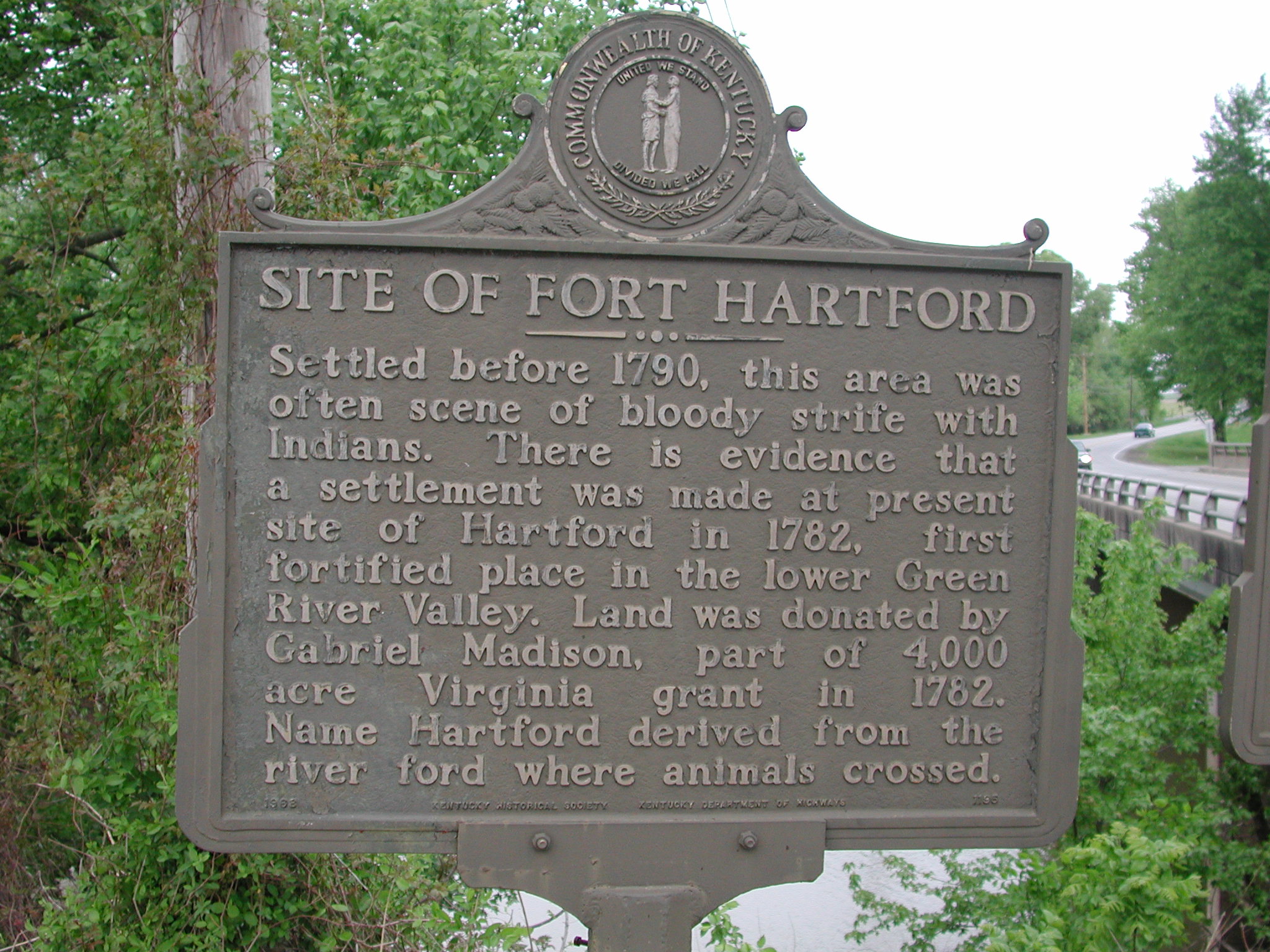
Hartford, Kentucky: historical marker at the Rough River Bridge and site of the former fort. The
site is presently used for the water treatment plant and downstream, out of sight from the bridge
is a weir that creates approximately a 12-14 foot channel depth upstream. The weir does not show
up on any navigational charts that I have been able to locate thus far. Night time
canoeing/boating is greatly discouraged downstream of this bridge until you reach the park. Photo
taken 23 April 2005
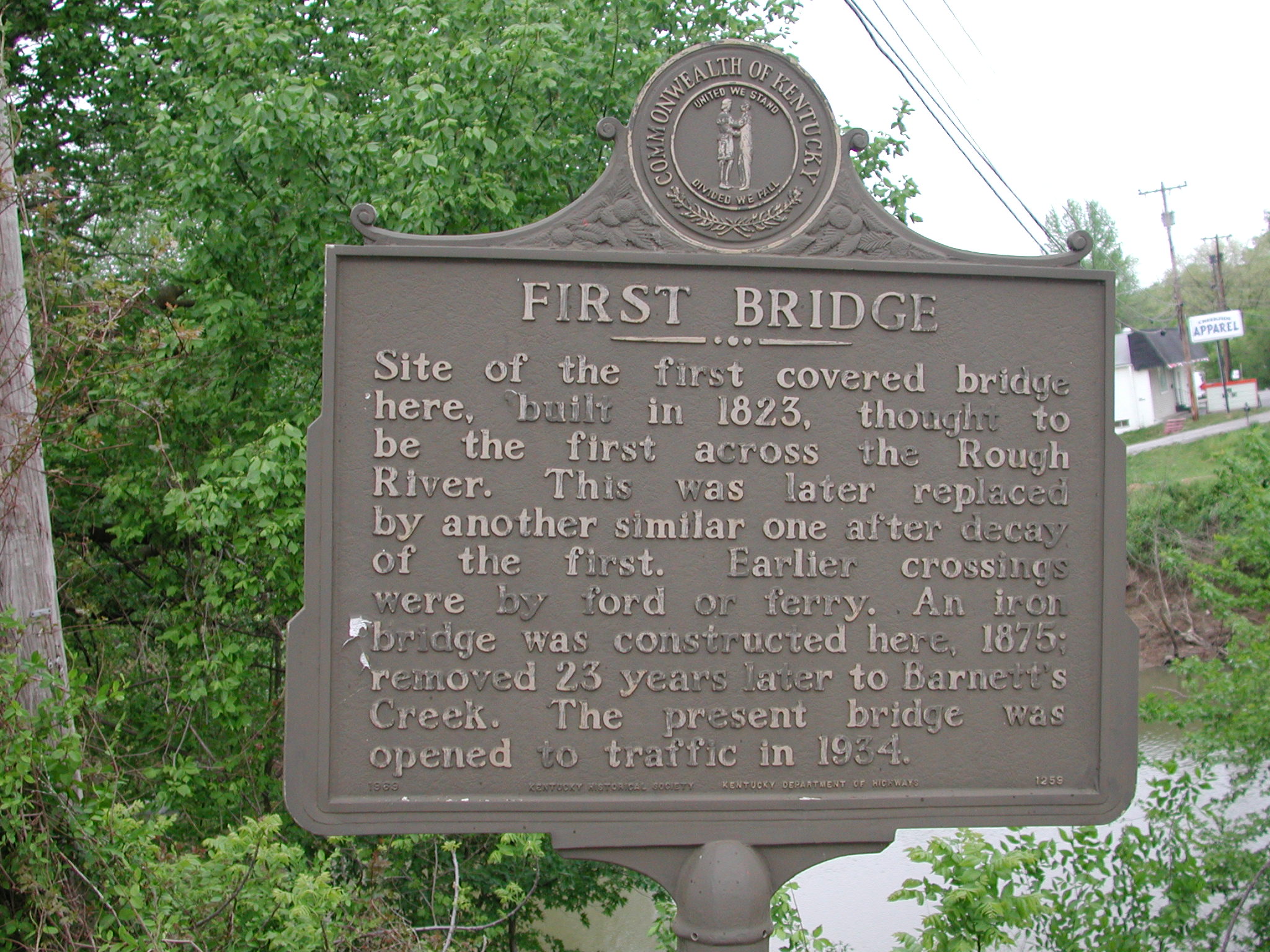
This historical marker is located immediately next to the one above at Hartfort, KY. Photo taken
23 April 2005
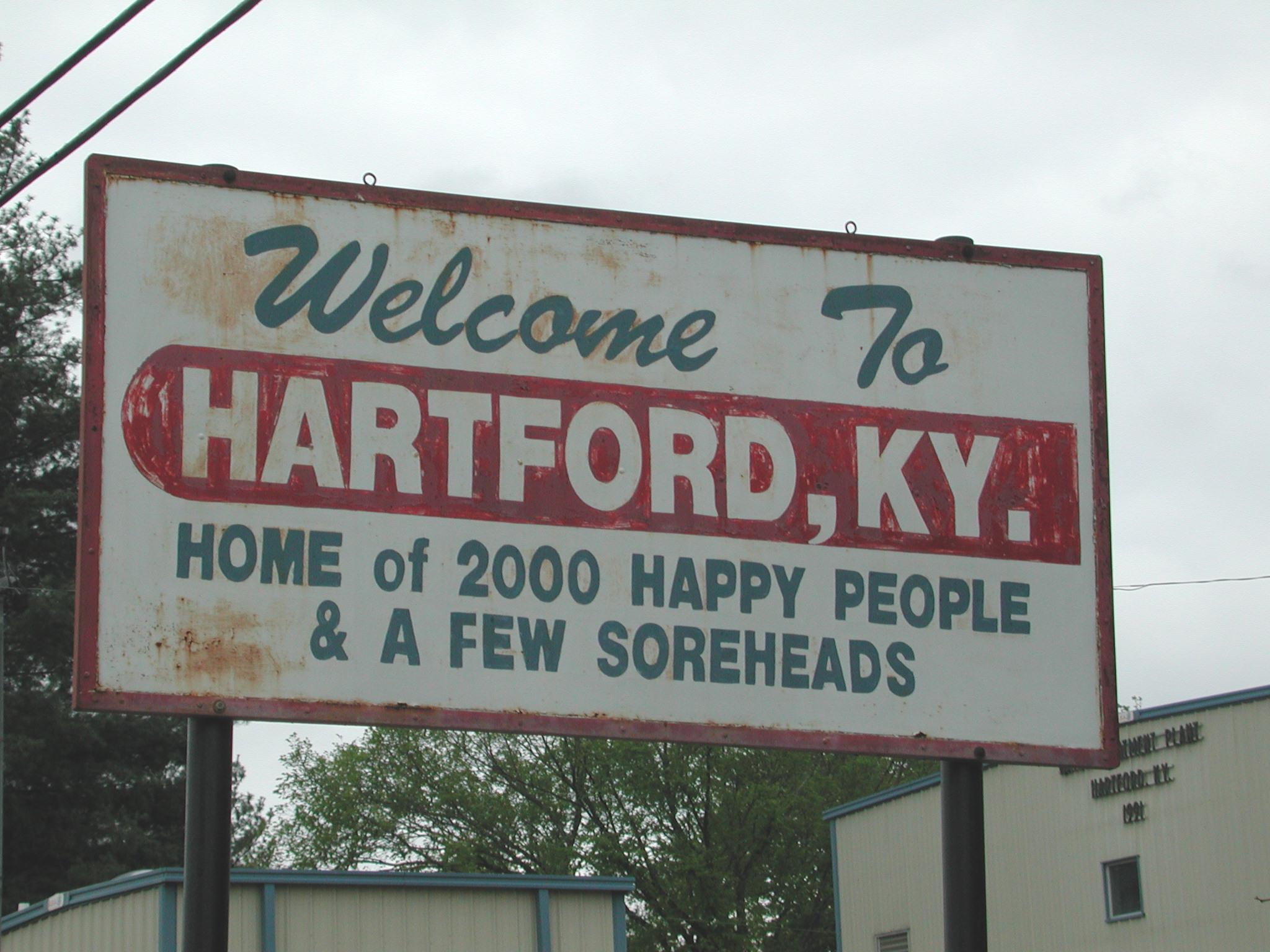
This sign is located next to the Rough River at Hartfort and you can see the water treatment
plant which was built in 1991. Photo taken 23 April 2005
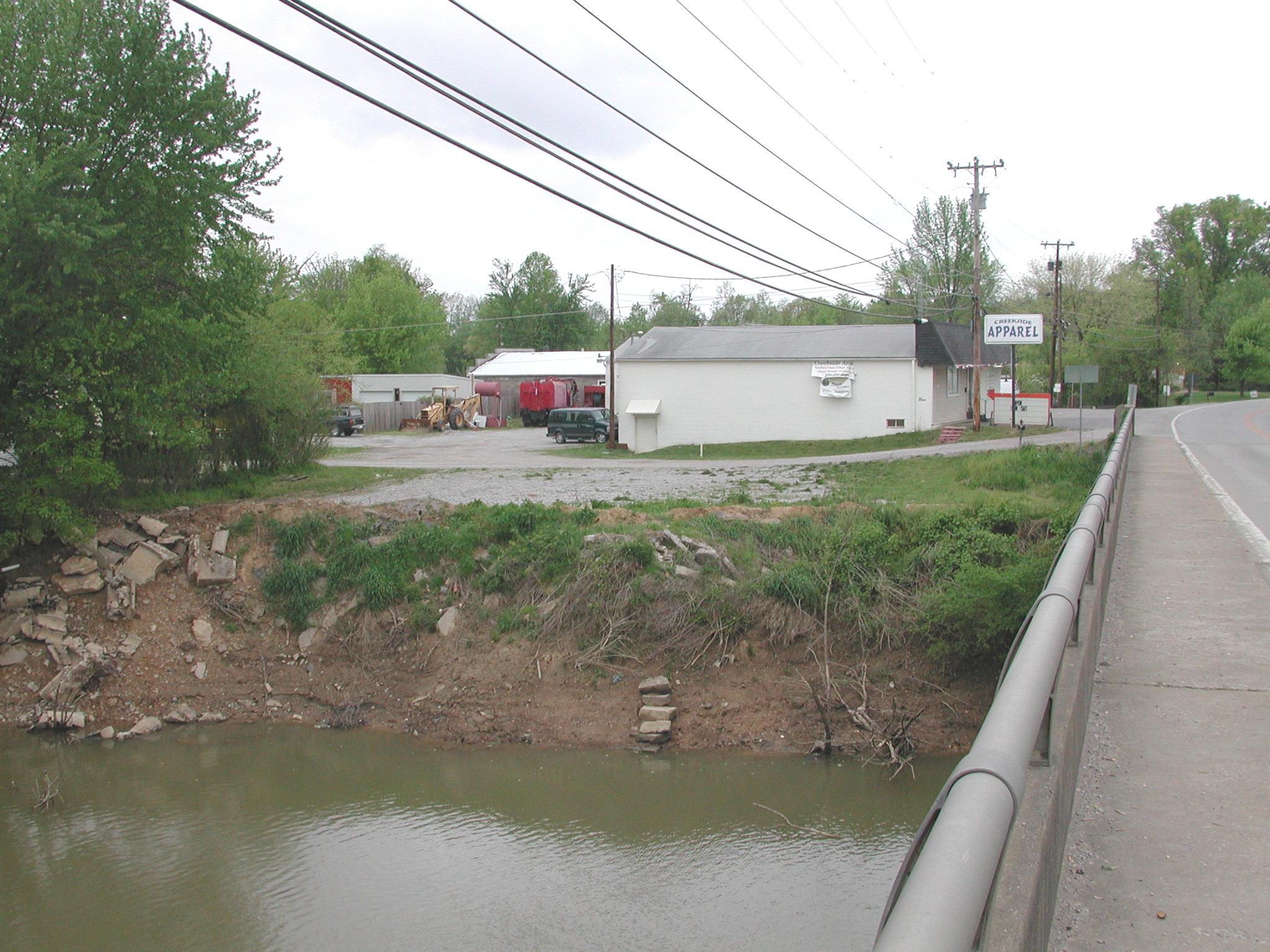
Rough River at Hartford, Kentucky. Photo of the bridge and right descending bank of the river.
Photo taken 23 April 2005
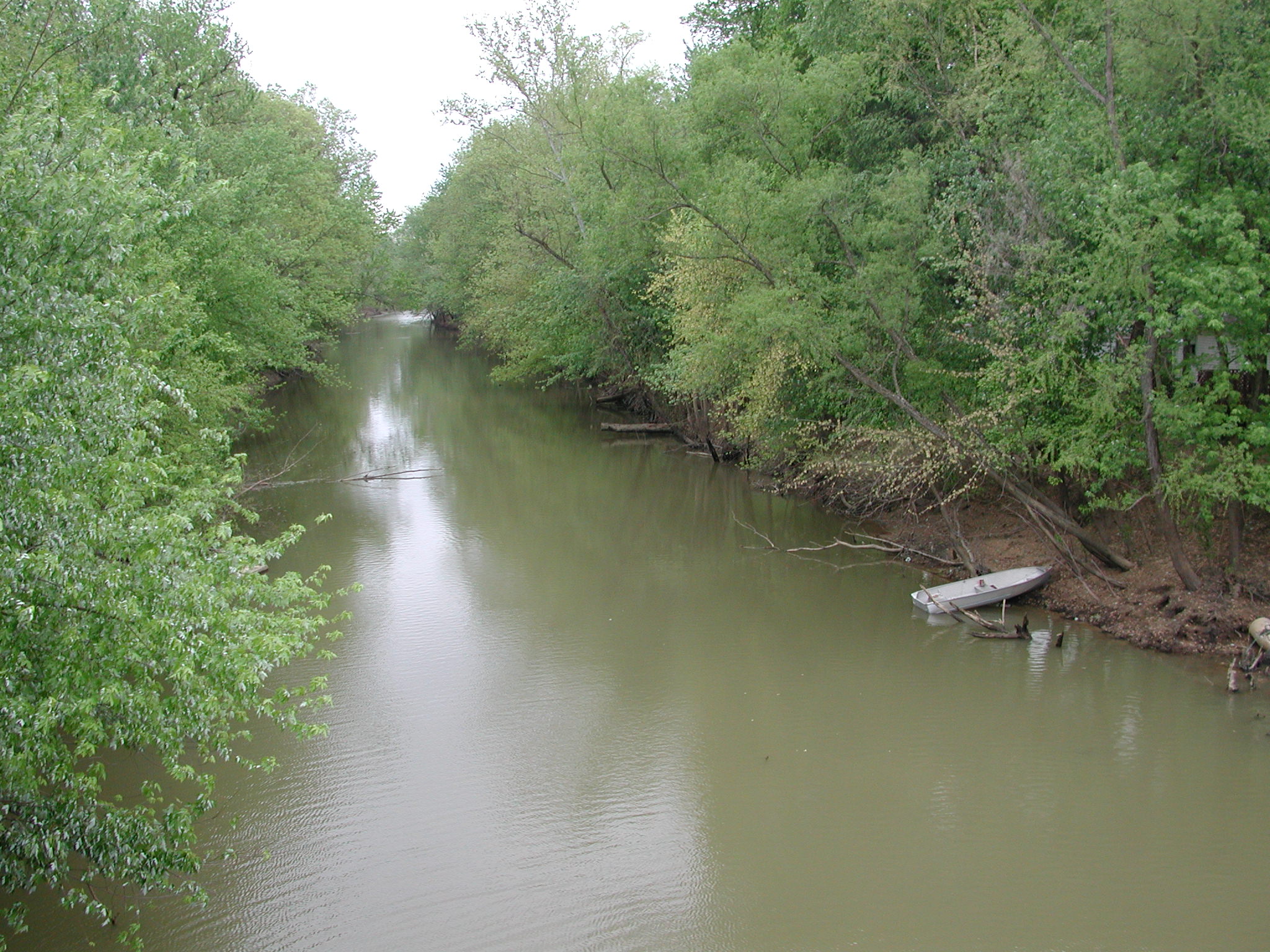
Rough River at Hartford, Kentucky. Photo taken of the river, looking downstream, from the
bridge. Photo taken 23 April 2005
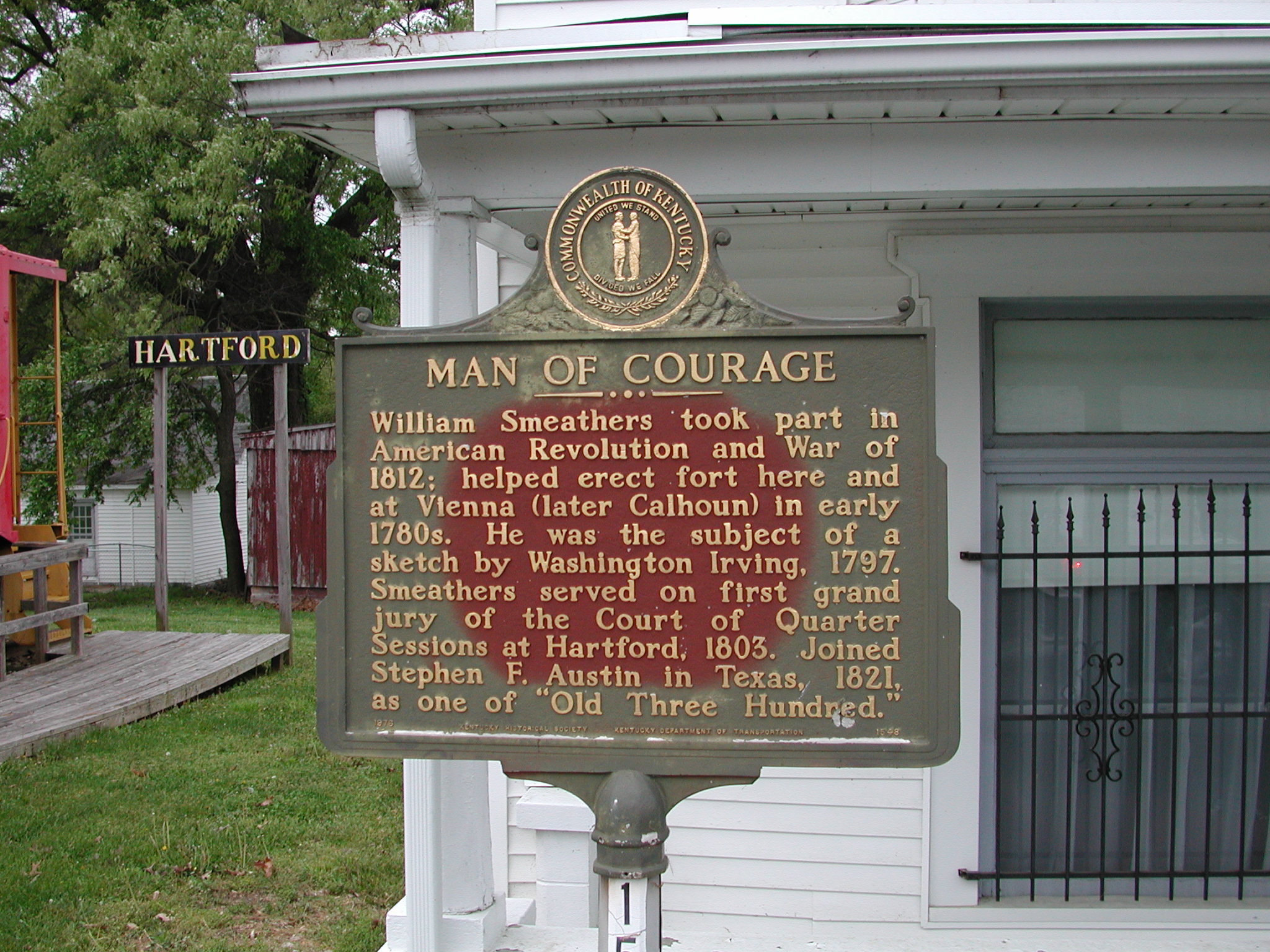
Historical marker in front of Ohio County Museum, Hartford, Kentucky. Photo taken 23 April 2005
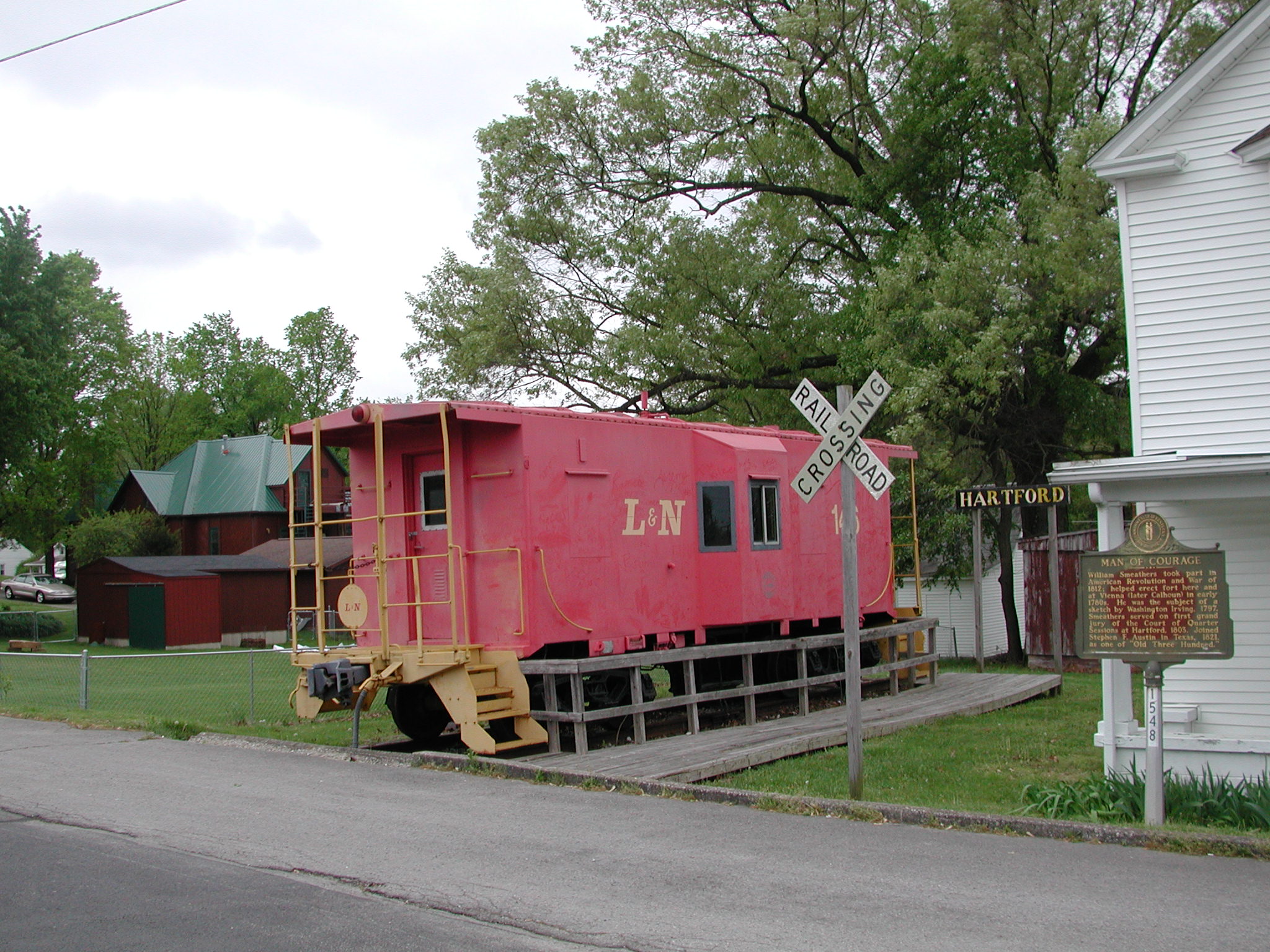
Historical marker and L & N Railroad caboose in front of Ohio County Museum, Hartford,
Kentucky. Photo taken 23 April 2005

Historical marker in front of Ohio County Museum, Hartford, Kentucky. Photo taken 23 April 2005
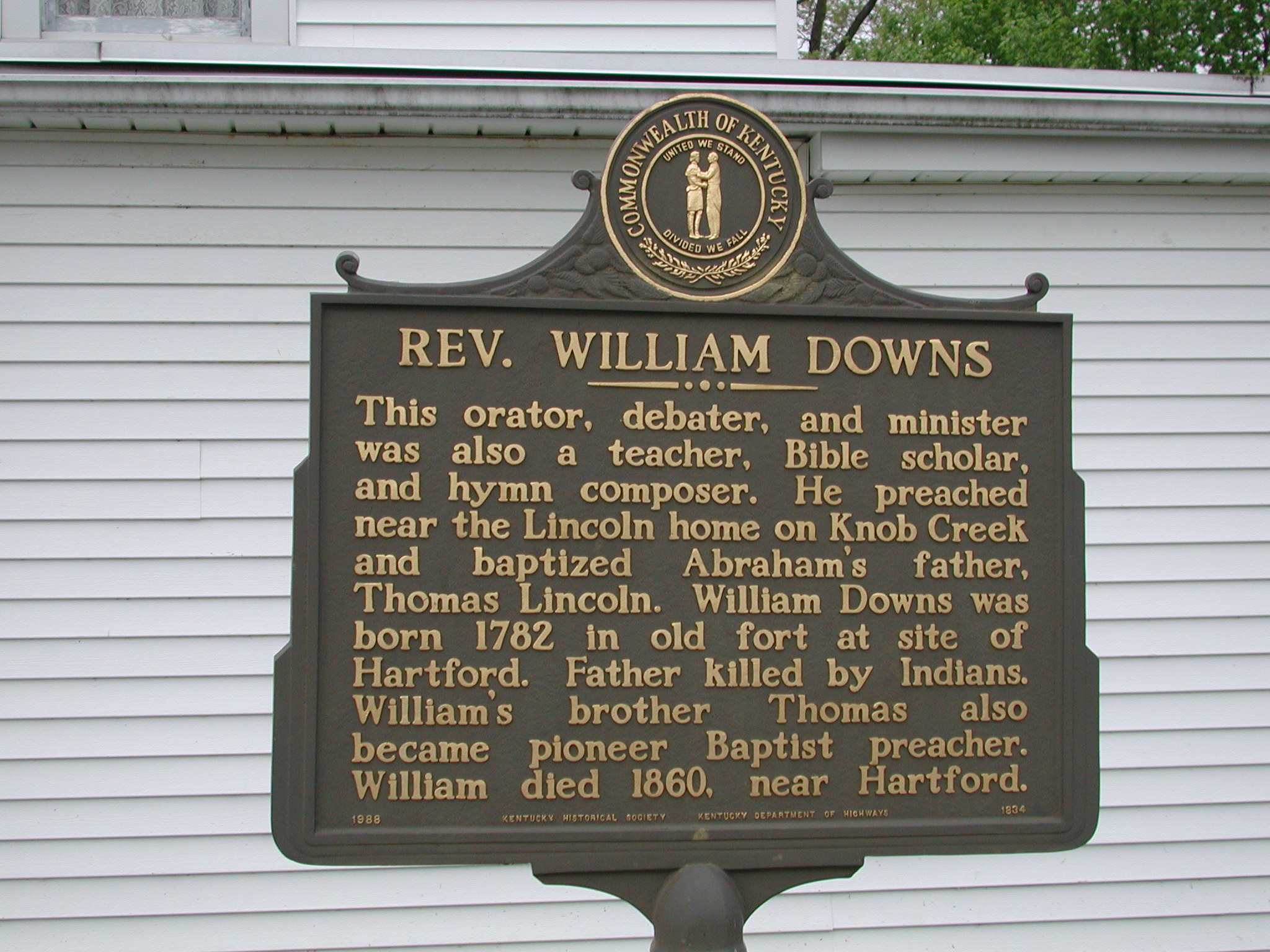
Historical marker in front of Ohio County Museum, Hartford, Kentucky. Photo taken 23 April 2005
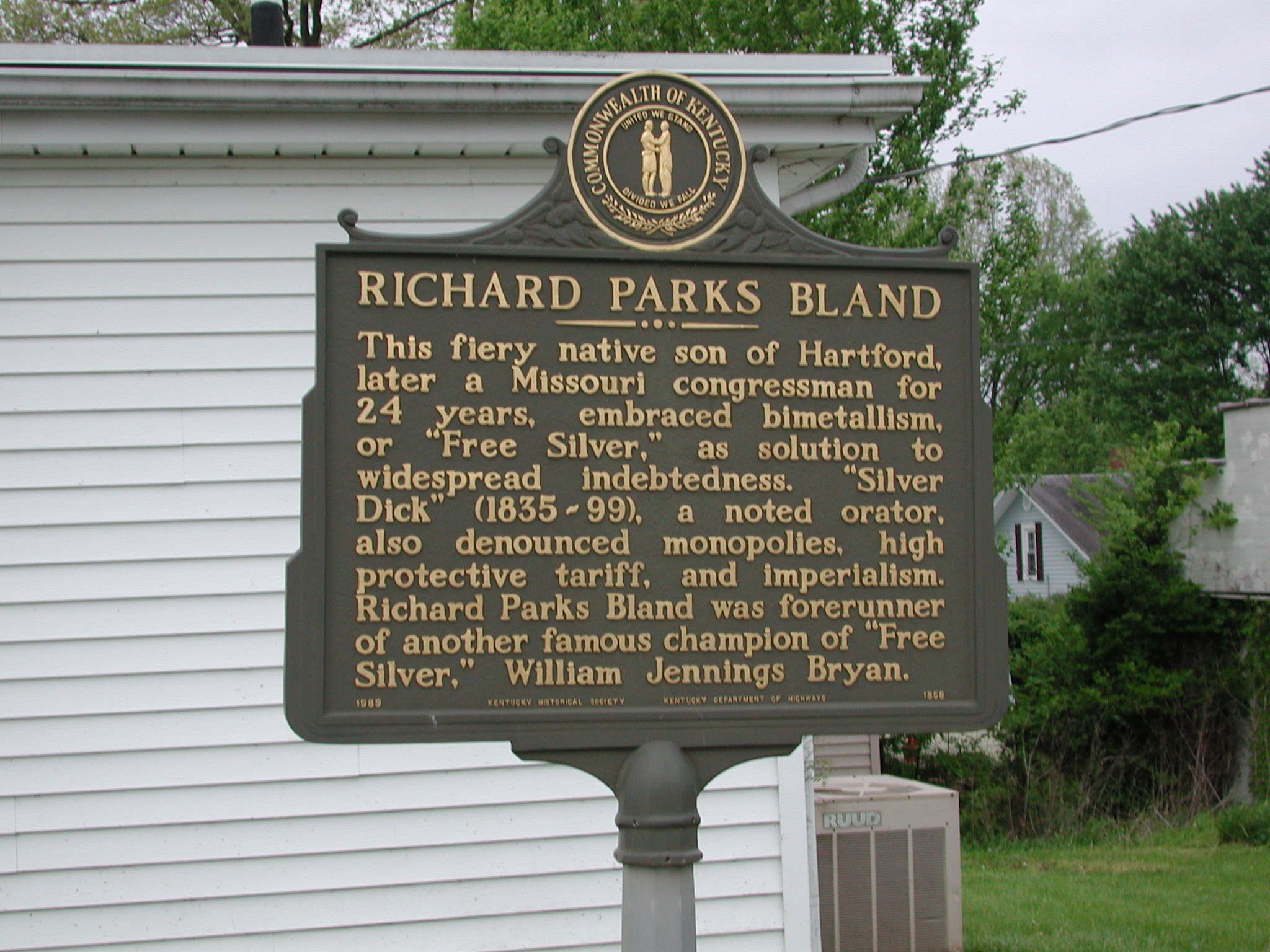
Historical marker in front of Ohio County Museum, Hartford, Kentucky. Photo taken 23 April 2005
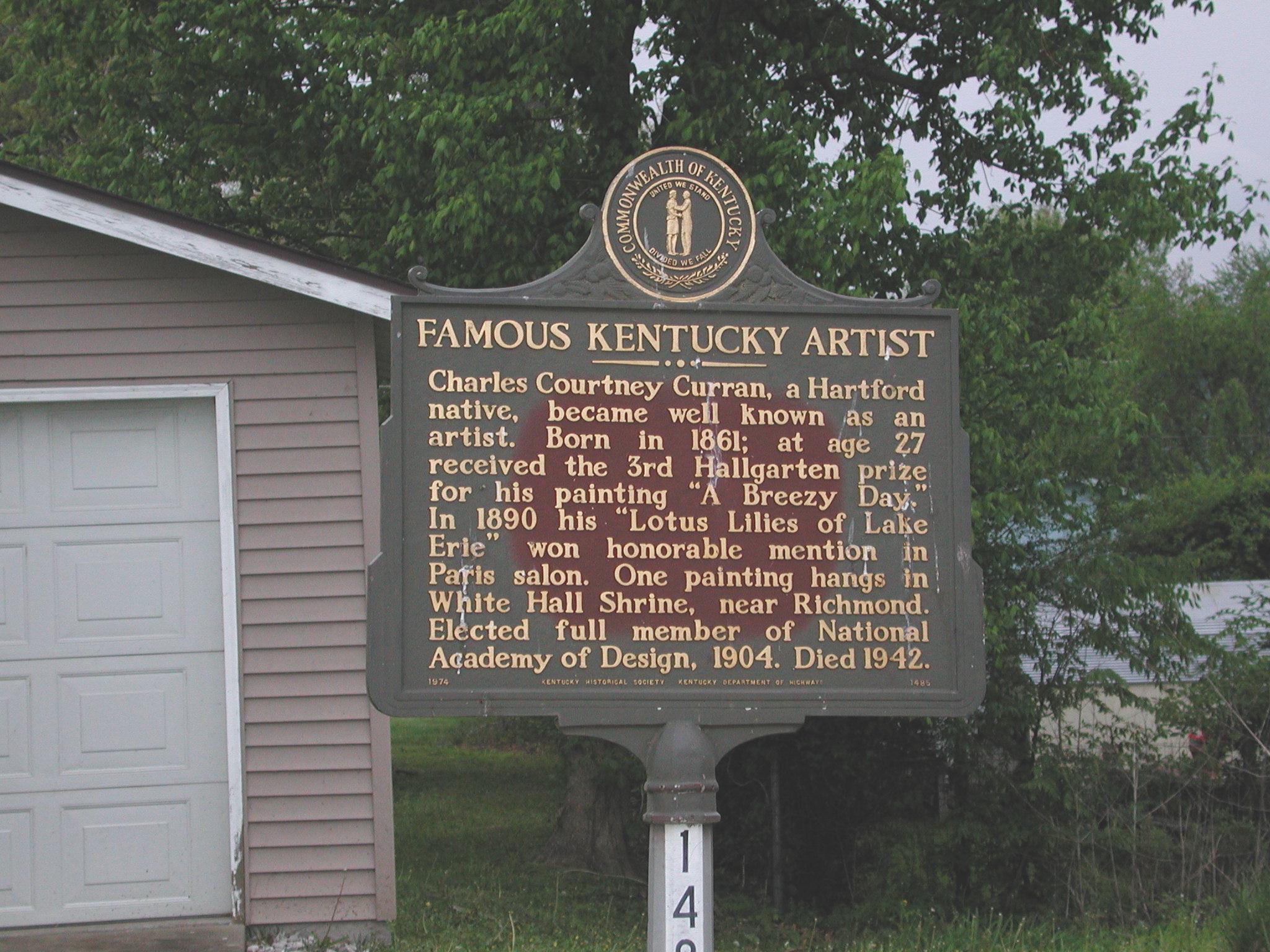
Historical marker in front of Ohio County Museum, Hartford, Kentucky. Photo taken 23 April 2005
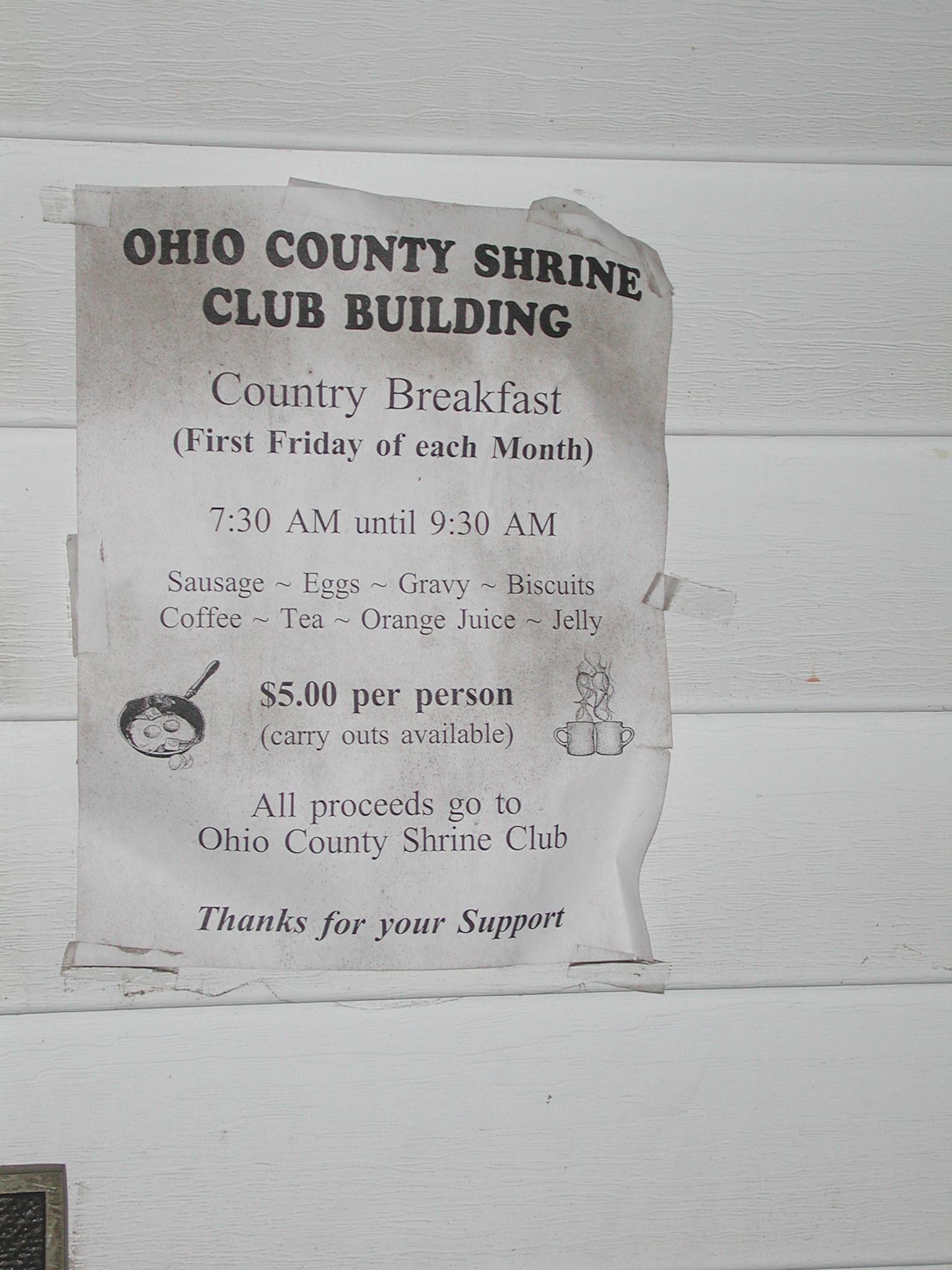
Ohio County Museum, Hartford, Kentucky. Photo taken 23 April 2005
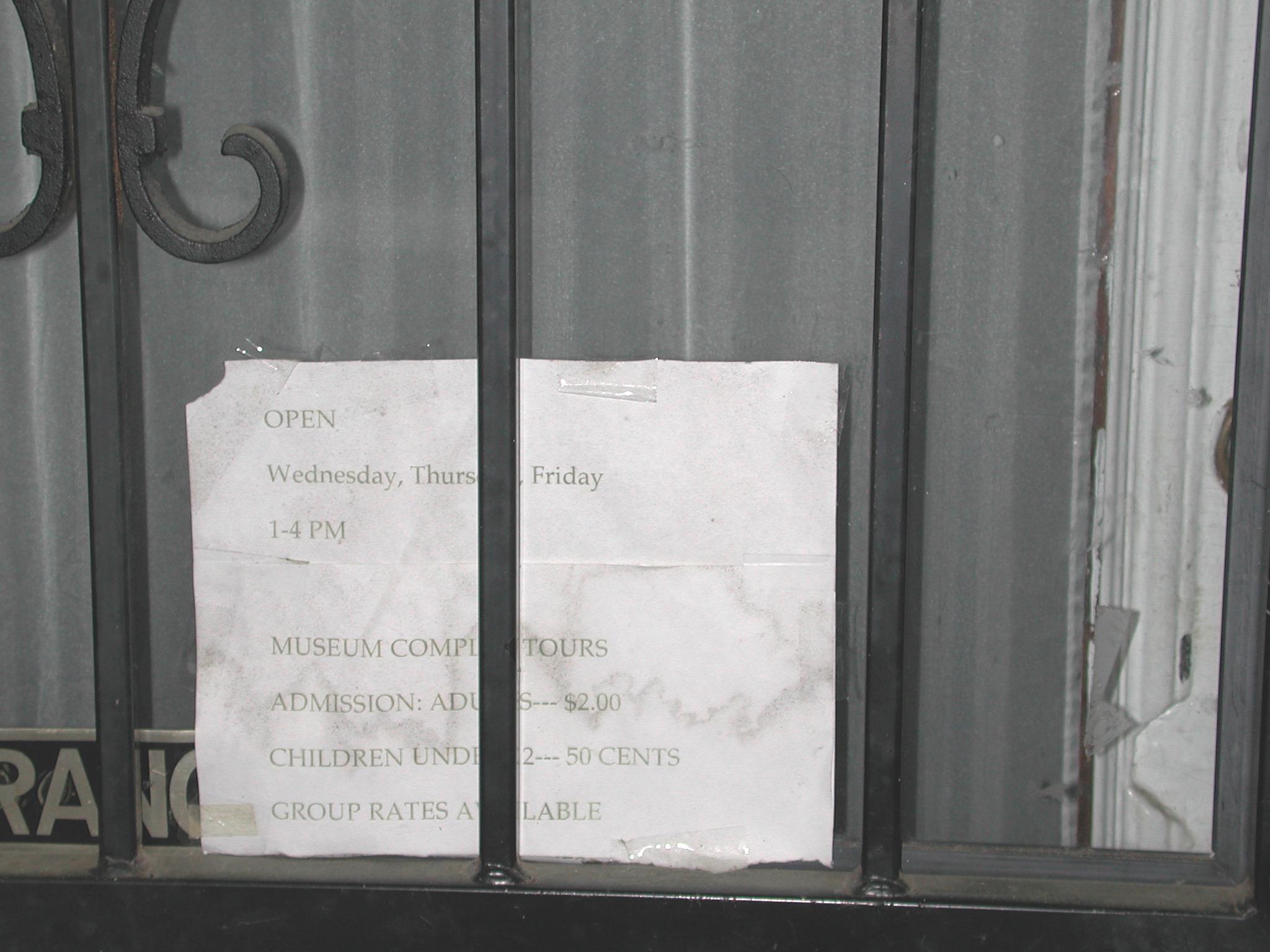
Ohio County Museum Hours, Hartford, Kentucky. Photo taken 23 April 2005
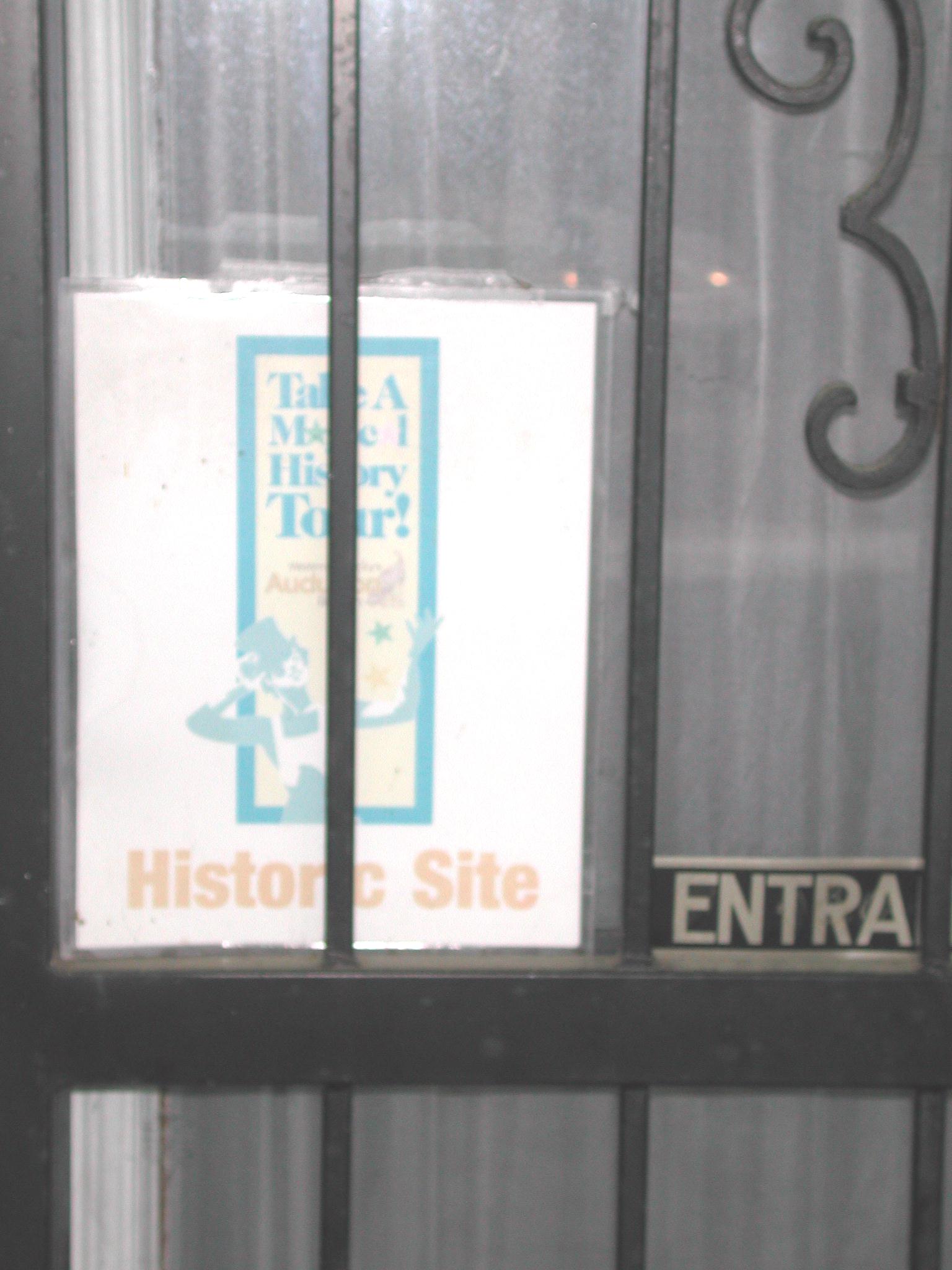
Ohio County Museum, Hartford, Kentucky. Photo taken 23 April 2005
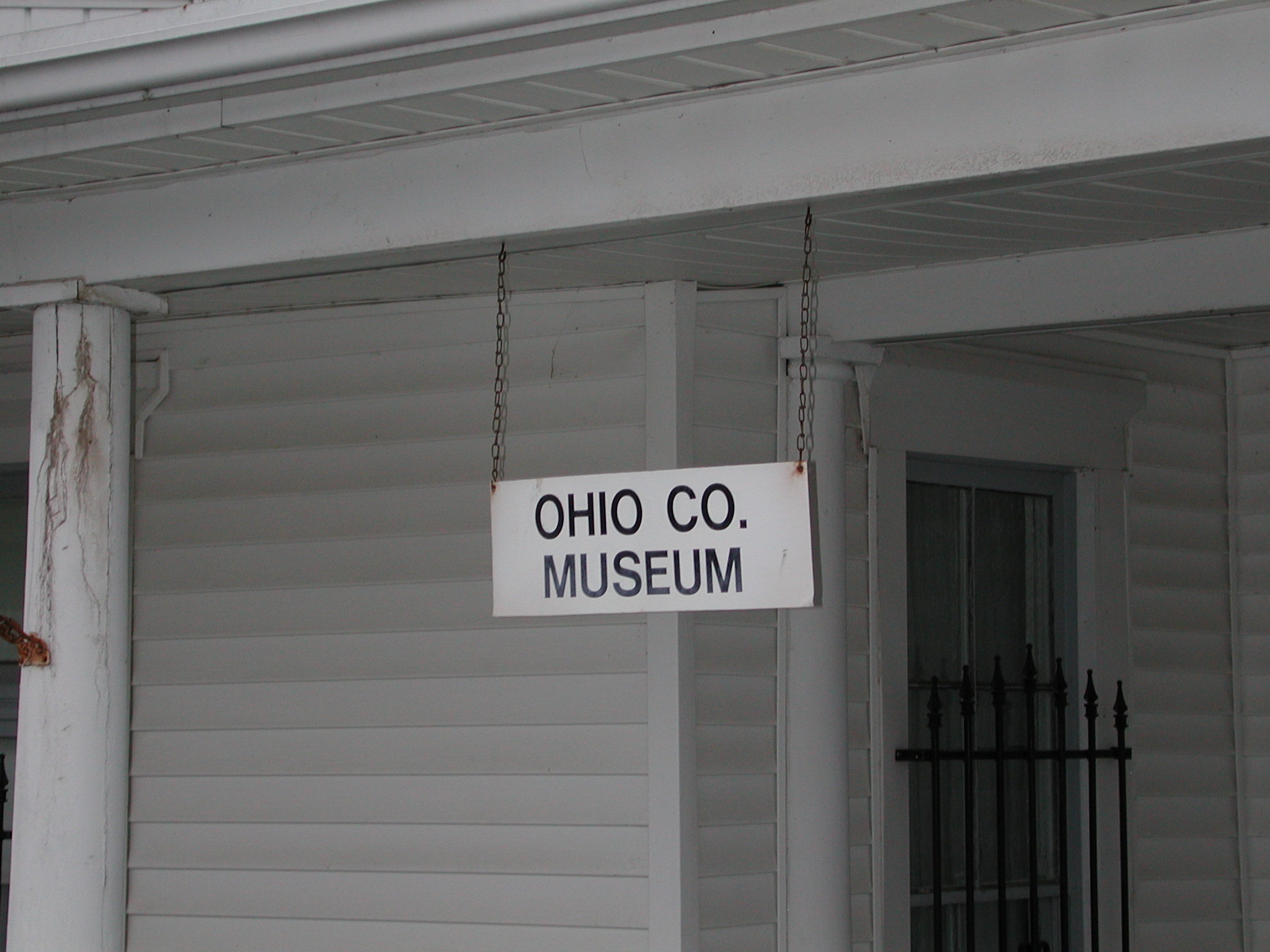
Ohio County Museum, Hartford, Kentucky. Photo taken 23 April 2005
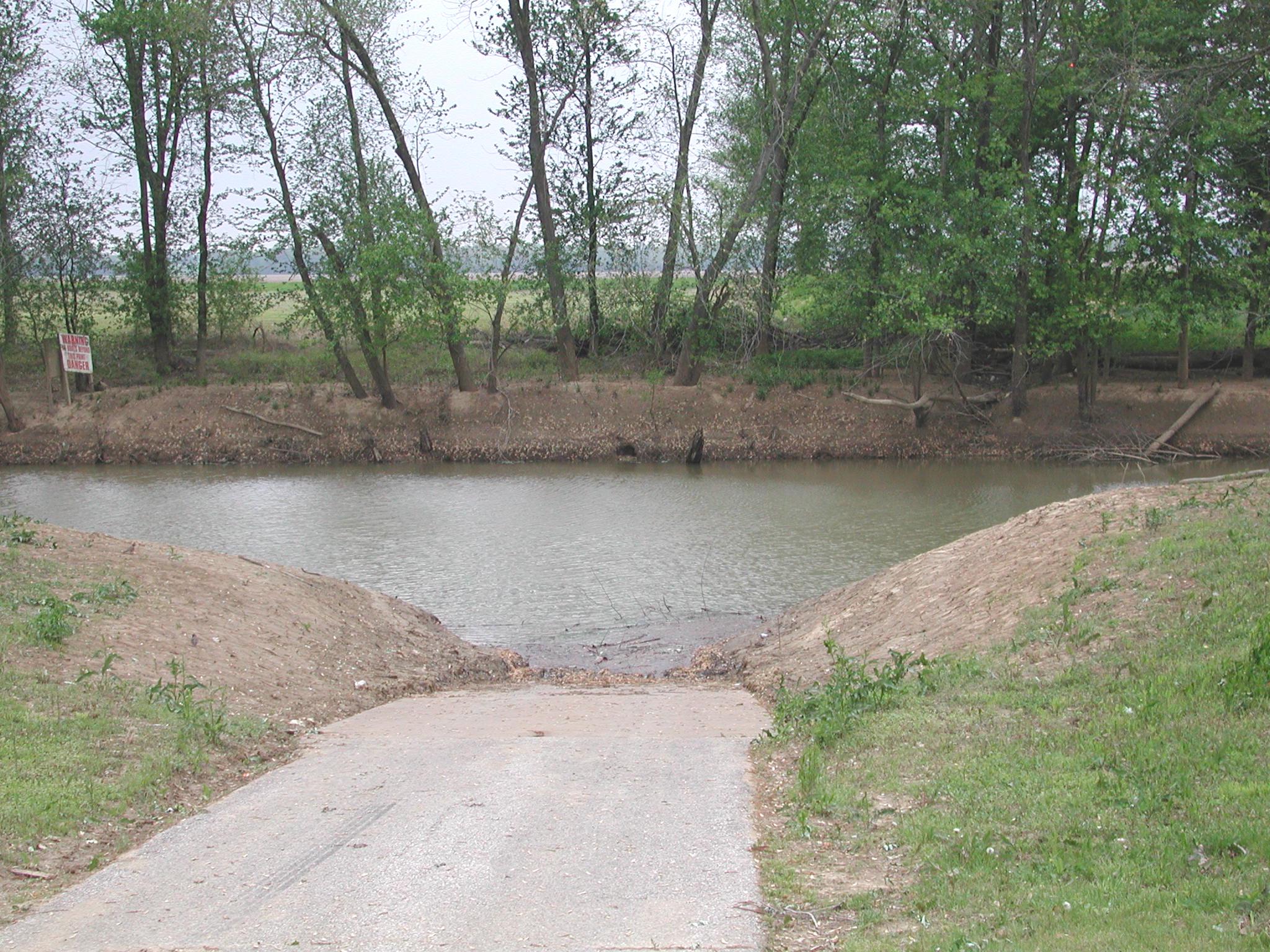
Public Rough River ramp at Hartford, KY. (Open 24/7) Camping allowed! The ramp is located on
the left descending bank of the Rough River approximately 29 miles from the mouth at the Green
River (Livermore, Kentucky). Photo taken 23 April 2005
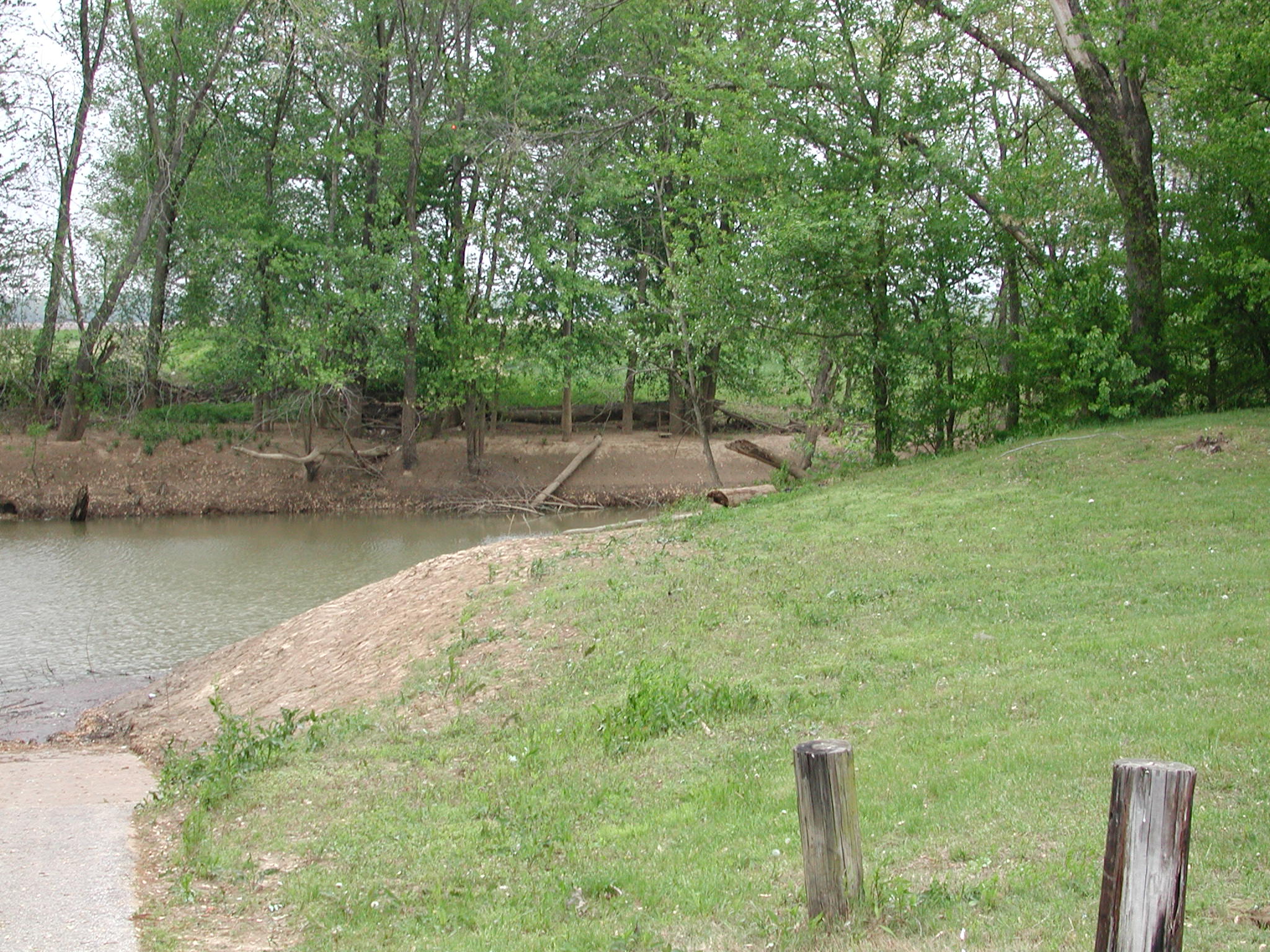
This camping/recreation area is to the right of the boat ramp at Hartford, KY. Photo taken 23
April 2005
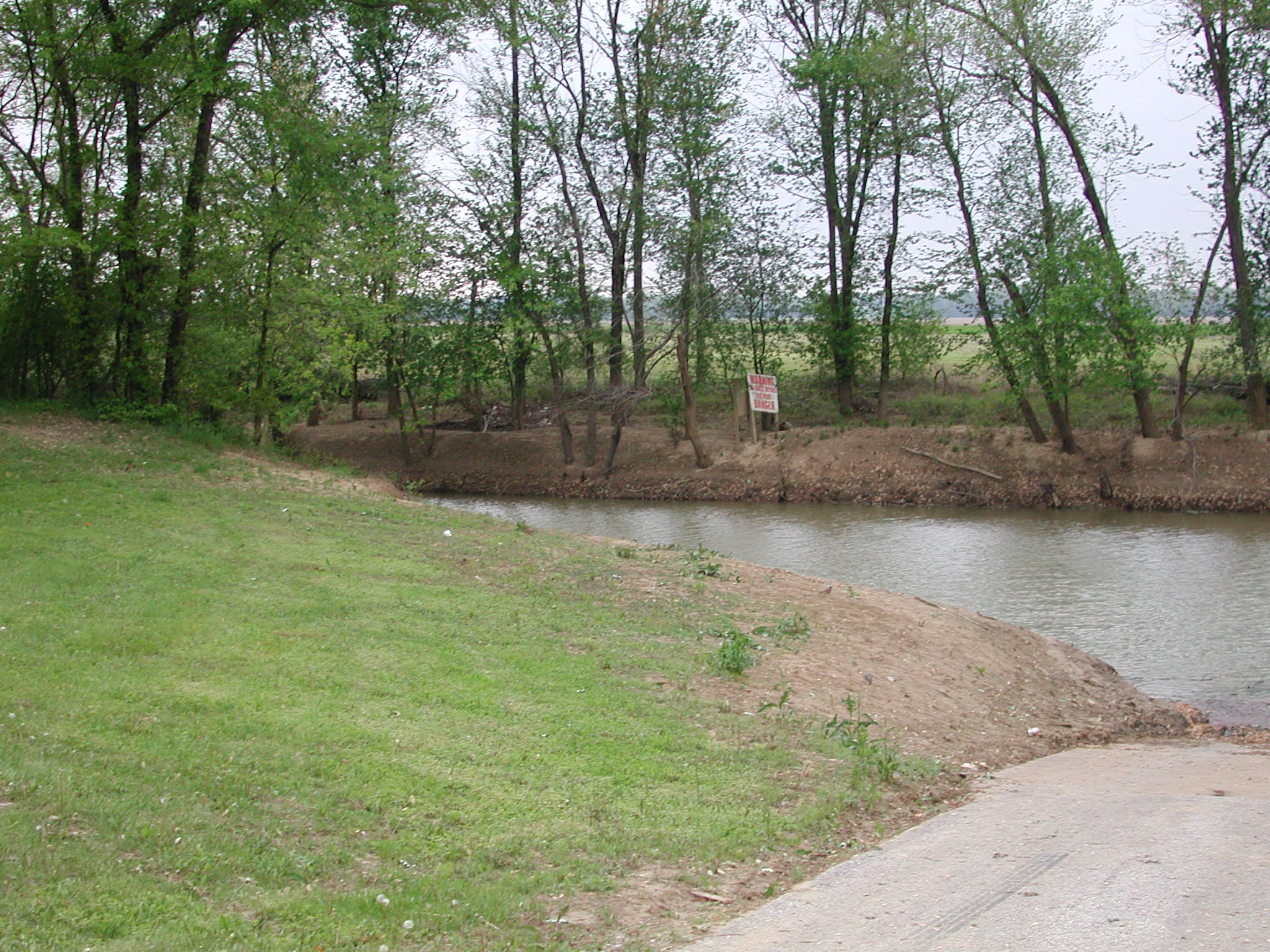
This picnic area is to the left of the boat ramp at Hartford, KY. Photo taken 23 April 2005
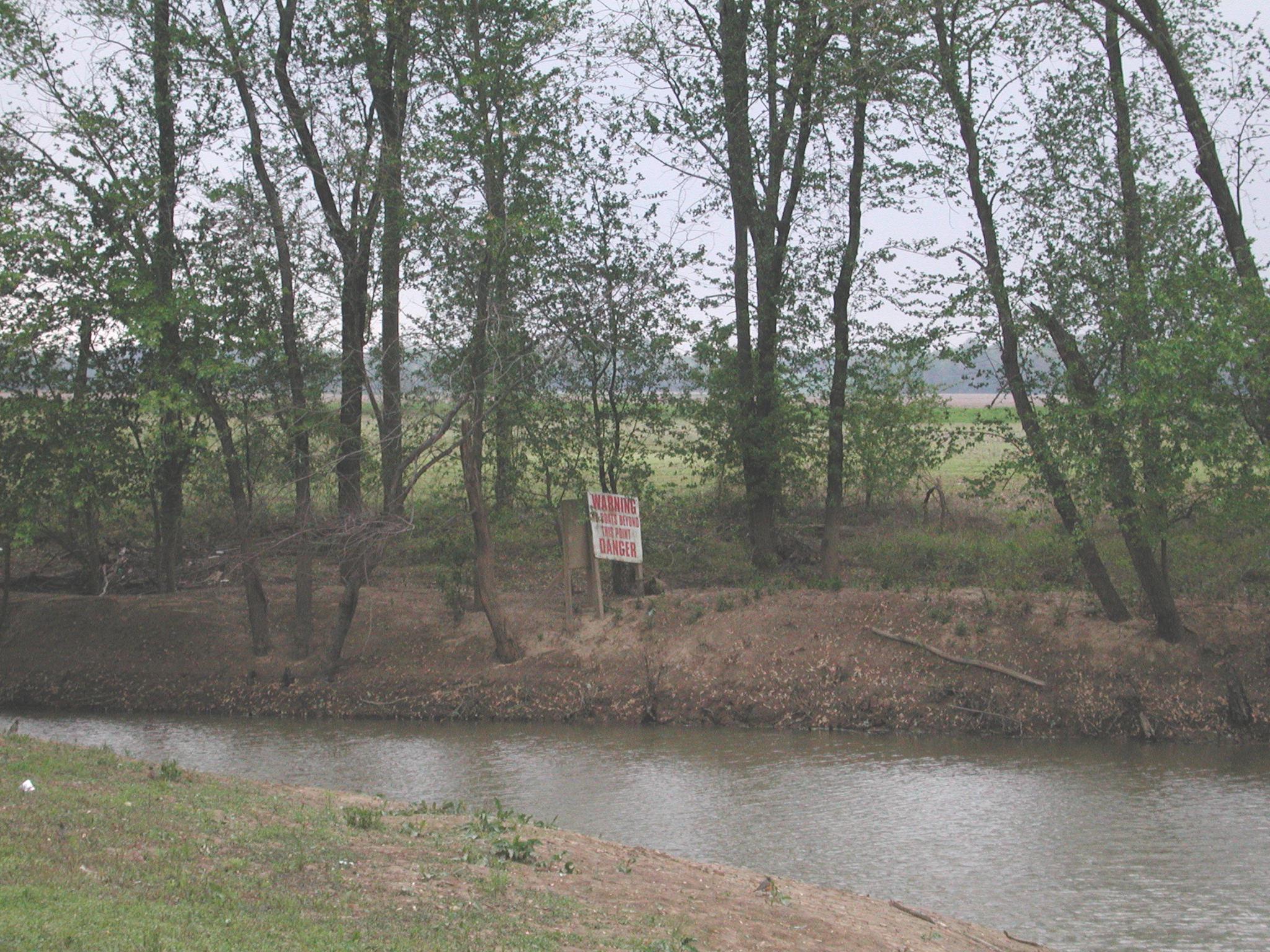
This sign warns of the weir that lies approximately . The weir dams contain water for the water pumping station that is at
Hartfort and in the photographs above. The weir increases the channel depth to about 12-14 feet
upstream of the weir while below it, the channel depth is about 7-9 feet. Weirs must be treated
as you would any lock & dam structure for both "restricted areas" and "danger areas"!!!
When you canoe or boat on this river, you must take out your vessel to portage around the weir
most of the year. While some john boats have been known to motor over the weir in extreme
flooding, it is greatly discouraged. Apppoximately 3/4 mile downstream from this park is Muddy
Creek and you can put in your canoe there. That creek was used for steamboats to turn-around due
to the narrow width of the Rough River. Photo taken 23 April 2005
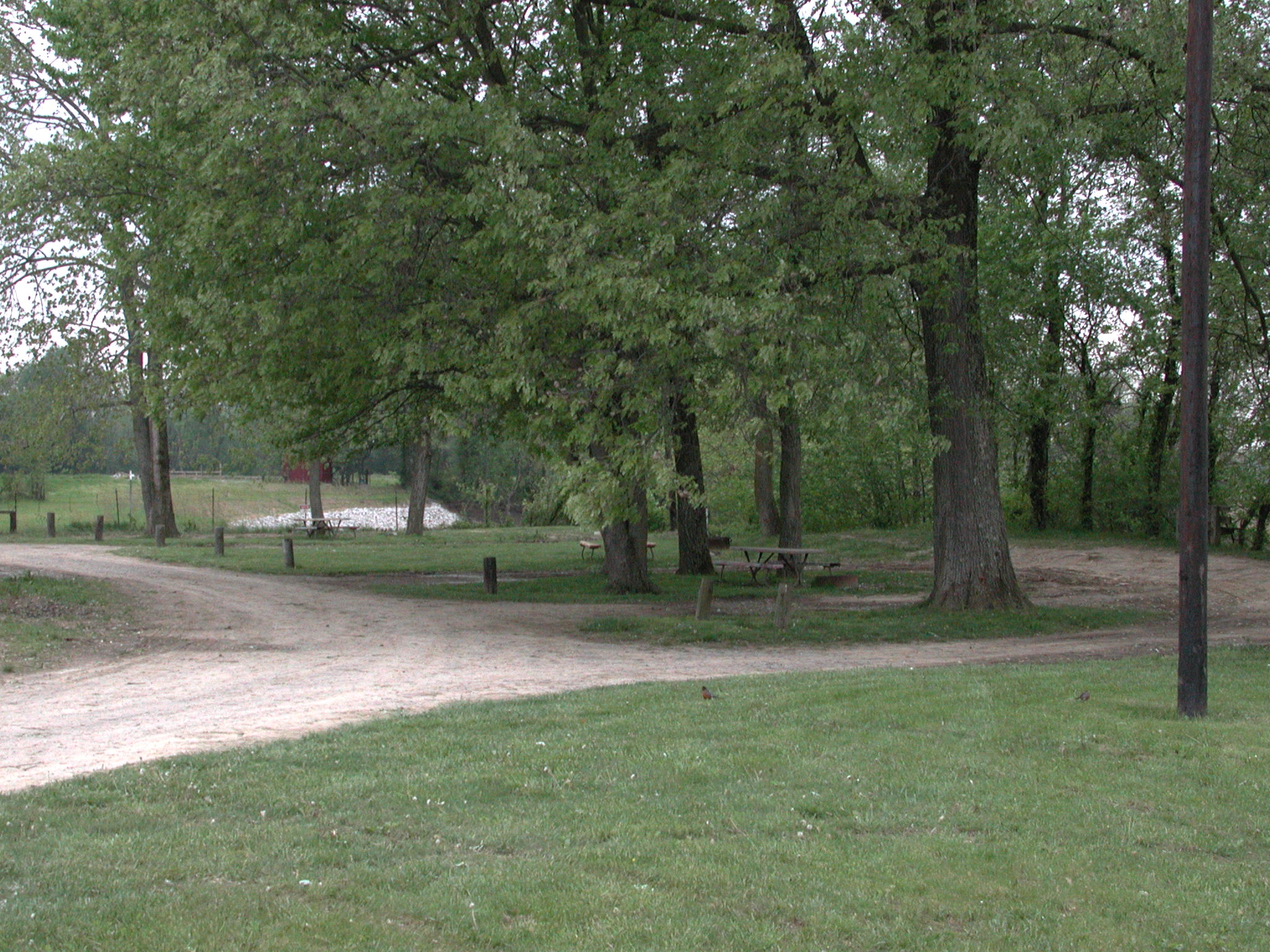
This picnic area is to the left of the boat ramp at Hartford, KY. In the center of this photo, you can see white
rocks that line the riverbank and this is just below the weir. Unfortunately, the property is privately owned and you
must NOT TRESPASS ON THE WEIR OR ON THE LAND. Photo taken 23 April 2005
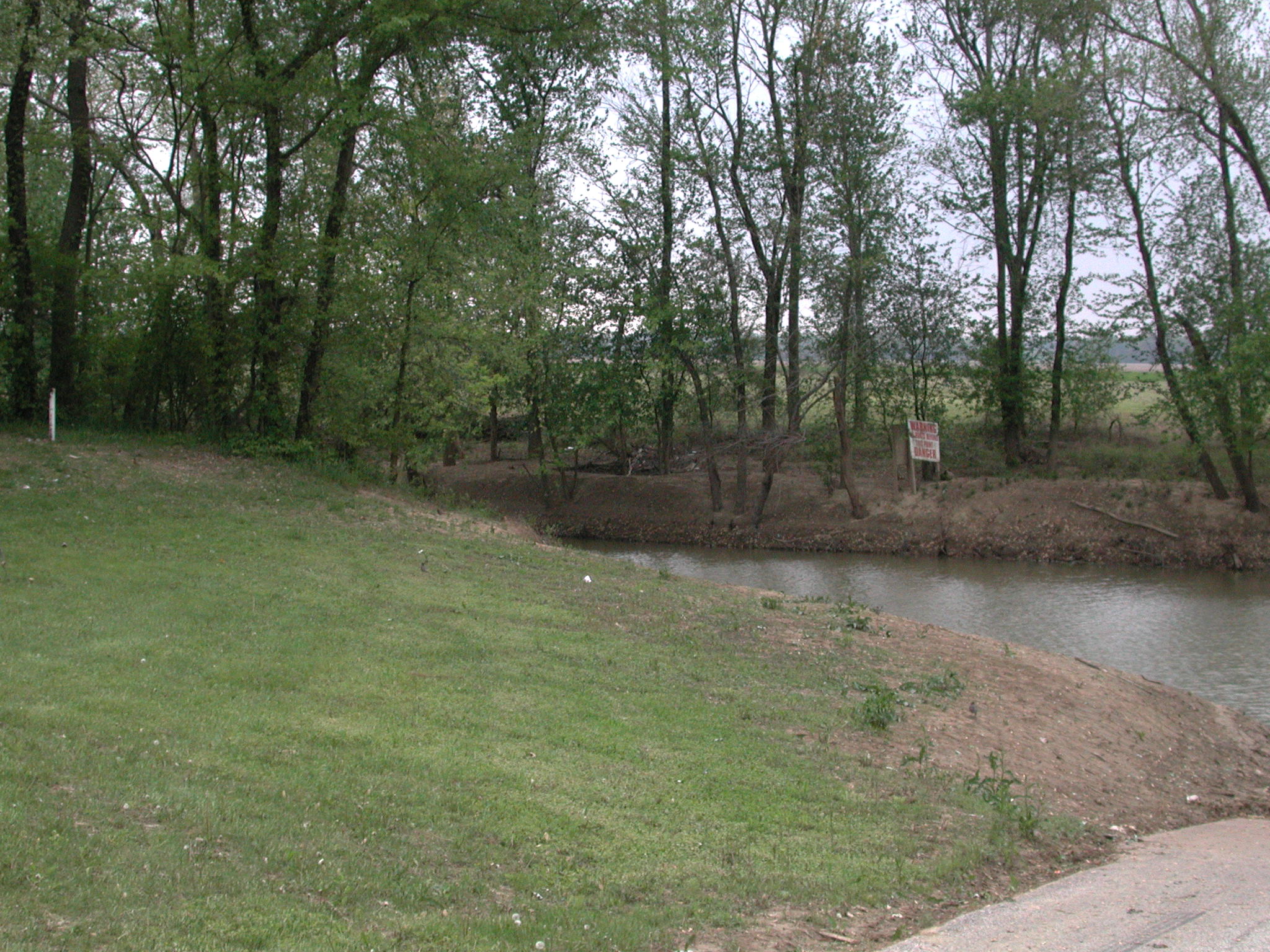
This picnic area is to the left of the boat ramp at Hartford, KY. Photo taken 23 April 2005
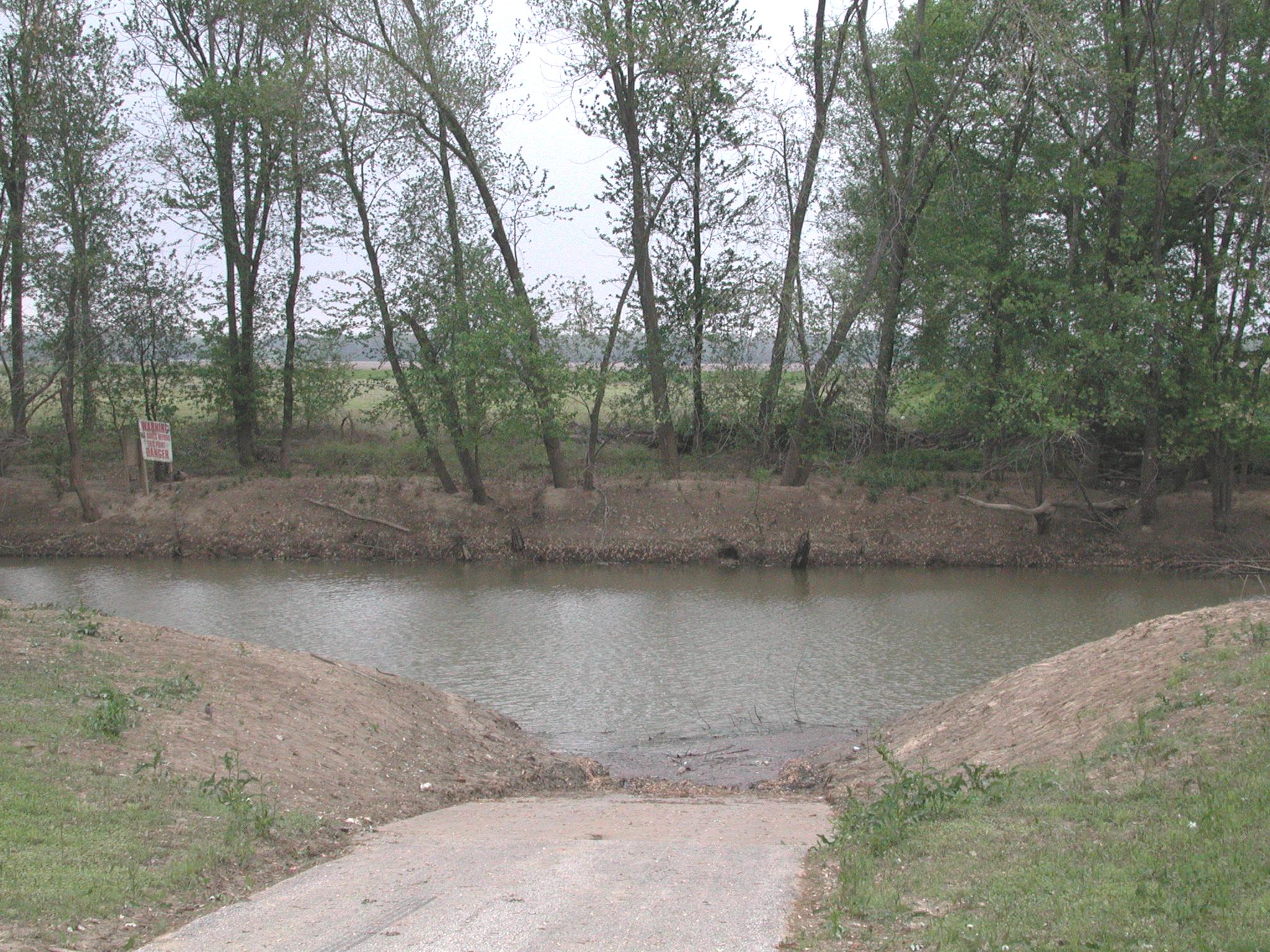
This is the boat ramp at Hartford, KY. Photo taken 23 April 2005
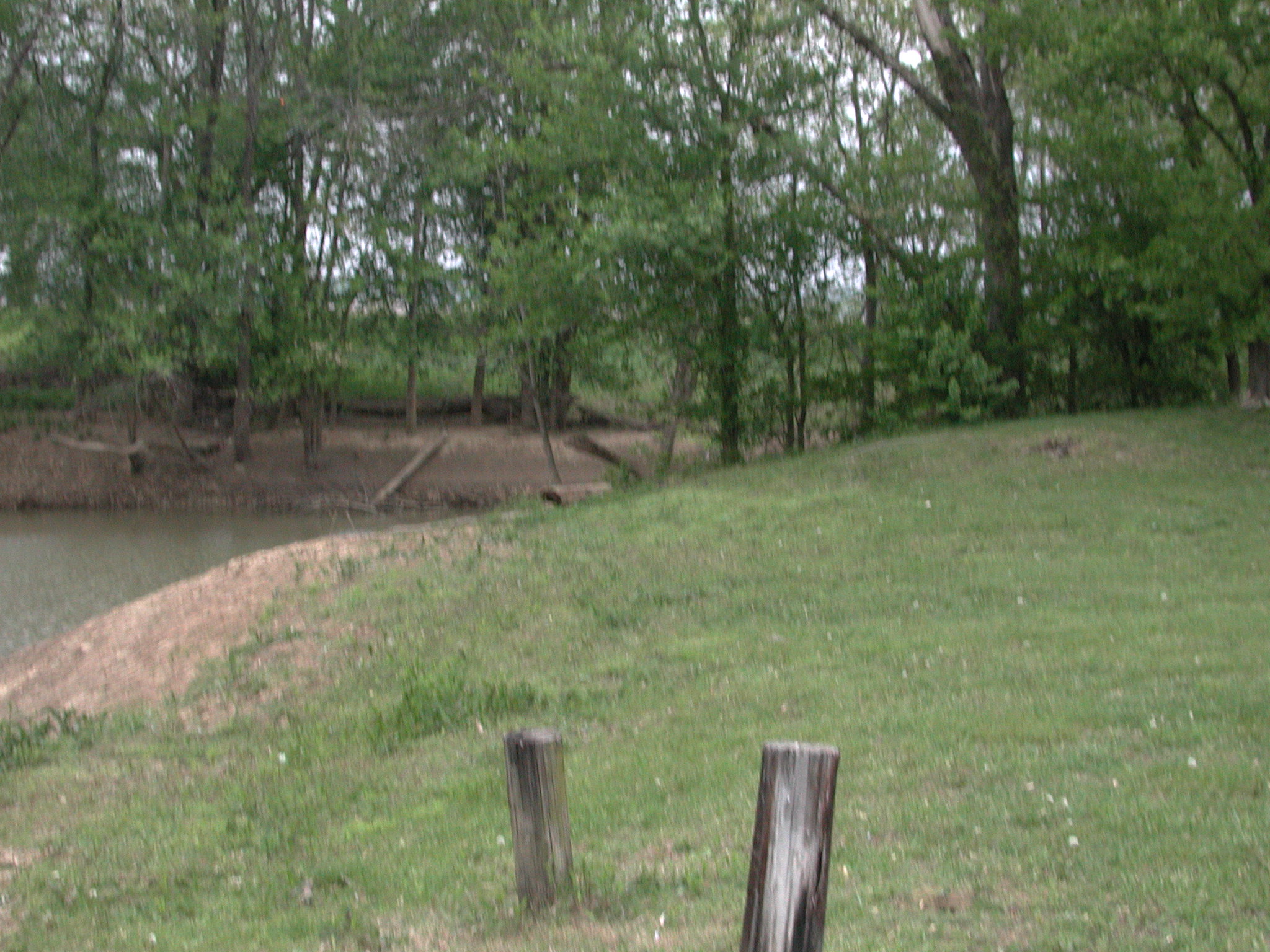
This camping/recreation area is to the right of the boat ramp at Hartford, KY. Photo taken 23 April 2005
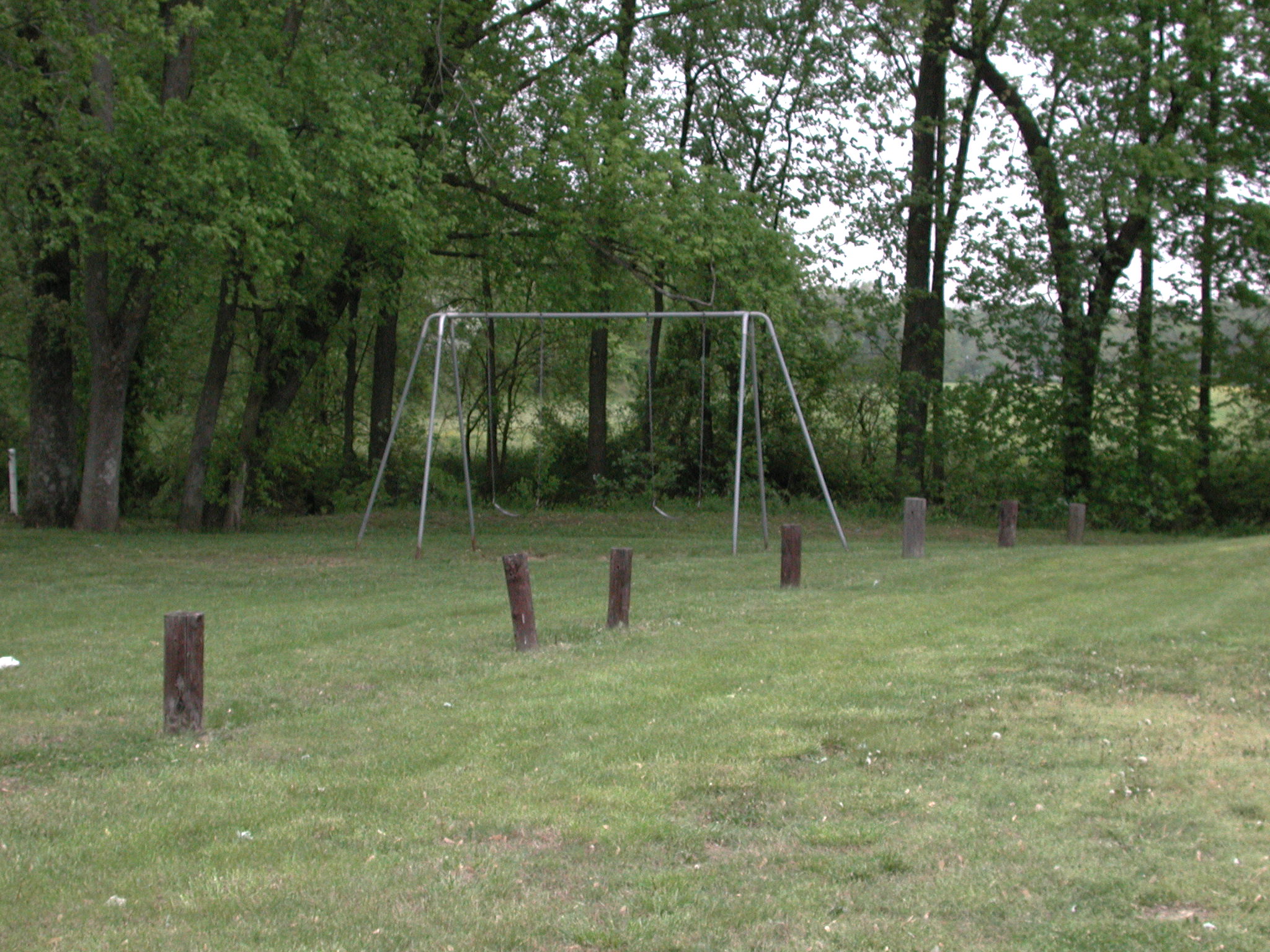
This camping/recreation area is to the right of the boat ramp at Hartford, KY. Photo taken 23 April 2005
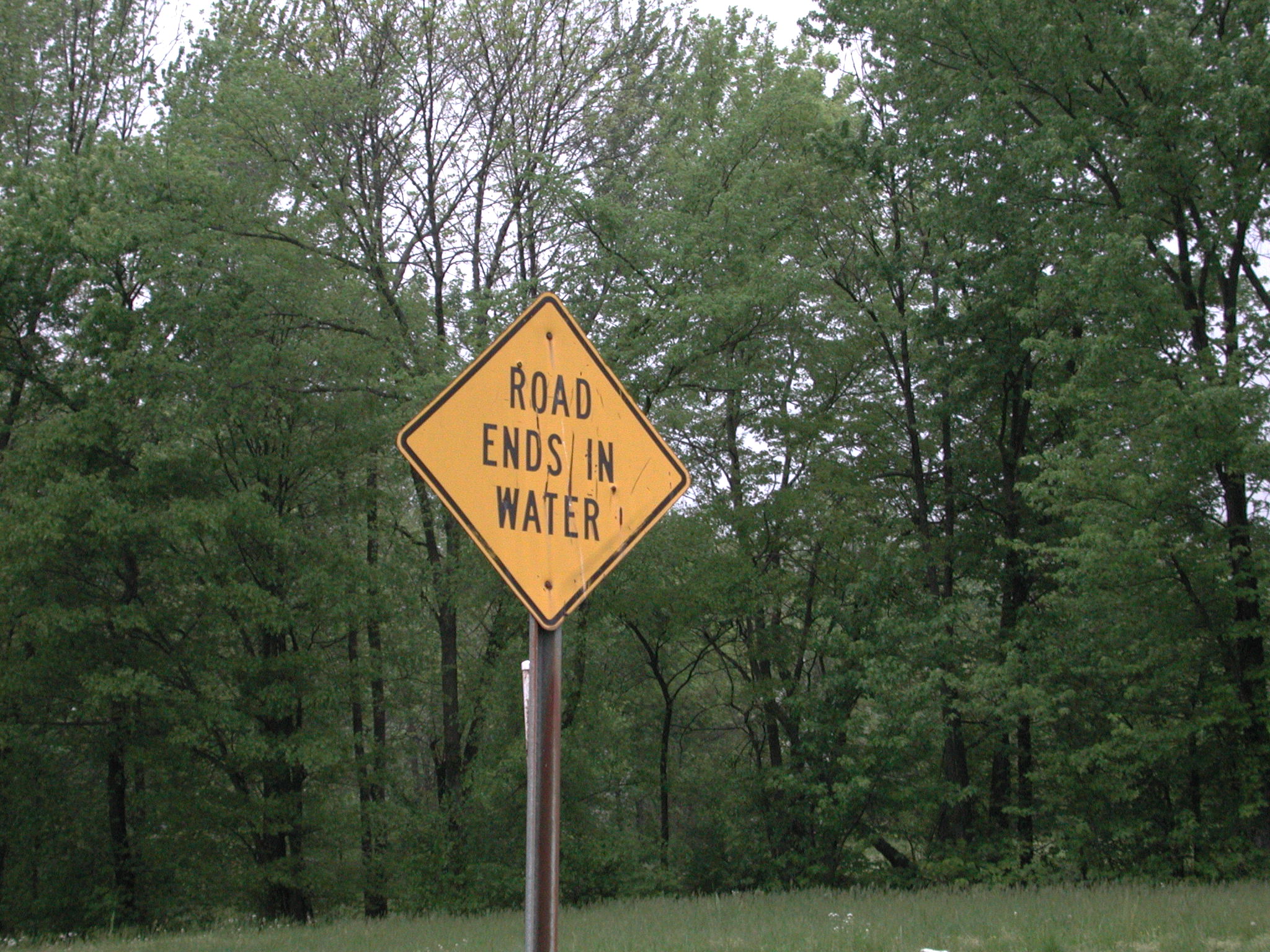
This is the only visible signage that is visible from the road for this unnamed park near Hartfort, Kentucky. Photo
taken 23 April 2005
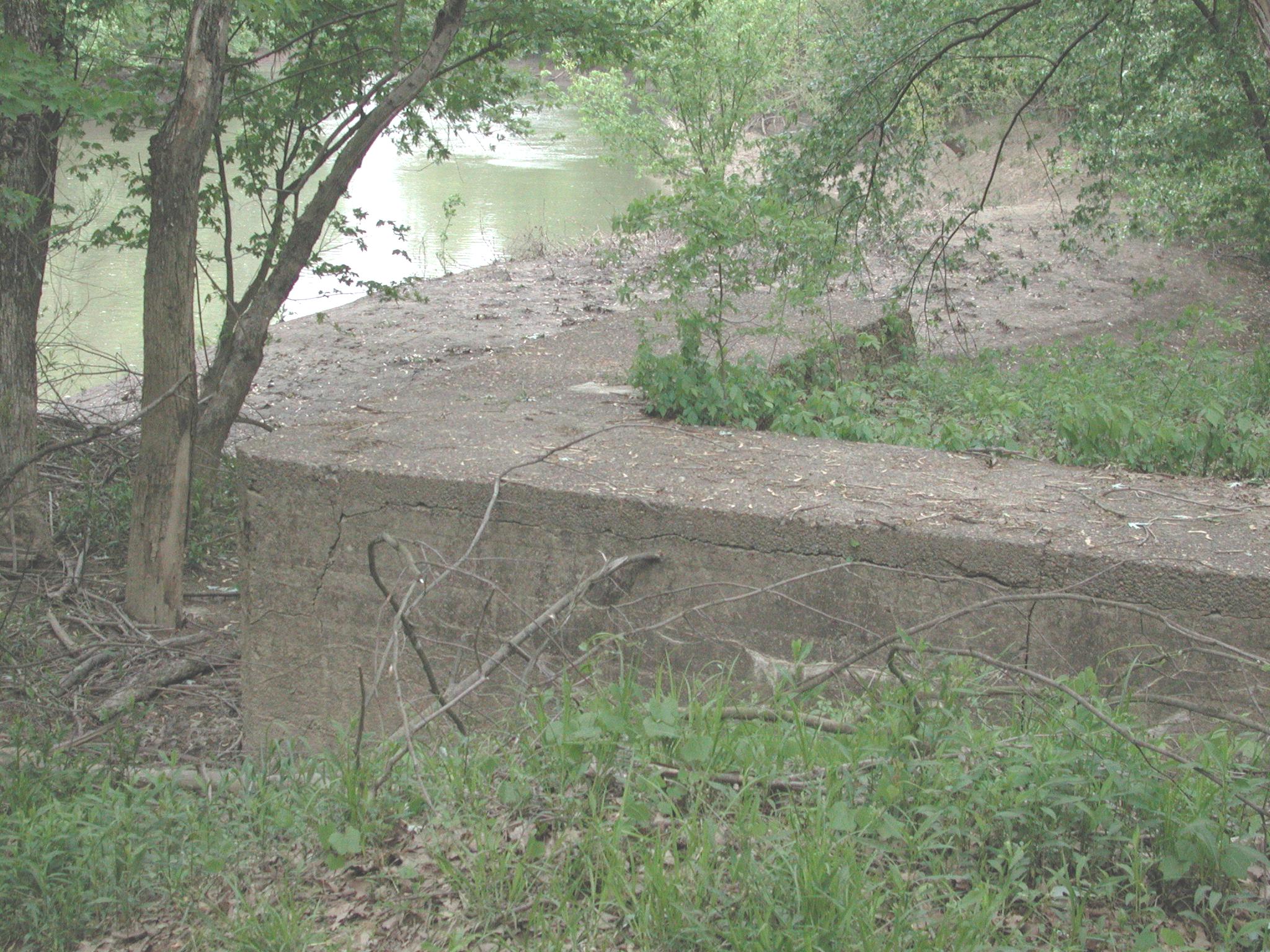
Abandoned Lock & Dam #1 on the Rough River. This view is on the right descending bank looking toward the lock chamber.
The image shows how a "timbercrib" dam was constructed with logs crisscross and filled with rocks, hay,
boulders, and mud. Photo taken 23 April 2005
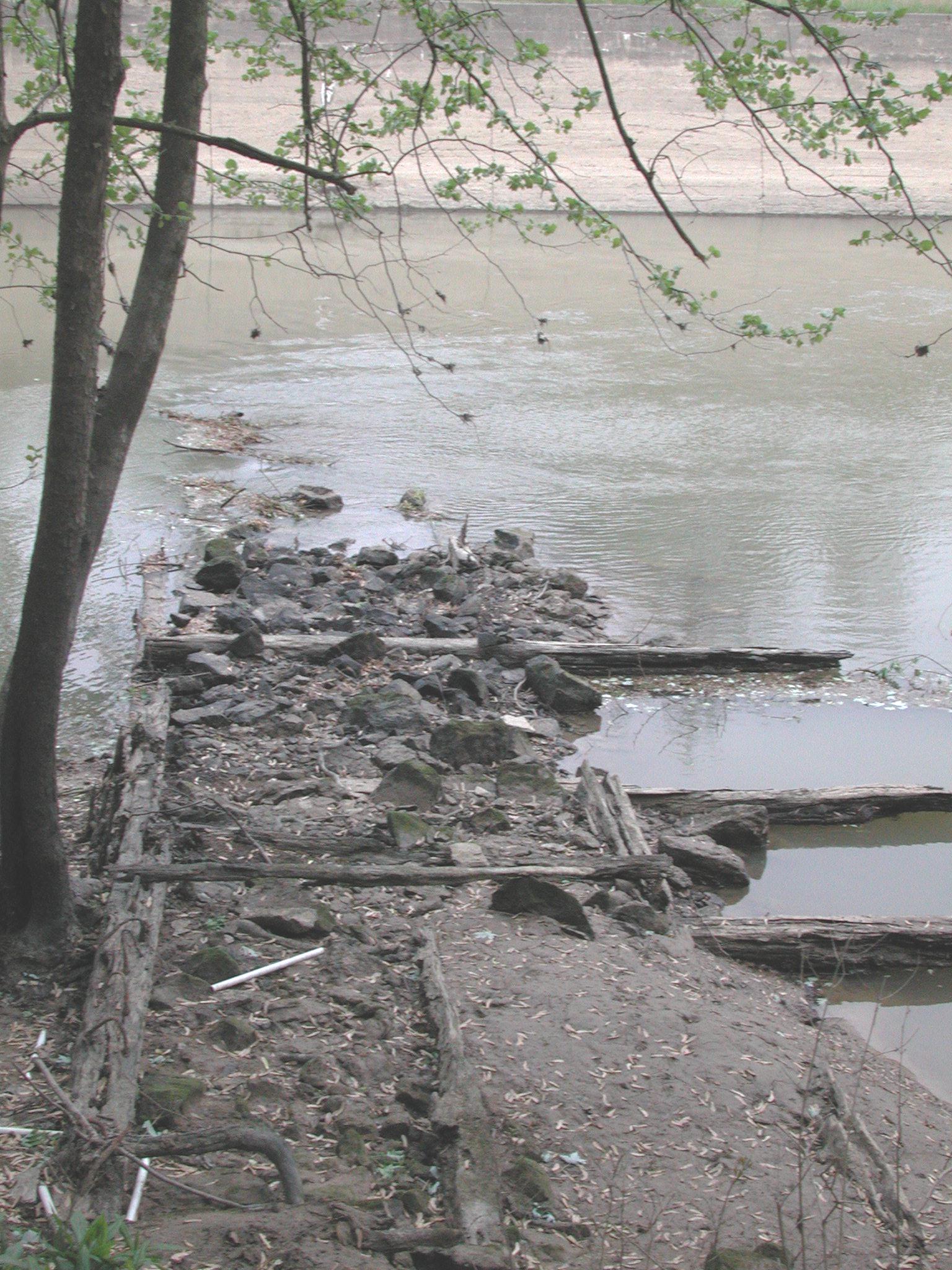
Abandoned Lock & Dam #1 on the Rough River. This view is on the right descending bank looking toward the lock chamber.
The image shows how a "timbercrib" dam was constructed with logs crisscross and filled with rocks, hay,
boulders, and mud. During periods of low water, it is still possible to walk across the river on the trimbercrib dam.
This is greatly discouraged!!! Photo taken 23 April 2005
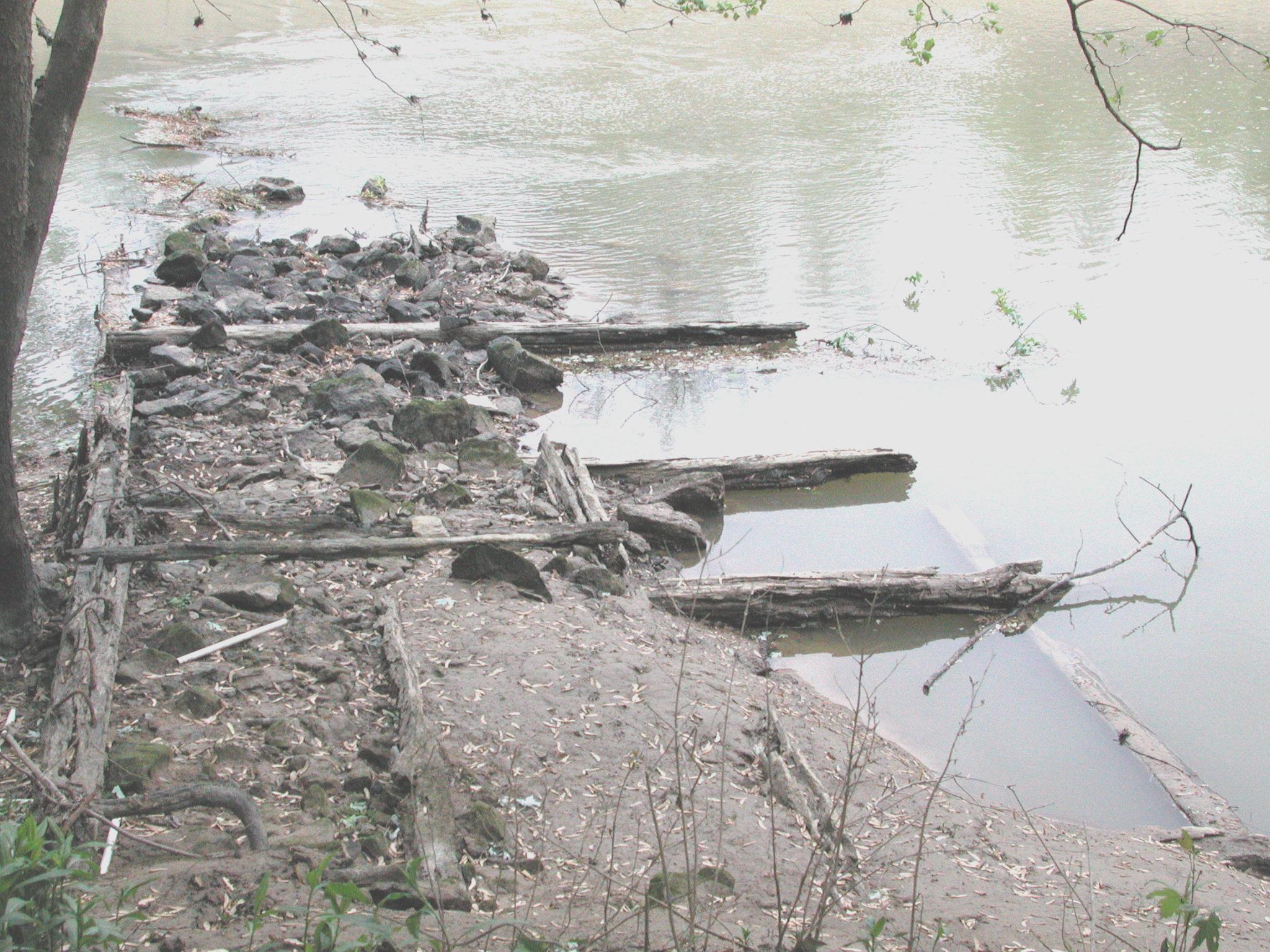
Abandoned Lock & Dam #1 on the Rough River. This view is on the right descending bank looking toward the lock
chamber. Photo taken 23 April 2005
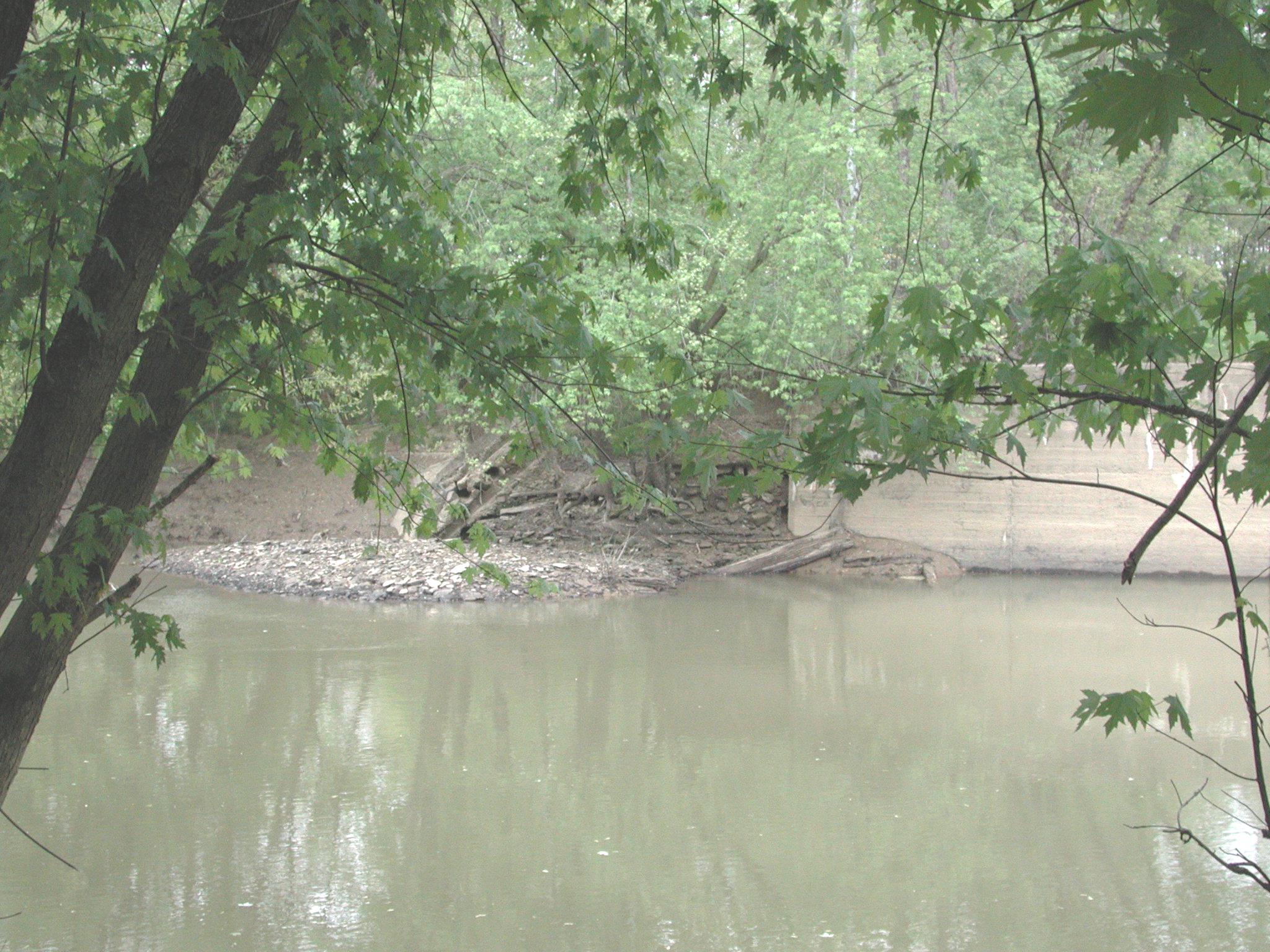
Abandoned Lock & Dam #1 on the Rough River. This view is on the right descending bank looking slightly upstream toward
the lock chamber. Sedimentation has blocked the lock (upstream) chamber entrance. If you compare the rock pile that
appears at the leading edge of the lockwall to the original photo (at the top of this webpage) from 16 December 1896,
it will be obvious that these rocks and bolders were part of the "bullnose" that protects a lockwall. After the
bullnose wood deteriorated the rocks remained right where they fell. Photo taken 23 April 2005
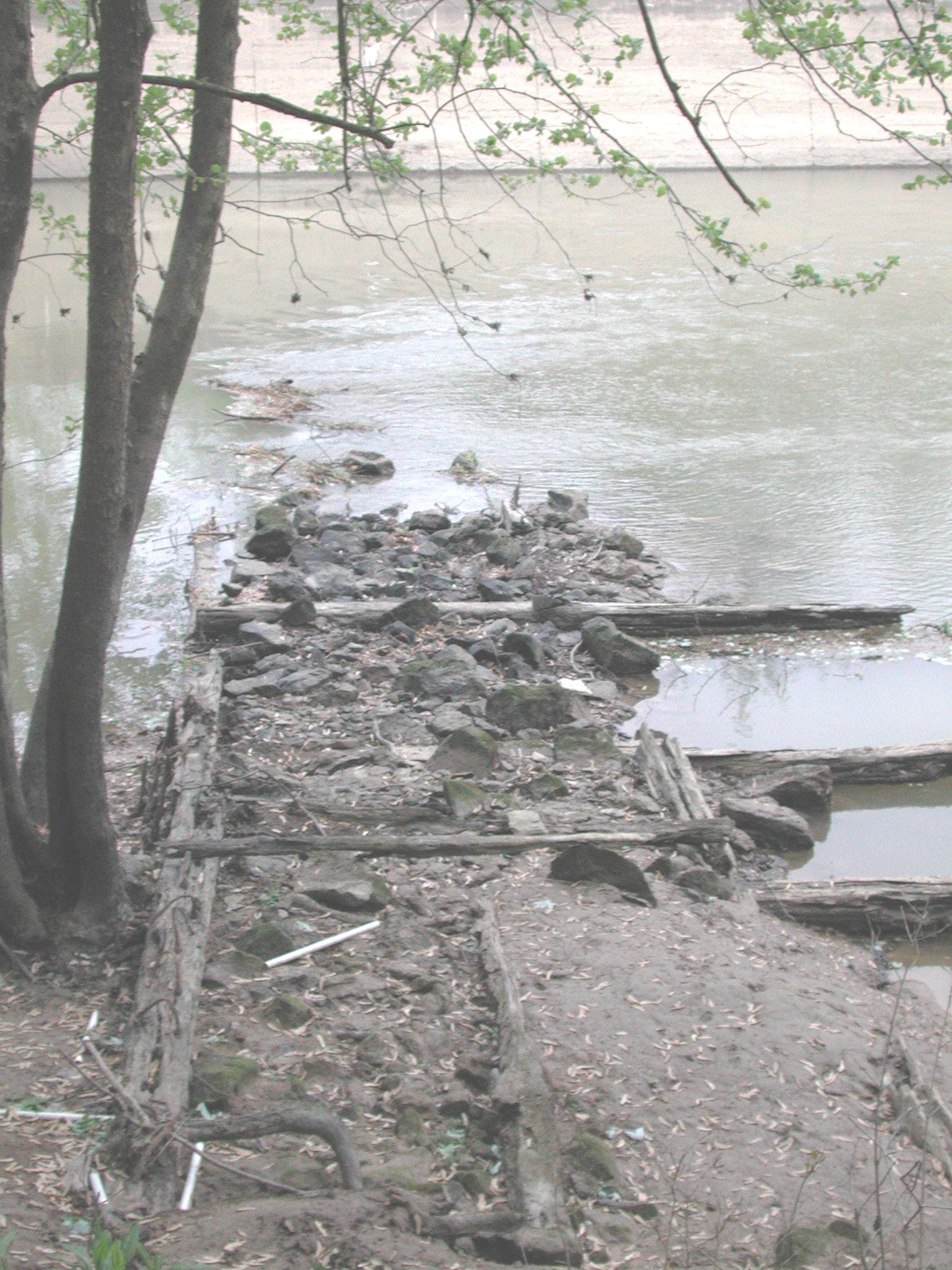
Abandoned Lock & Dam #1 on the Rough River. This view is on the right descending bank looking toward the lock chamber.
The image shows how a "timbercrib" dam was constructed with logs crisscross and filled with rocks, hay,
boulders, and mud. Photo taken 23 April 2005
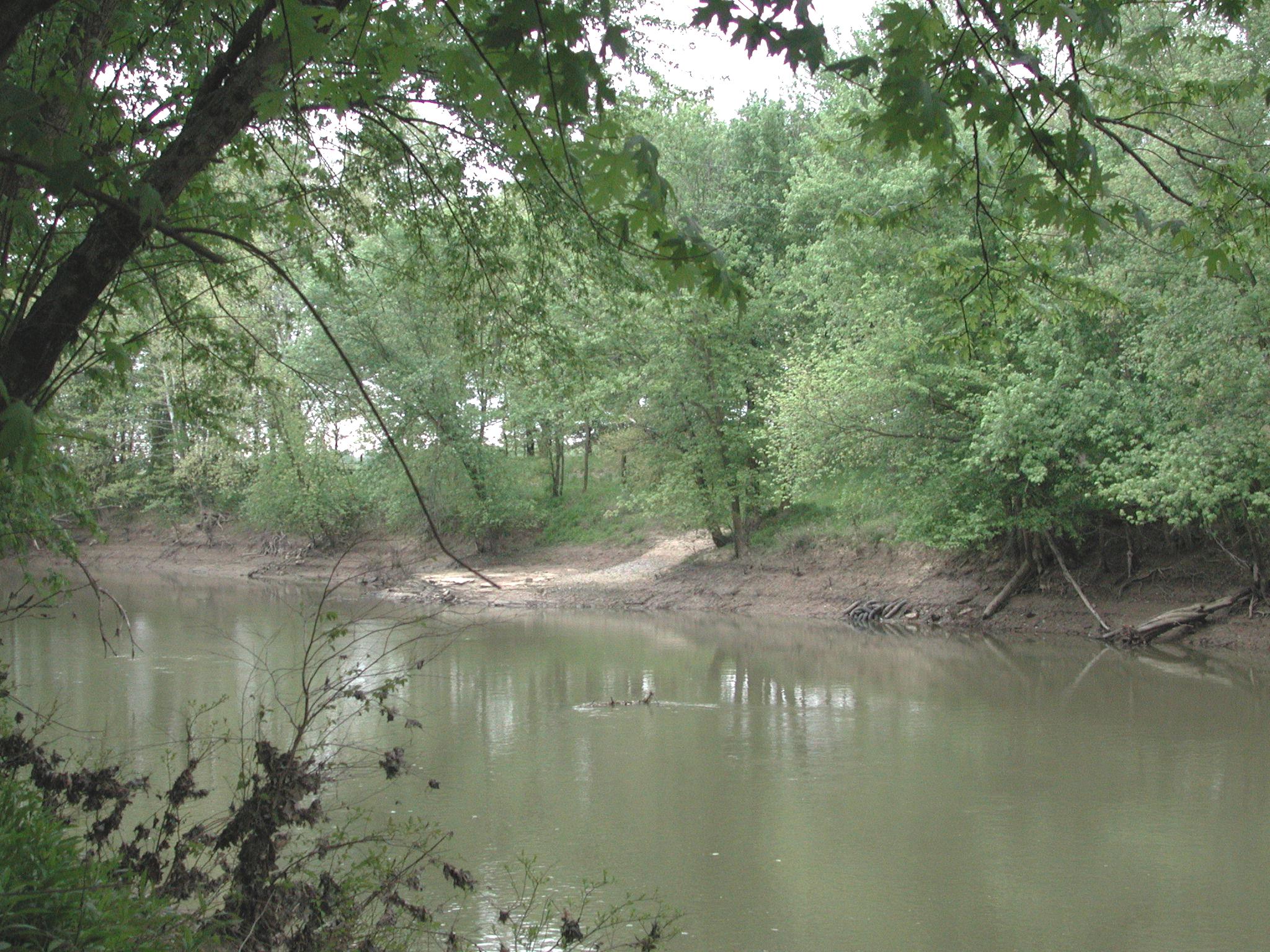
This boat ramp is on the left descending bank just about 150 feet upstream from the abandoned lock & dam #1 on Rough
River. I do not know who owns the ramp or but it is located off of Brown Road which is off of KY 85. Photo taken 23
April 2005
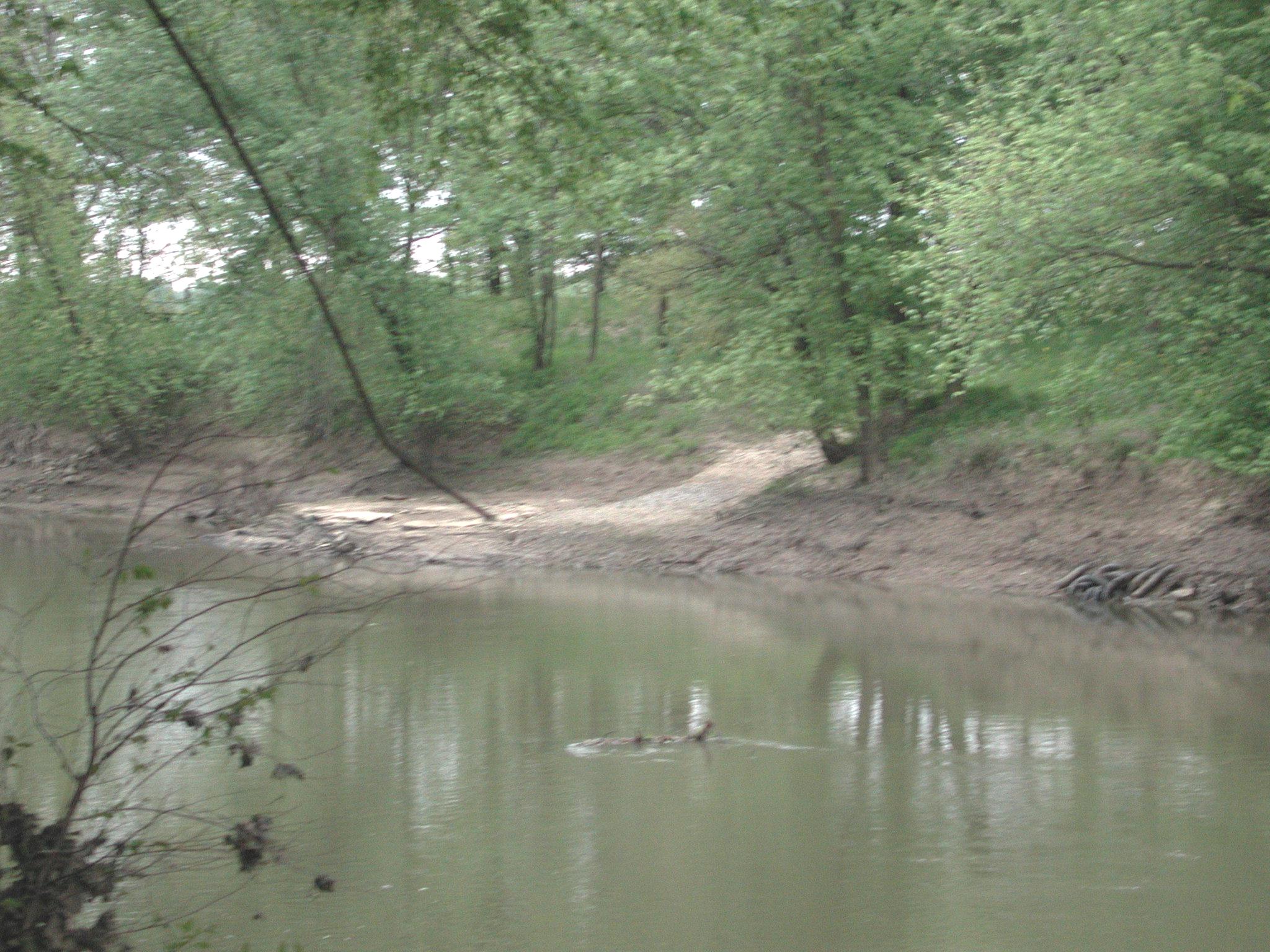
This boat ramp is on the left descending bank just about 150 feet upstream from the abandoned lock & dam #1 on Rough
River. I do not know who owns the ramp or but it is located off of Brown Road which is off of KY 85. Photo taken 23
April 2005
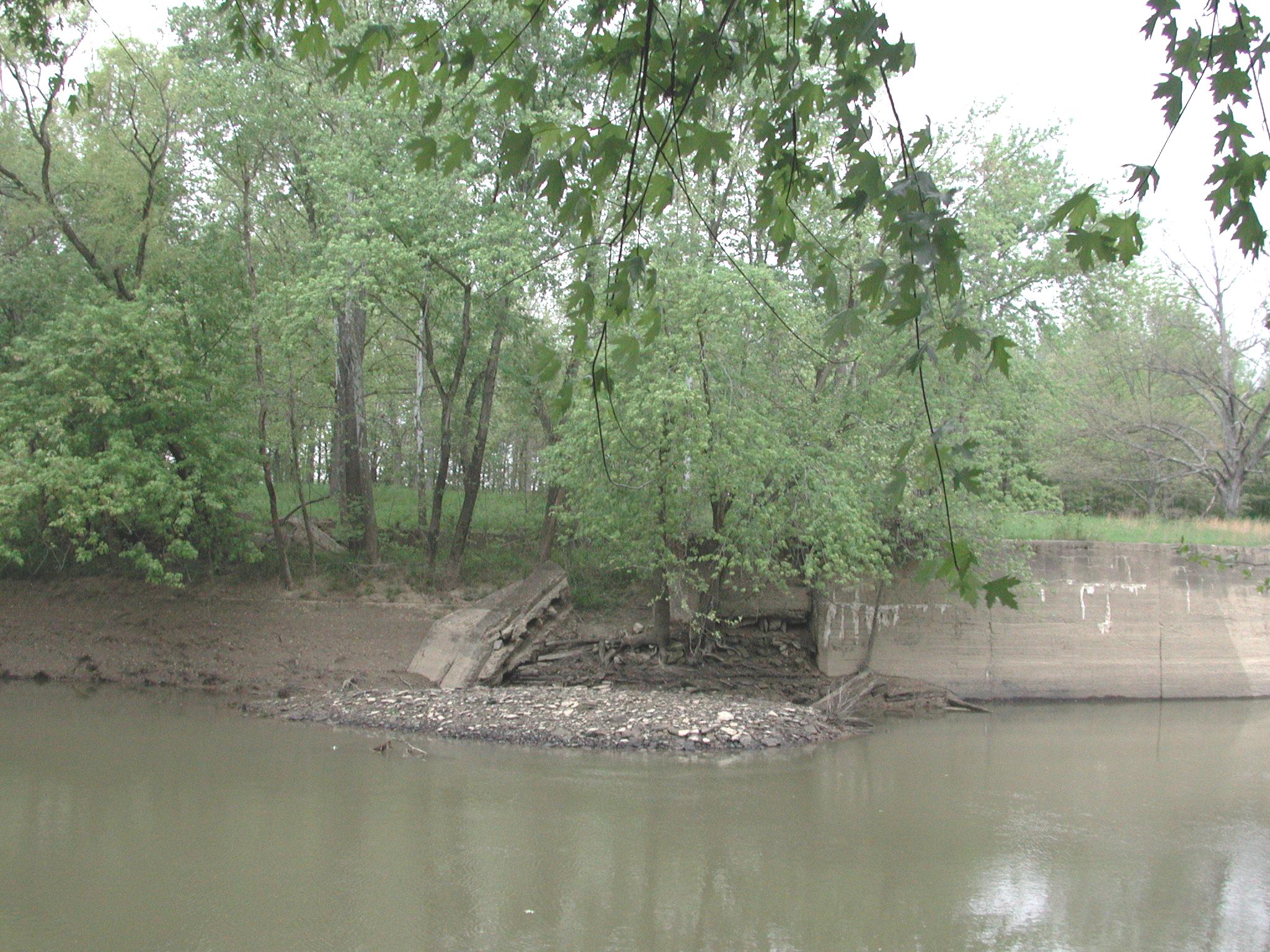
Abandoned Lock & Dam #1 on the Rough River. This view is on the right descending bank looking slightly upstream toward
the lock chamber. Sedimentation has blocked the lock (upstream) chamber entrance. If you compare the rock pile that
appears at the leading edge of the lockwall to the original photo (at the top of this webpage) from 16 December 1896,
it will be obvious that these rocks and bolders were part of the "bullnose" that protects a lockwall. After the
bullnose wood deteriorated the rocks remained right where they fell. Photo taken 23 April 2005
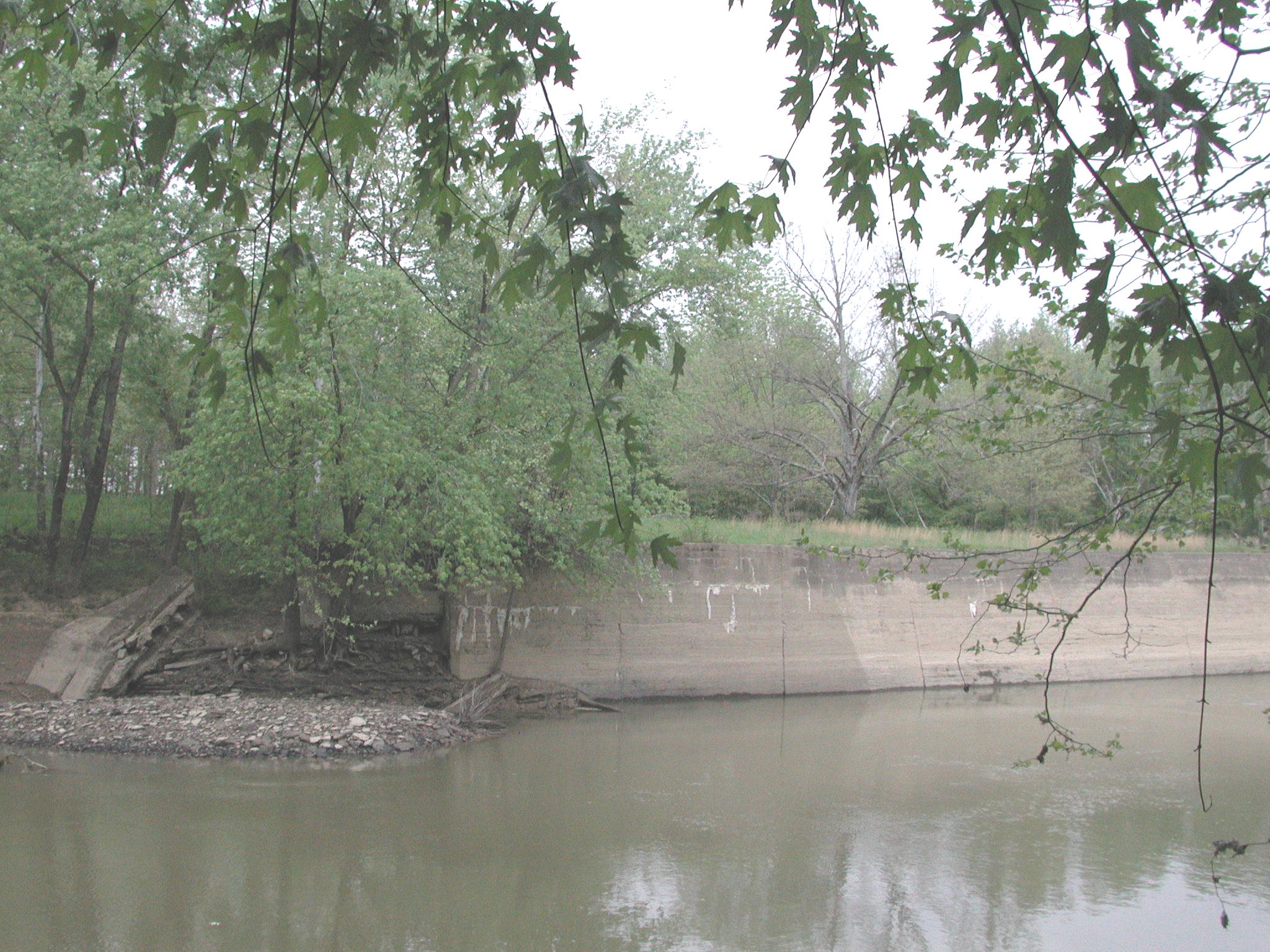
Abandoned Lock & Dam #1 on the Rough River. This view is on the right descending bank looking slightly upstream toward
the lock chamber. Sedimentation has blocked the lock (upstream) chamber entrance. If you compare the rock pile that
appears at the leading edge of the lockwall to the original photo (at the top of this webpage) from 16 December 1896,
it will be obvious that these rocks and bolders were part of the "bullnose" that protects a lockwall. After the
bullnose wood deteriorated the rocks remained right where they fell. Photo taken 23 April 2005
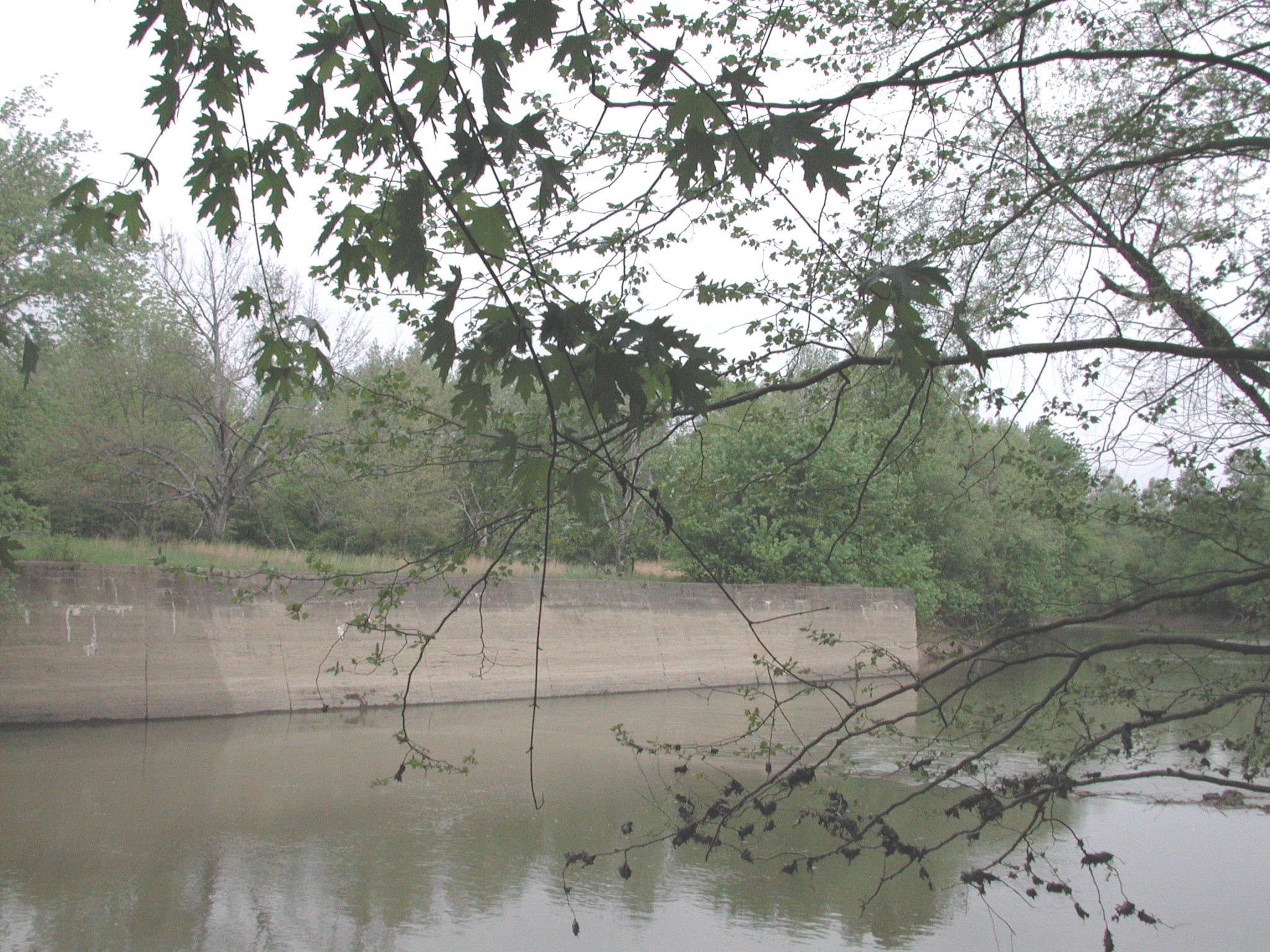
Abandoned Lock & Dam #1 on the Rough River. This view is on the right descending bank looking slightly downstream
toward the lock chamber. Sedimentation has blocked the lock (downstream) chamber entrance. Ripples of water can be
seen amidstream and those are from the remaining portions of the "timbercrib dam." Photo taken 23 April 2005
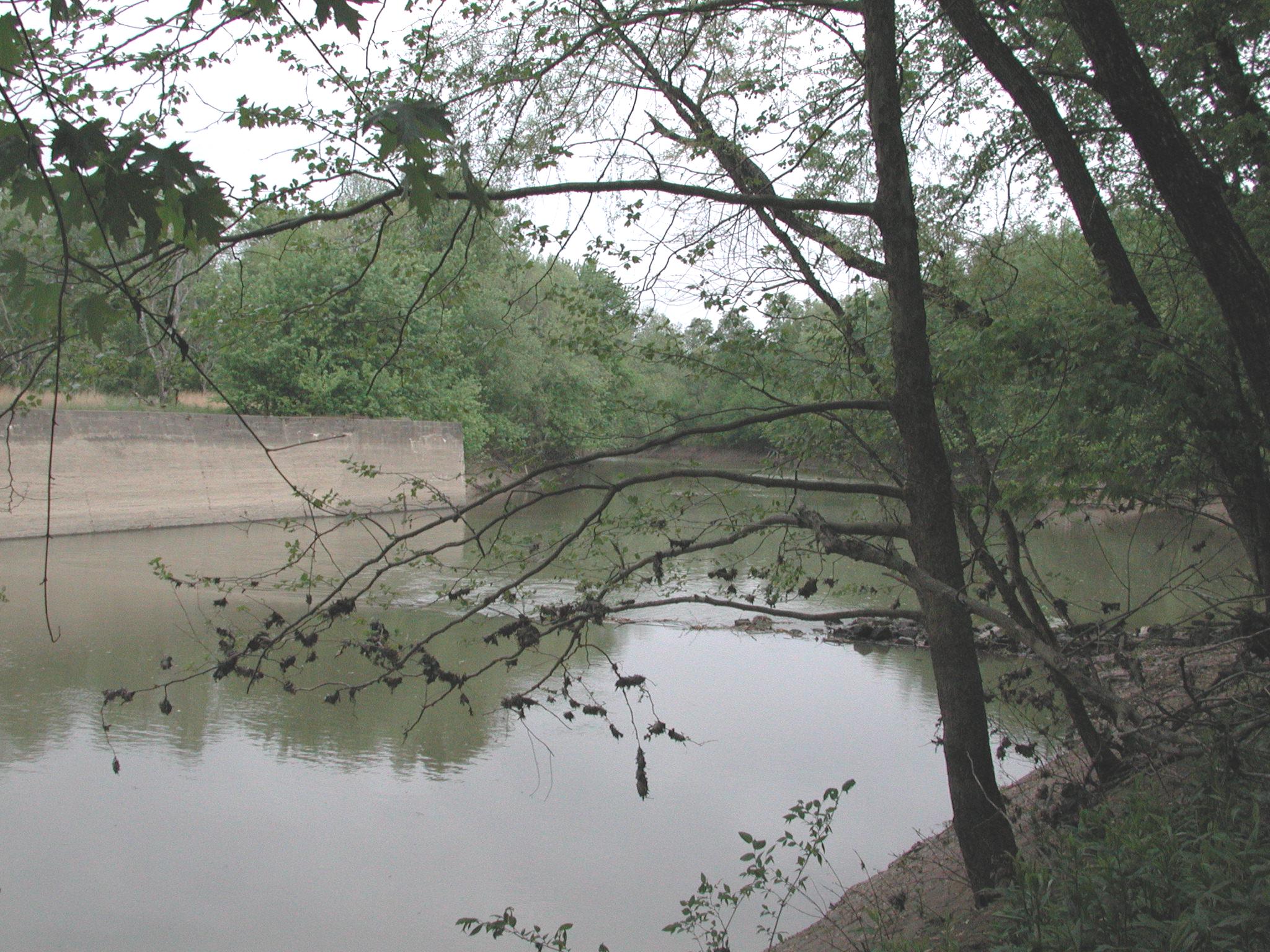
Abandoned Lock & Dam #1 on the Rough River. This view is on the right descending bank looking slightly downstream
toward the lock chamber. Sedimentation has blocked the lock (downstream) chamber entrance. Photo taken 23 April
2005
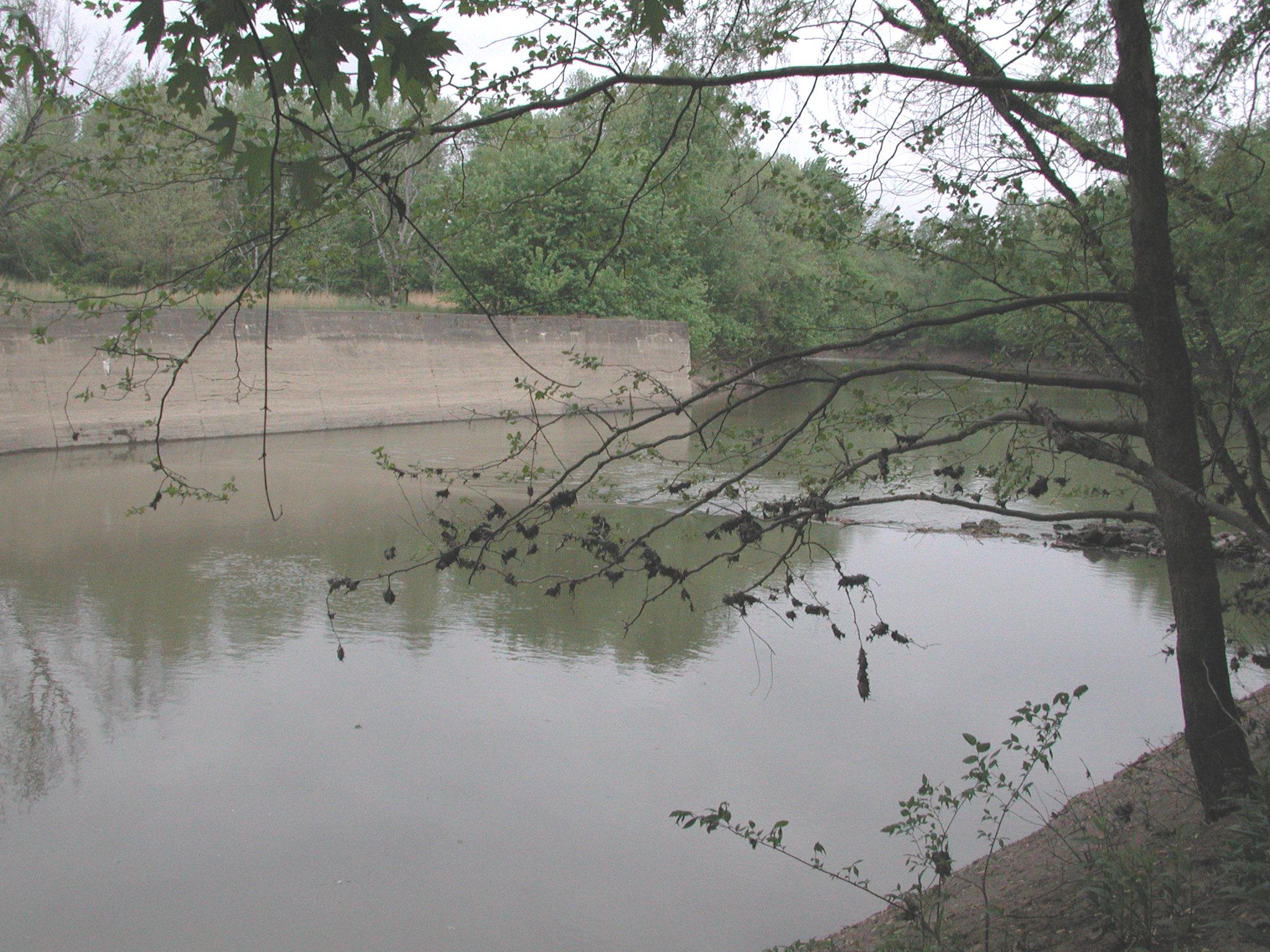
Abandoned Lock & Dam #1 on the Rough River. This view is on the right descending bank looking slightly downstream
toward the lock chamber. Sedimentation has blocked the lock (downstream) chamber entrance. Photo taken 23 April
2005
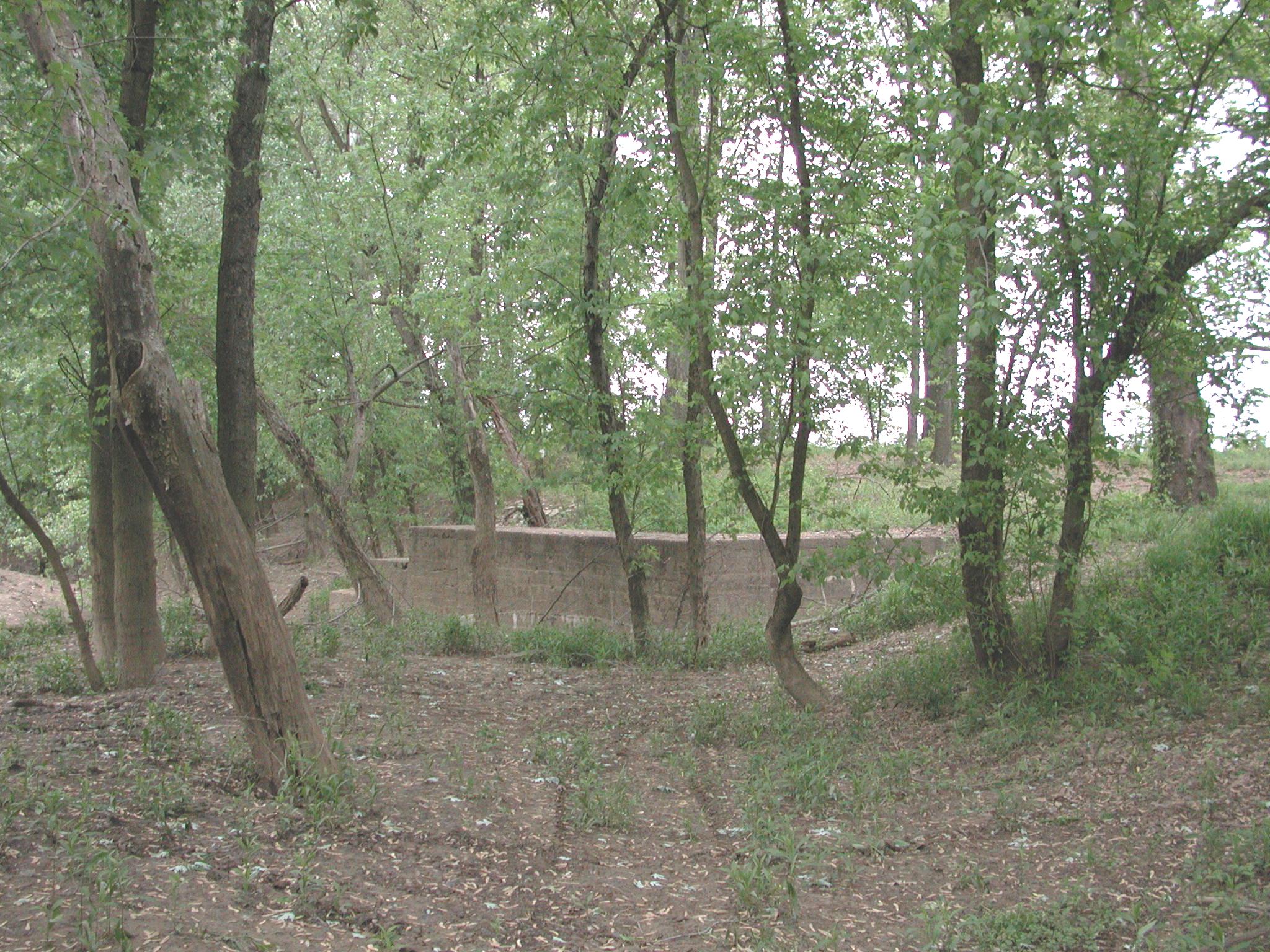
Abandoned Lock & Dam #1 on the Rough River. This view is on the right descending bank looking at how sedimentary
deposits have filled in the river and I was standing where the river used to be. The concrete structure marks where the
"true" bank was located in the 1890s, when the lock & dam was built. If an archaeological dig would commence here, they
would locate the remains of the original timbercrib dam. As the Green River had dams replaced over the years and
channel depths increased, this raised the "base level" of the Rough River, thusly, slowing down the stream and
encouraging it to fill in with sediment. A good deal of sediment would need to be removed if there was a desire to
replace this lock & dam structure. Actually, the lock chamber, while rather small by standards in 2005, could still
be cleaned out and have modern mechanical works installed and be returned to operation. On the Kentucky River, locks
from the early 1800s are still in operation. Photo taken 23 April 2005
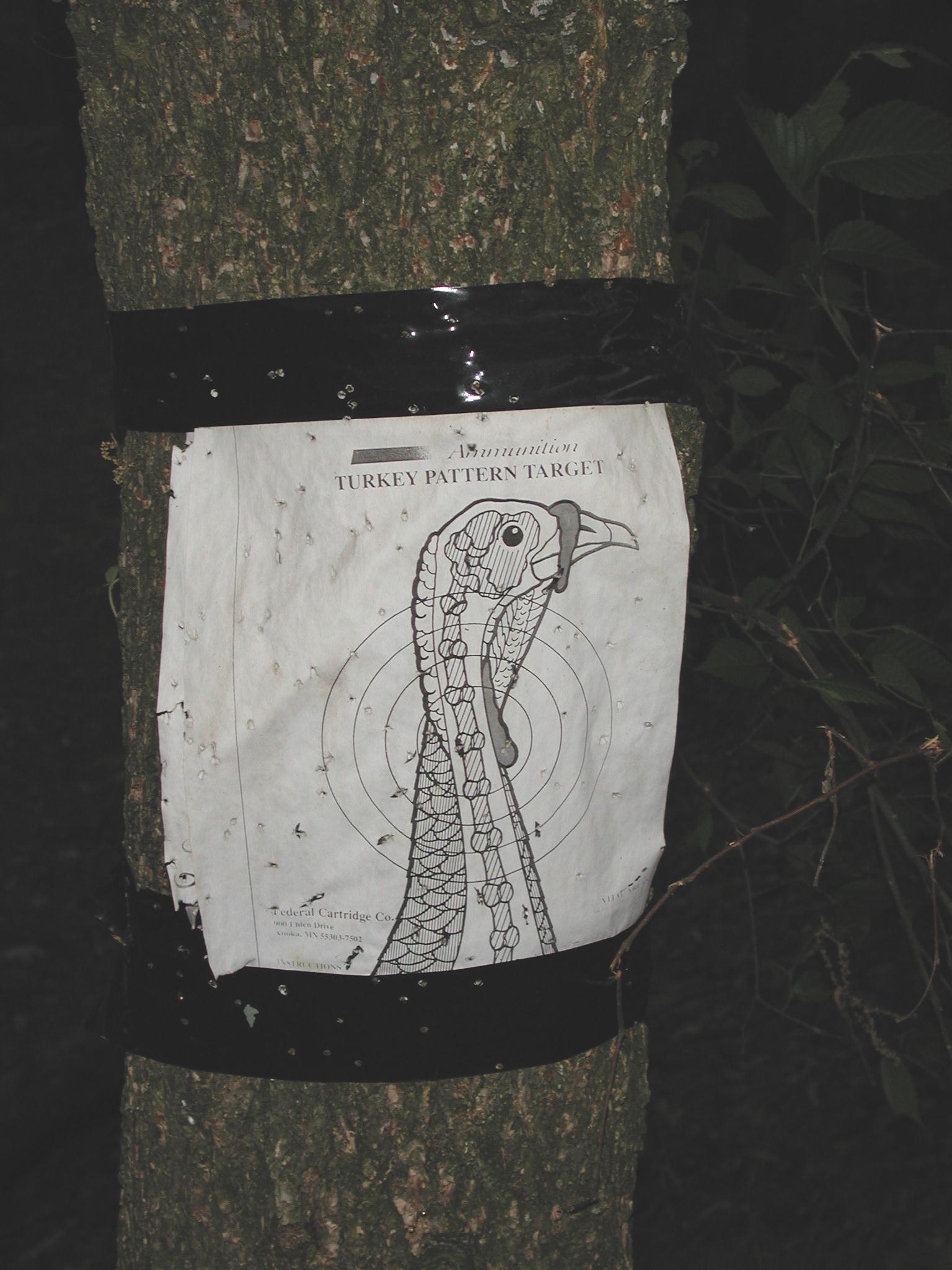
This target was visible on one of the trees. Local residents enjoy riding their ATVs around, fishing, and camping at
this location. Unlike most fishing spots, there was not a single piece of trash to be found. The local folks do a
great job keeping clean their abandoned Lock and Dam No. 1. Photo taken 23 April 2005
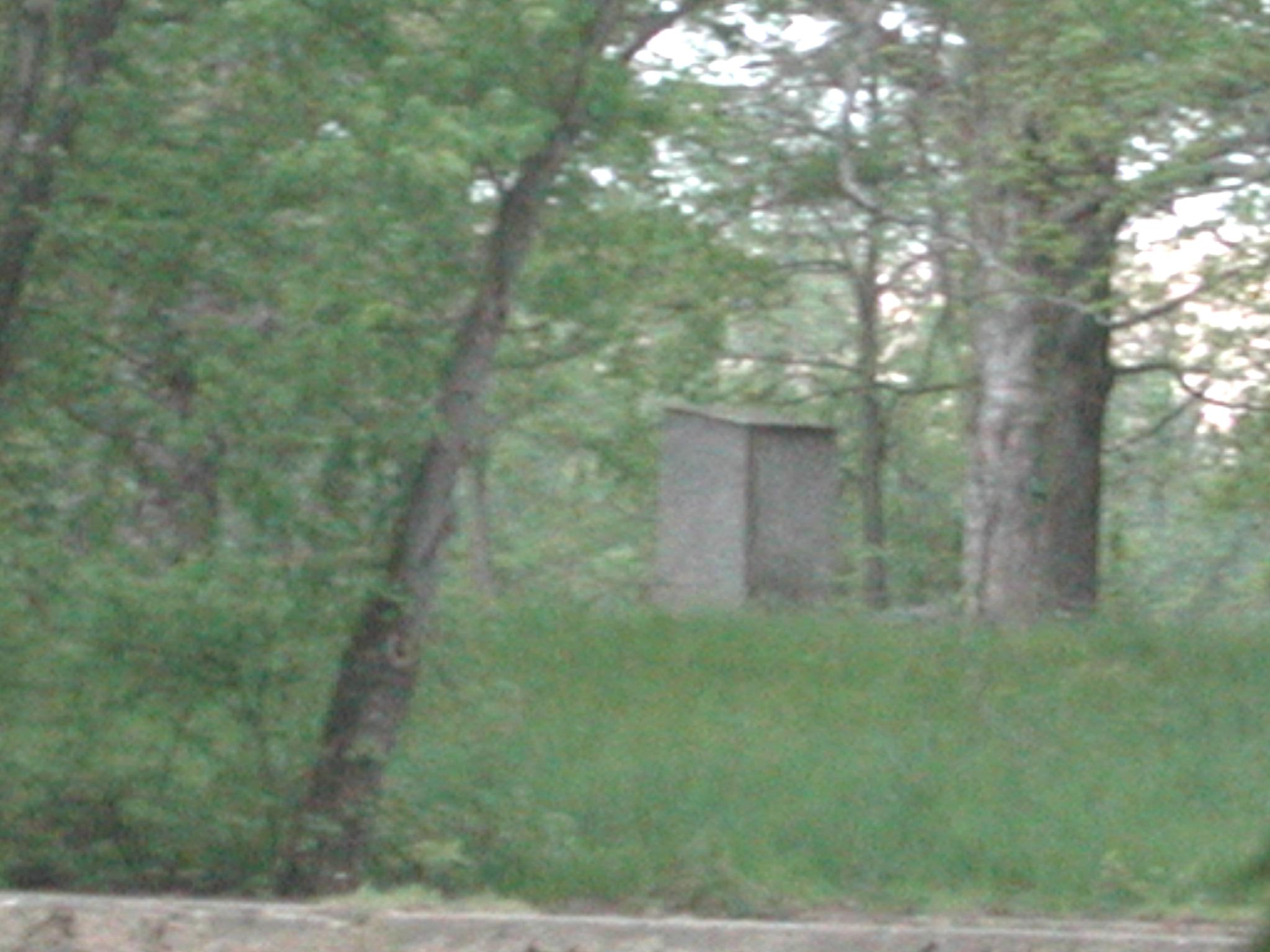
Abandoned Lock & Dam #1 on the Rough River. This view is on the right descending bank looking above the lock
chamber (on the left descending bank), on the esplanade of an old outhouse that remains still today, in April 2005.
Photo taken 23 April 2005
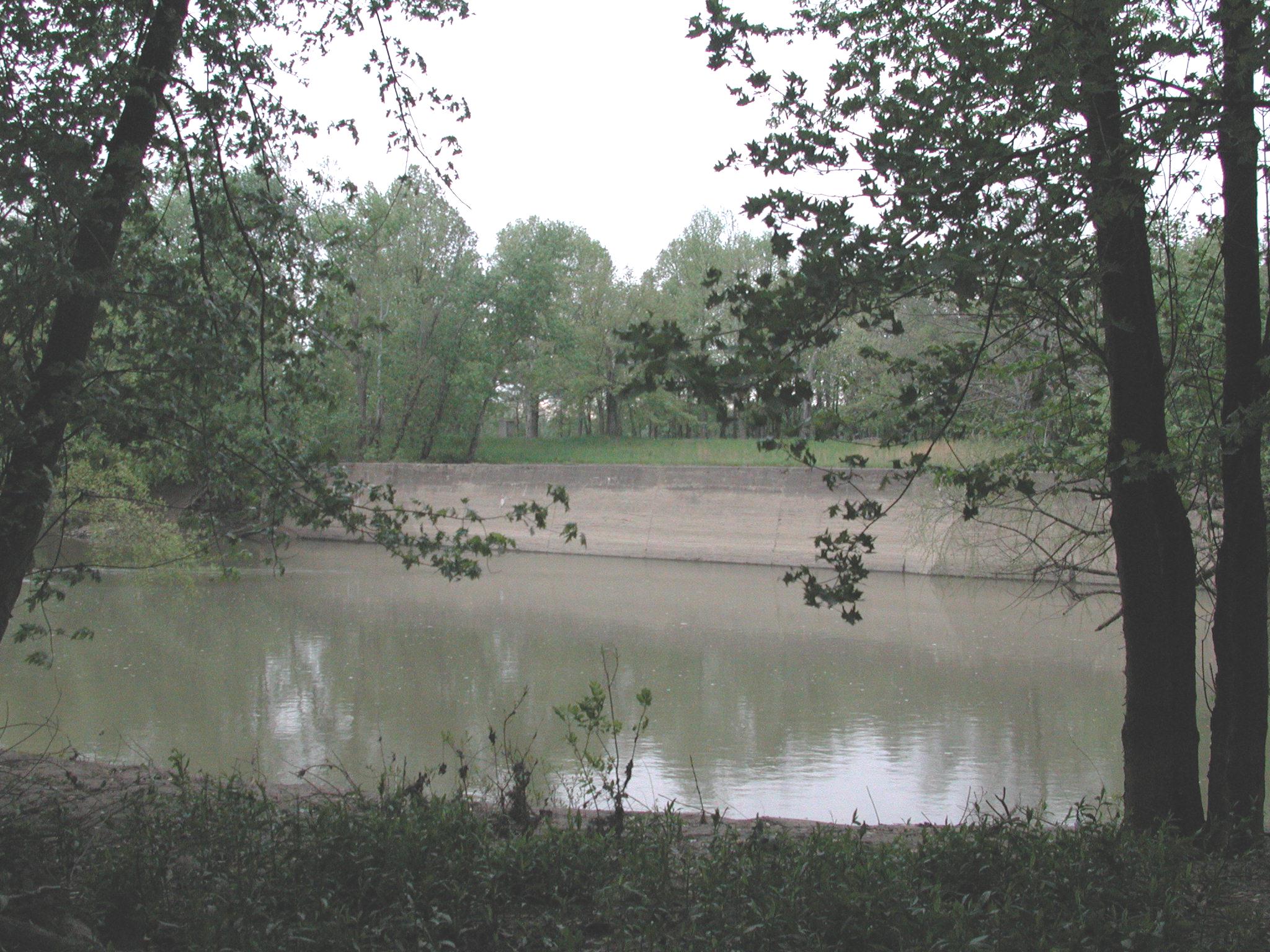
Abandoned Lock & Dam #1 on the Rough River. This view is on the right descending bank looking at the lock
chamber (on the left descending bank). Photo taken 23 April 2005
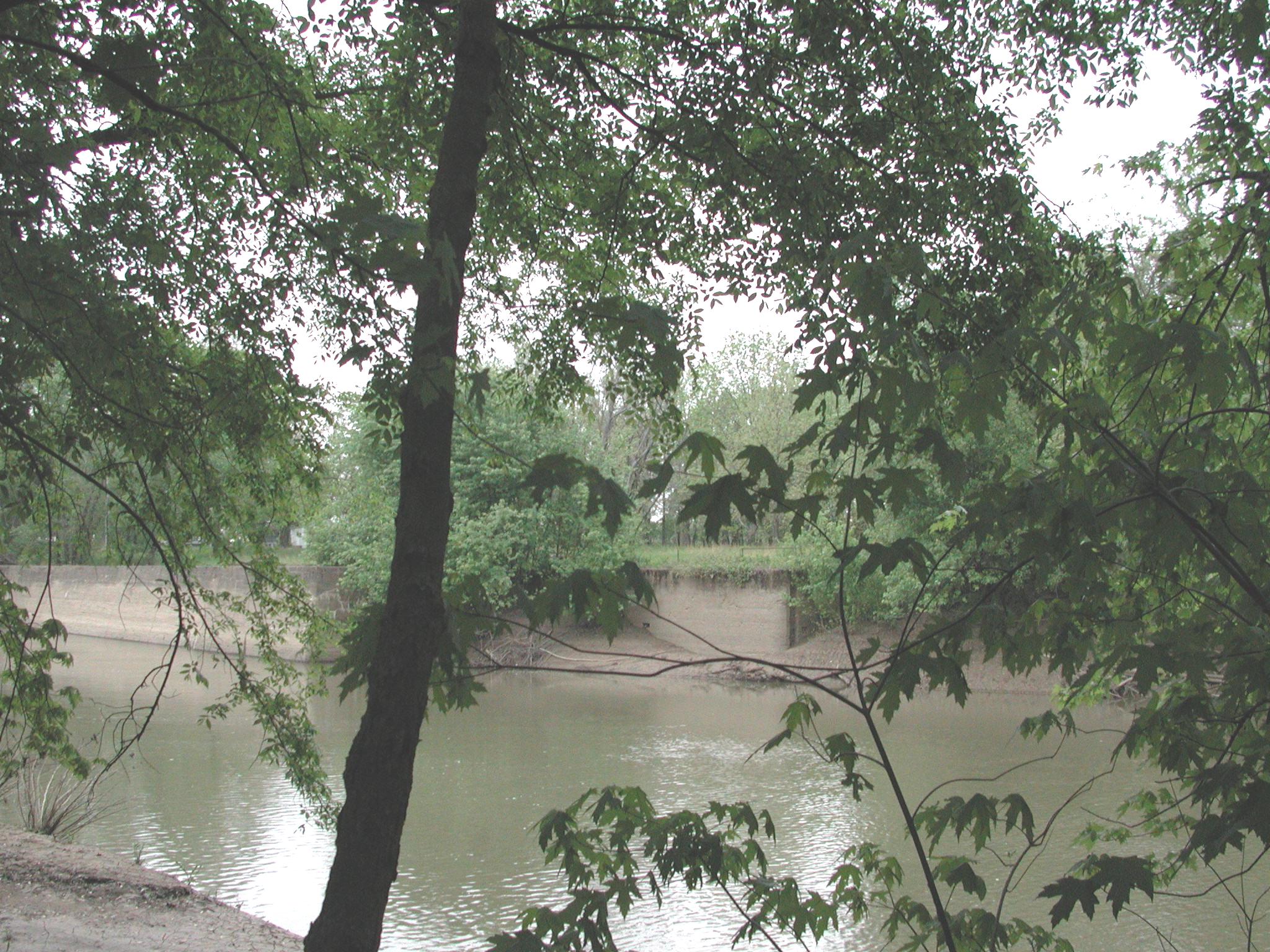
Abandoned Lock & Dam #1 on the Rough River. This view is on the right descending bank looking slightly upstream
toward the lock chamber. Sedimentation and a large tree have blocked the lock (downstream) chamber entrance. Photo
taken 23 April 2005
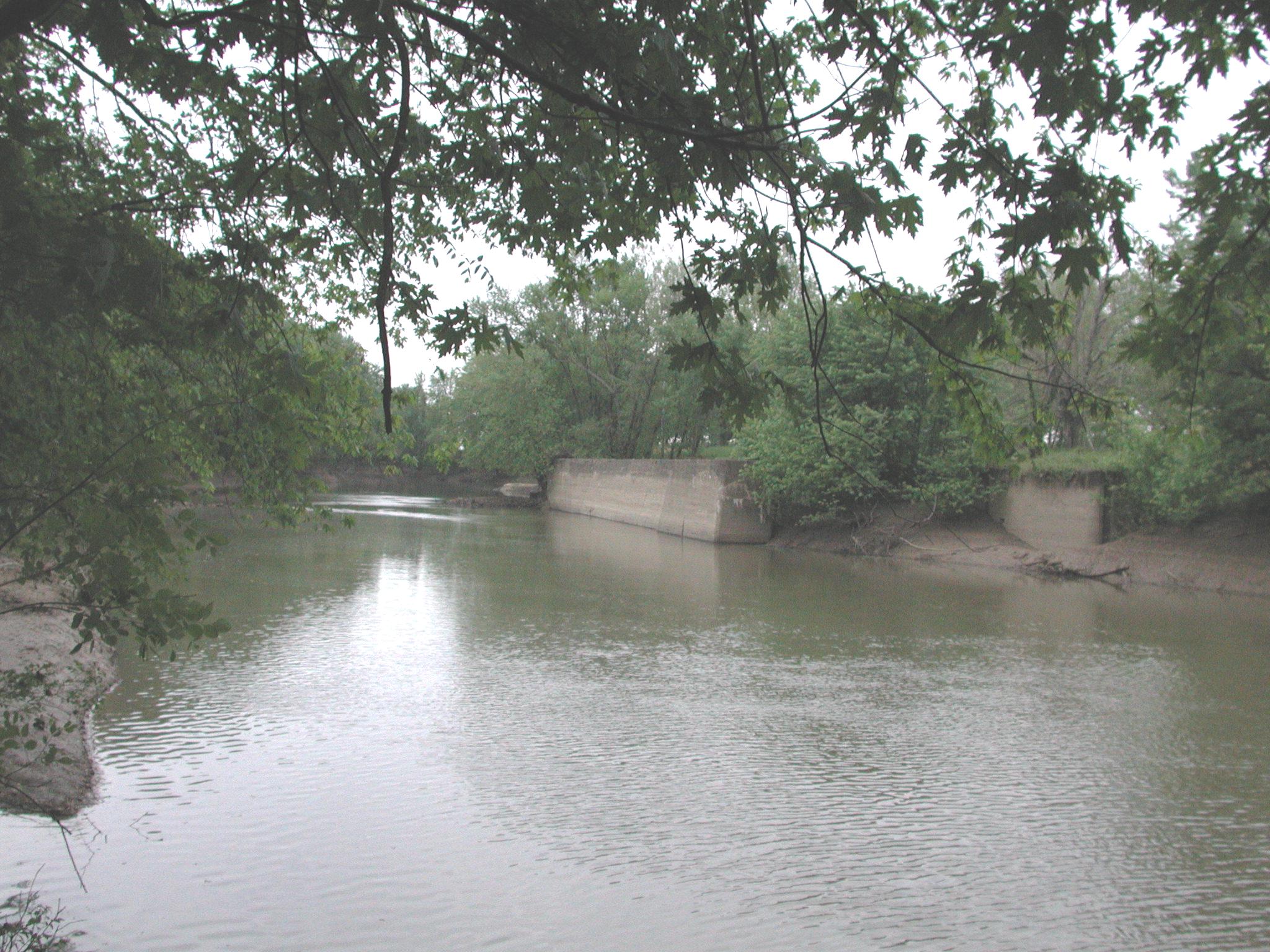
Abandoned Lock & Dam #1 on the Rough River. This view is on the right descending bank looking slightly upstream
toward the lock chamber. Sedimentation and a large tree have blocked the lock (downstream) chamber entrance. Photo
taken 23 April 2005
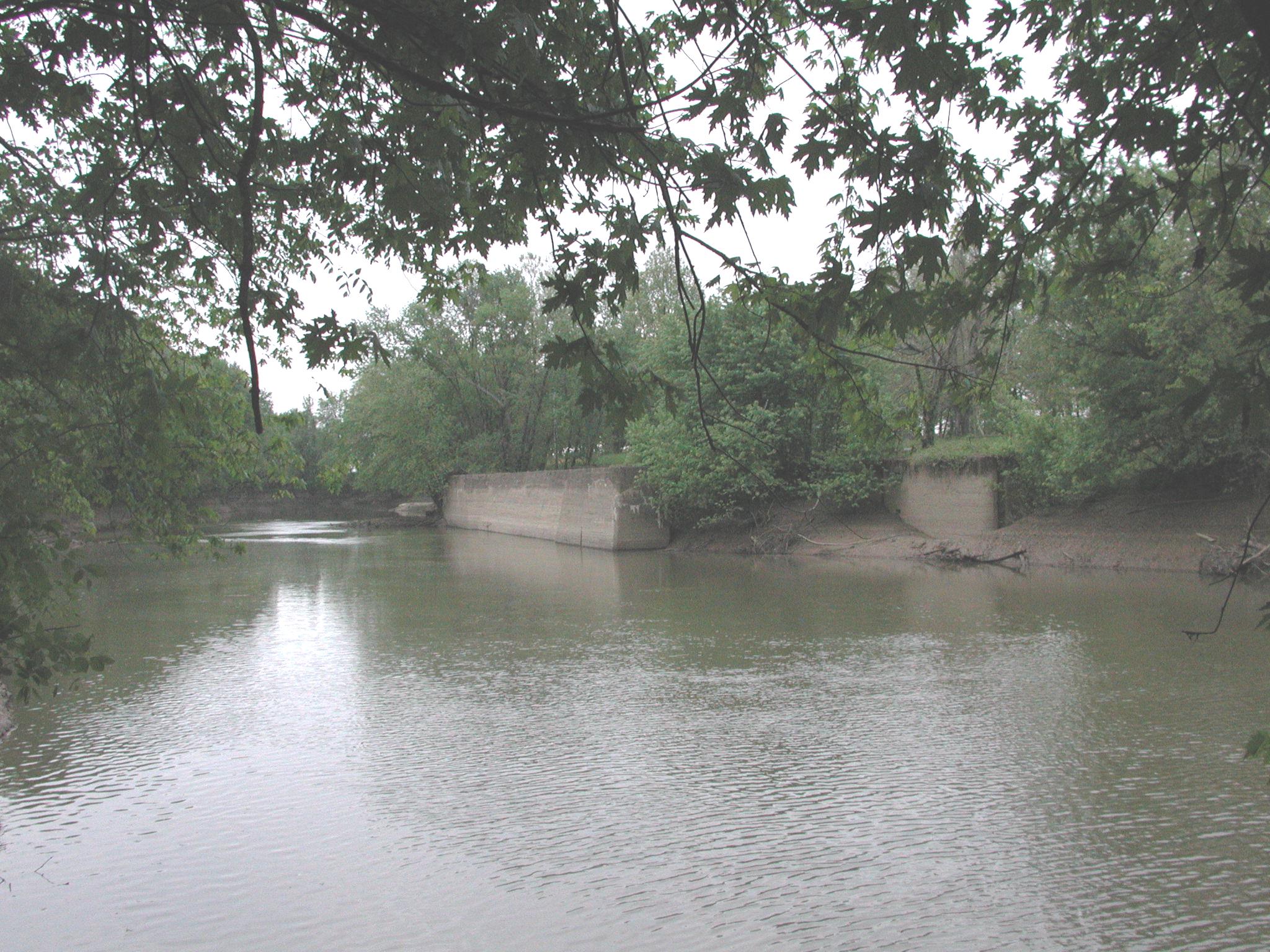
Abandoned Lock & Dam #1 on the Rough River. This view is on the right descending bank looking slightly upstream
toward the lock chamber. Sedimentation and a large tree have blocked the lock (downstream) chamber entrance. Photo
taken 23 April 2005
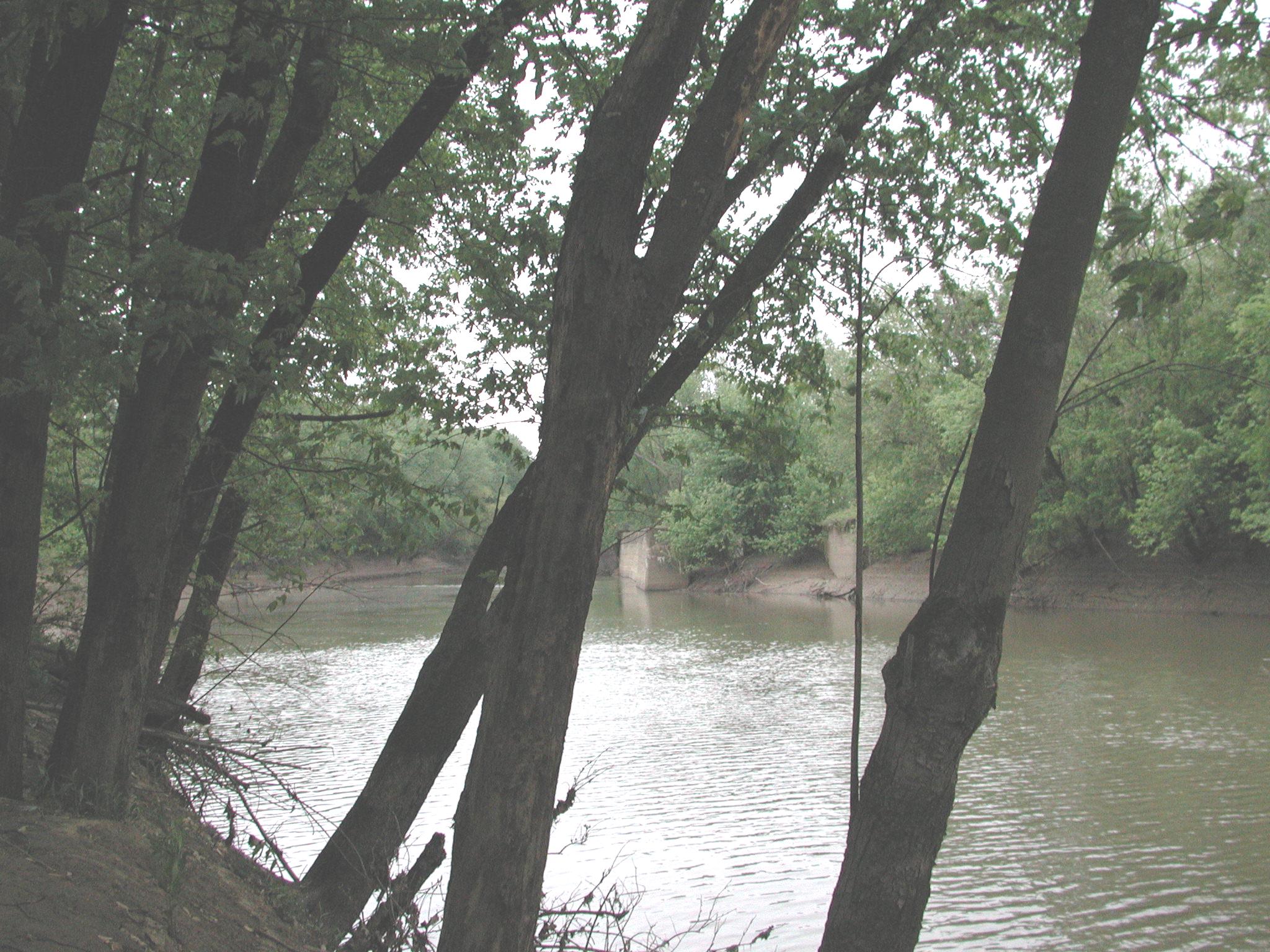
Abandoned Lock & Dam #1 on the Rough River. This view is on the right descending bank looking slightly upstream
toward the lock chamber. Sedimentation and a large tree have blocked the lock (downstream) chamber entrance. Photo
taken 23 April 2005
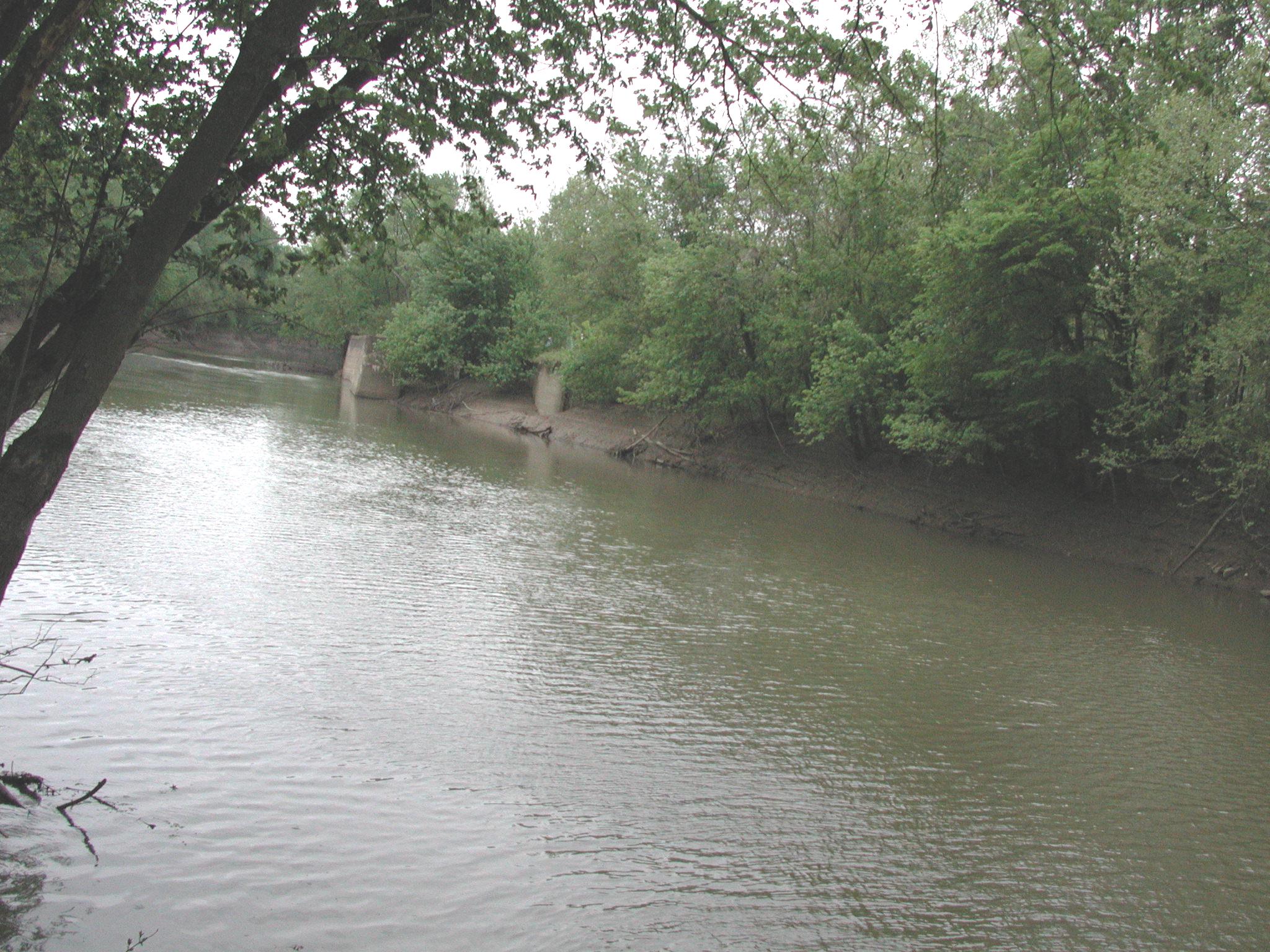
Abandoned Lock & Dam #1 on the Rough River. This view is on the right descending bank looking slightly upstream toward
the lock chamber. Sedimentation and a large tree have blocked the lock (downstream) chamber entrance. Photo taken 23
April 2005
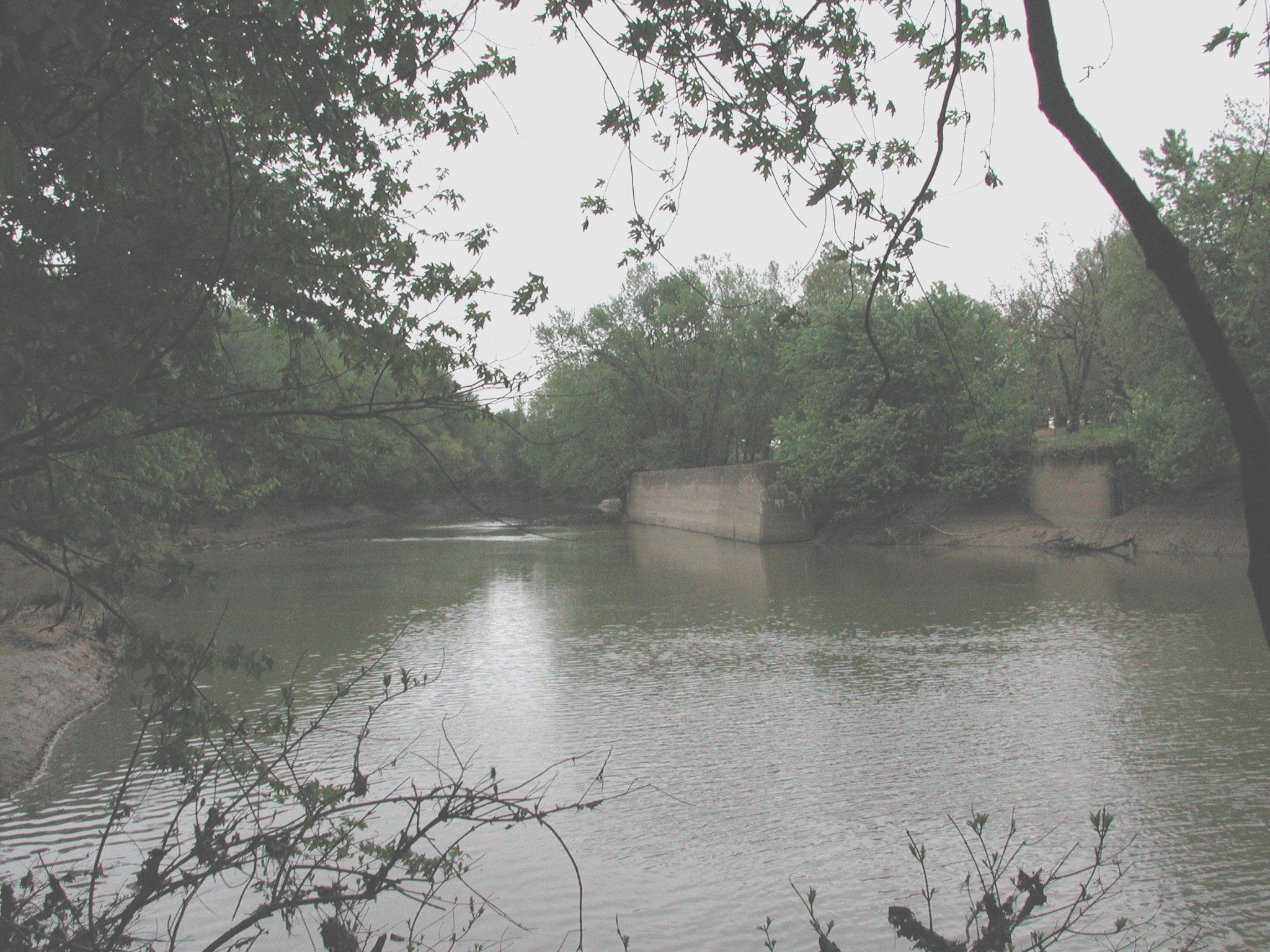
Abandoned Lock & Dam #1 on the Rough River. This view is on the right descending bank looking slightly upstream toward
the lock chamber. Sedimentation and a large tree have blocked the lock (downstream) chamber entrance. Photo taken 23
April 2005
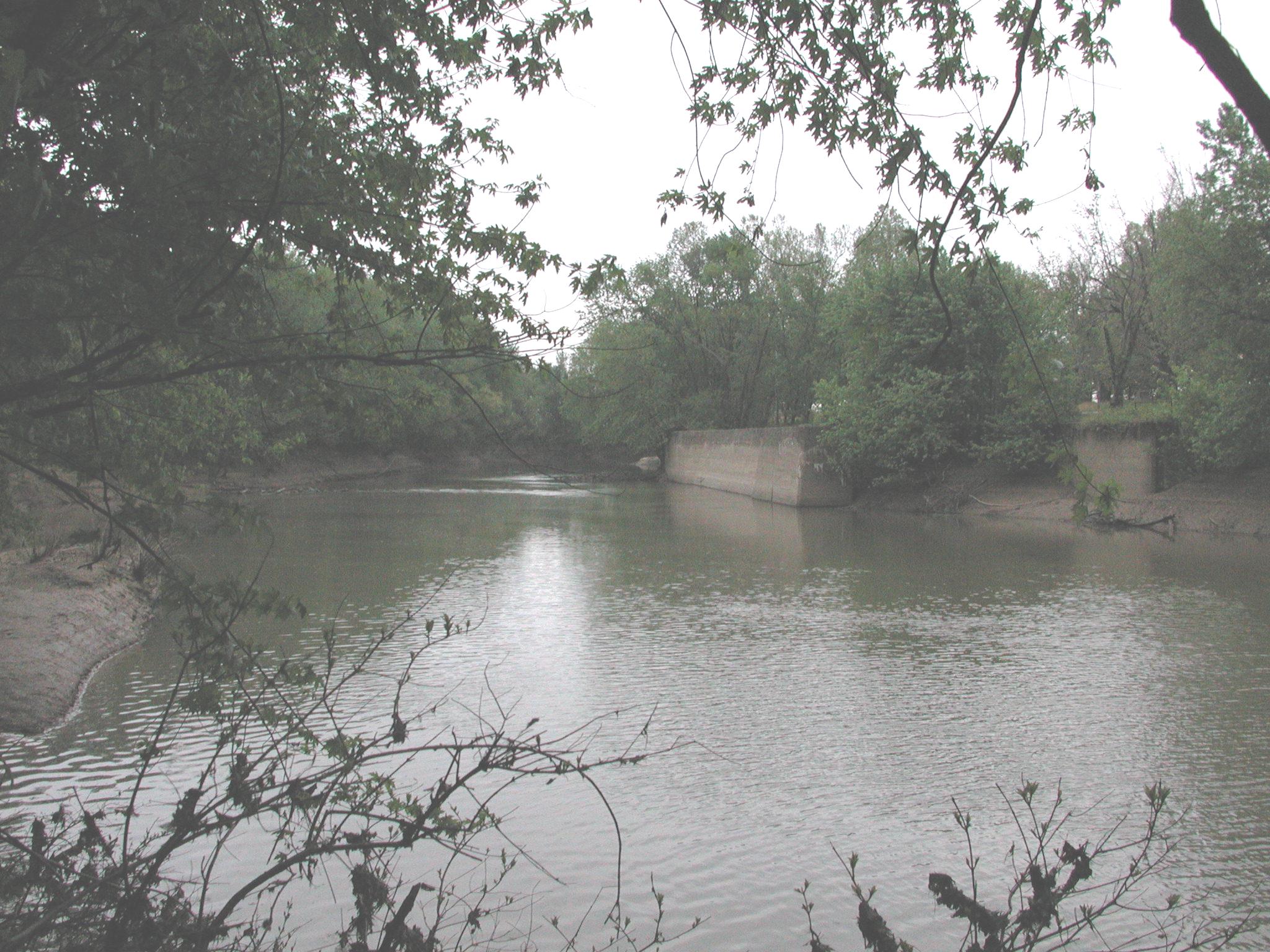
Abandoned Lock & Dam #1 on the Rough River. This view is on the right descending bank looking slightly upstream
toward the lock chamber. Sedimentation and a large tree have blocked the lock (downstream) chamber entrance. Photo
taken 23 April 2005
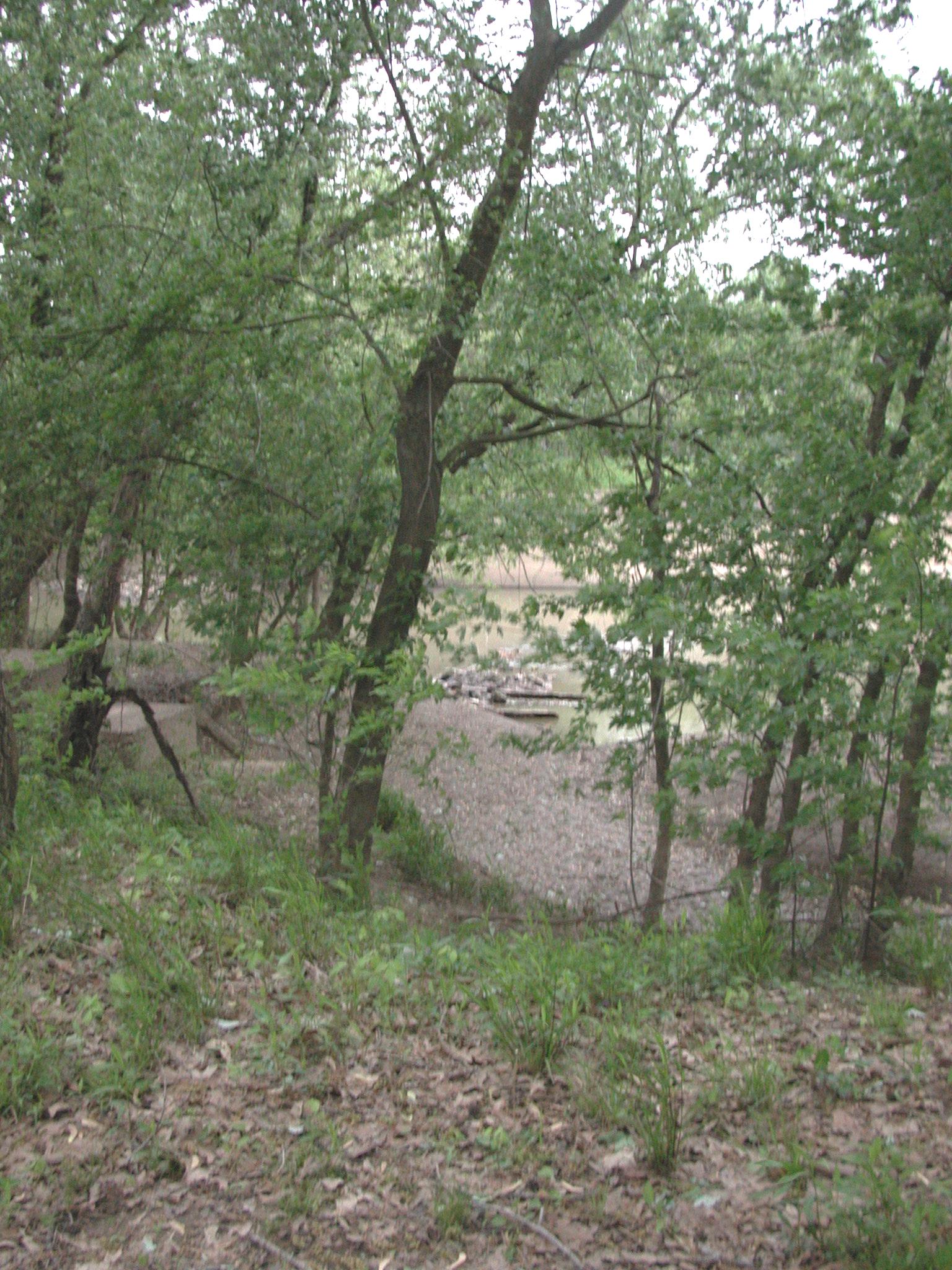
Abandoned Lock & Dam #1 on the Rough River. This view is on the right descending bank looking toward the lock chamber.
The image shows how a "timbercrib" dam was constructed with logs crisscross and filled with rocks, hay,
boulders, and mud. Photo taken 23 April 2005
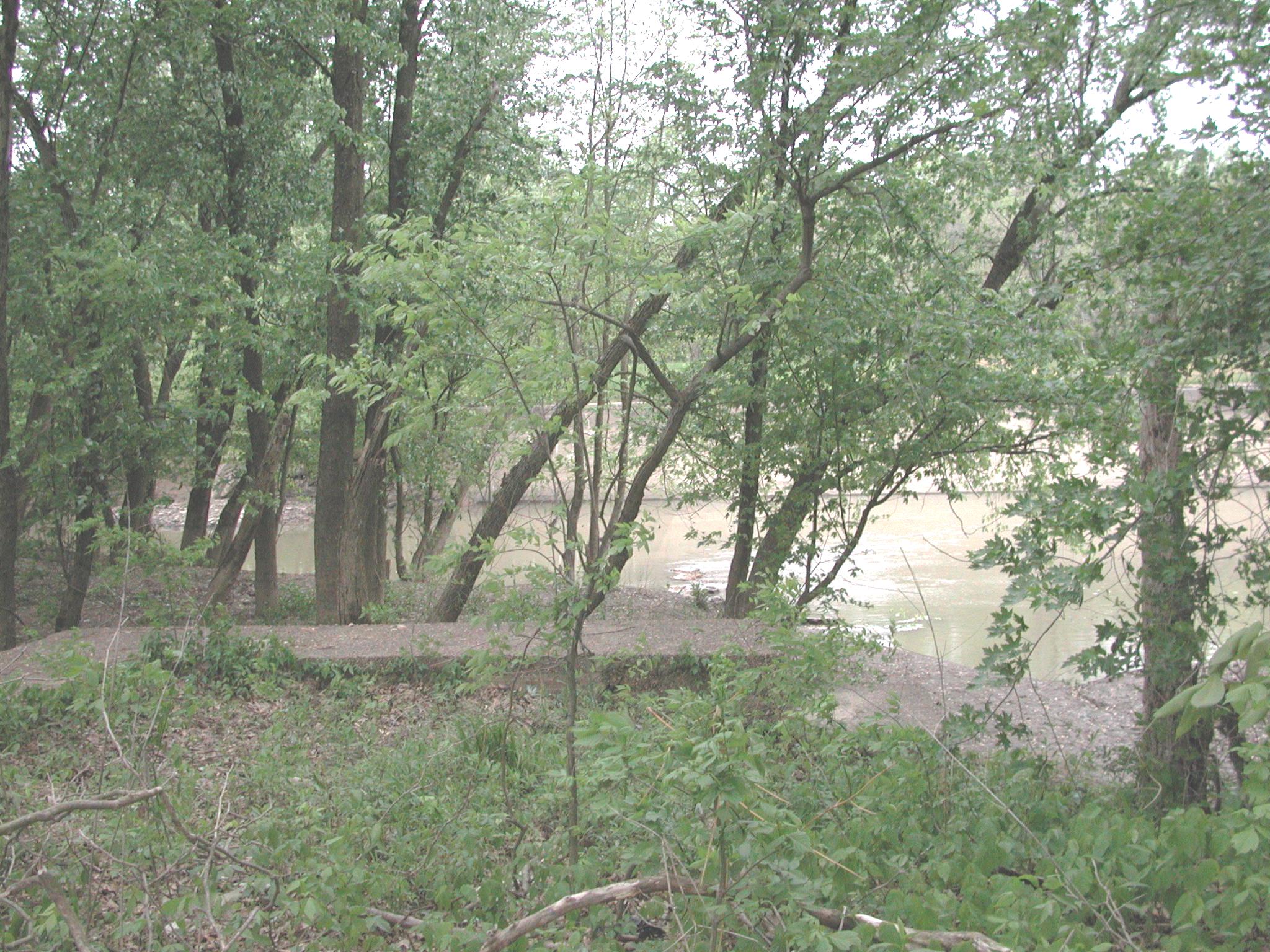
Abandoned Lock & Dam #1 on the Rough River. This view is on the right descending bank looking toward the lock chamber.
The image shows how a "timbercrib" dam was constructed with logs crisscross and filled with rocks, hay,
boulders, and mud. There is about 20 foot of a bank that would need to be removed if this dam was replaced to the
concrete portion you see in the photo. Photo taken 23 April 2005
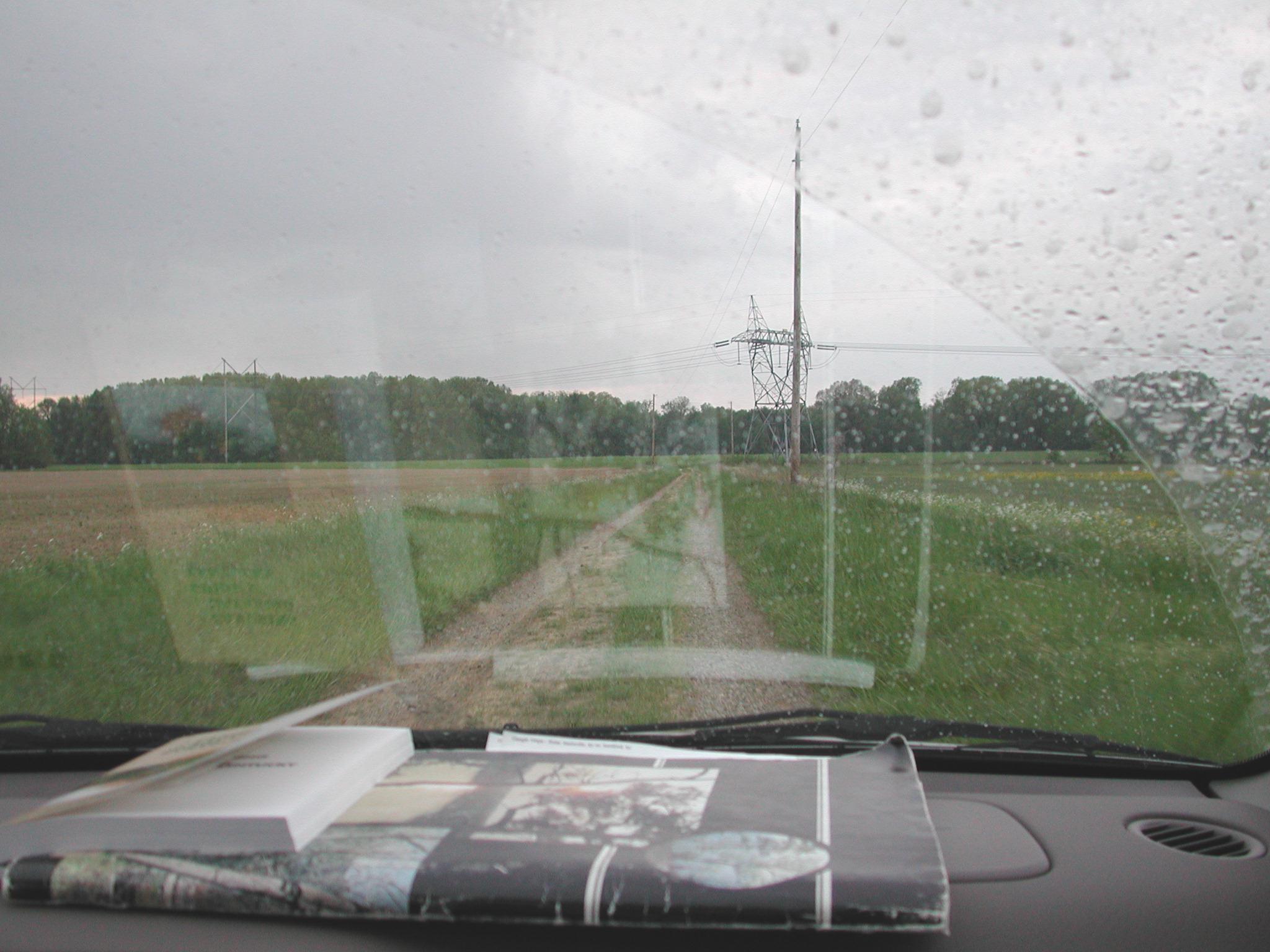
This is the field that leads into the right descending bank of the abandoned Lock & Dam #1 on the Rough River. Photo
taken 23 April 2005
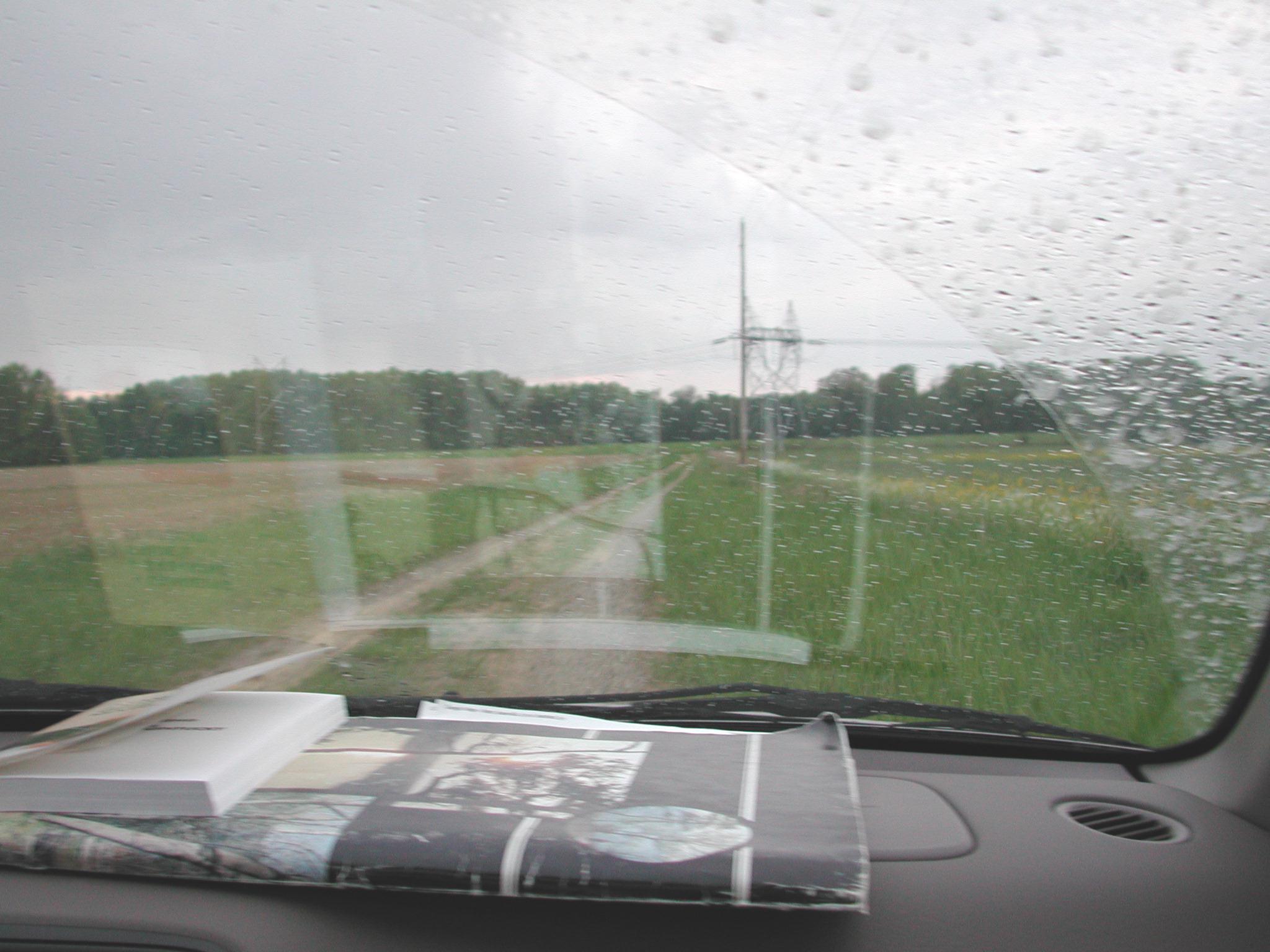
This is the field that leads into the right descending bank of the abandoned Lock & Dam #1 on the Rough River. Photo
taken 23 April 2005
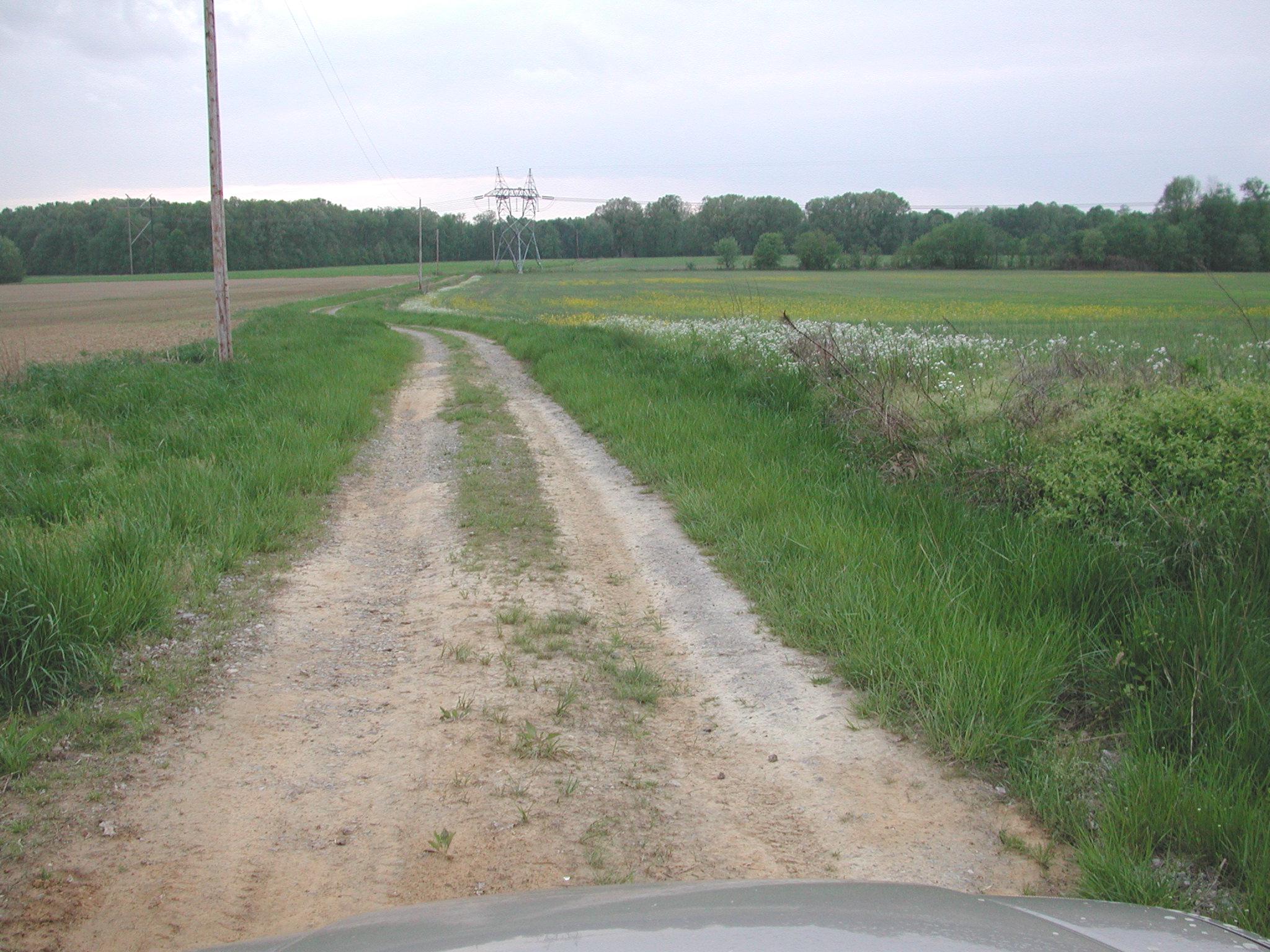
This is the field that leads into the right descending bank of the abandoned Lock & Dam #1 on the Rough River. Photo
taken 23 April 2005
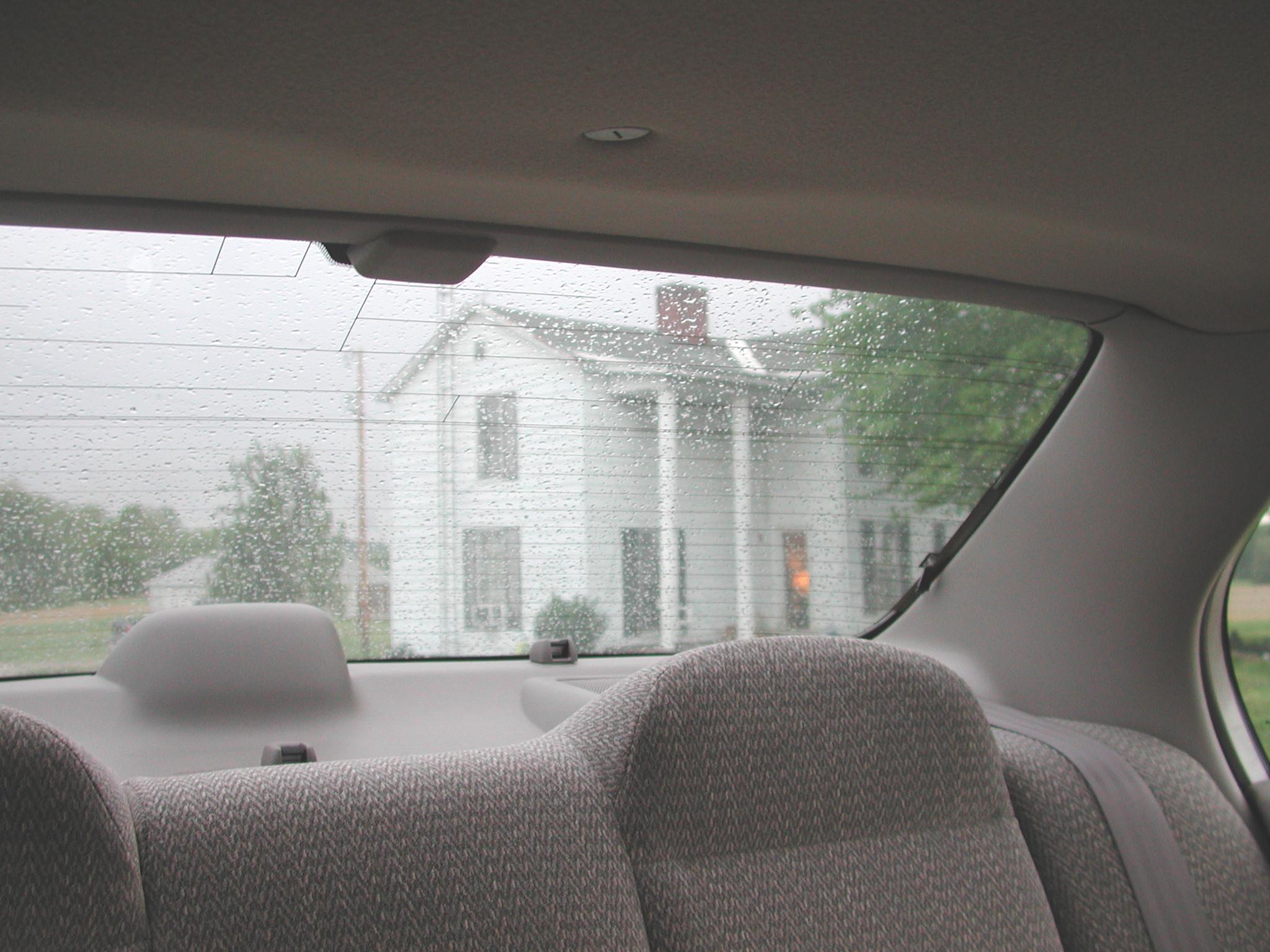
This photo is of an old house on the right descending bank of the abandoned Lock & Dam #1 on the Rough River,
about 3/4 mile from the bank. It is unlikely that the house would have been used by the lock tenders because it was
on the wrong side of the stream. Photo taken 23 April 2005
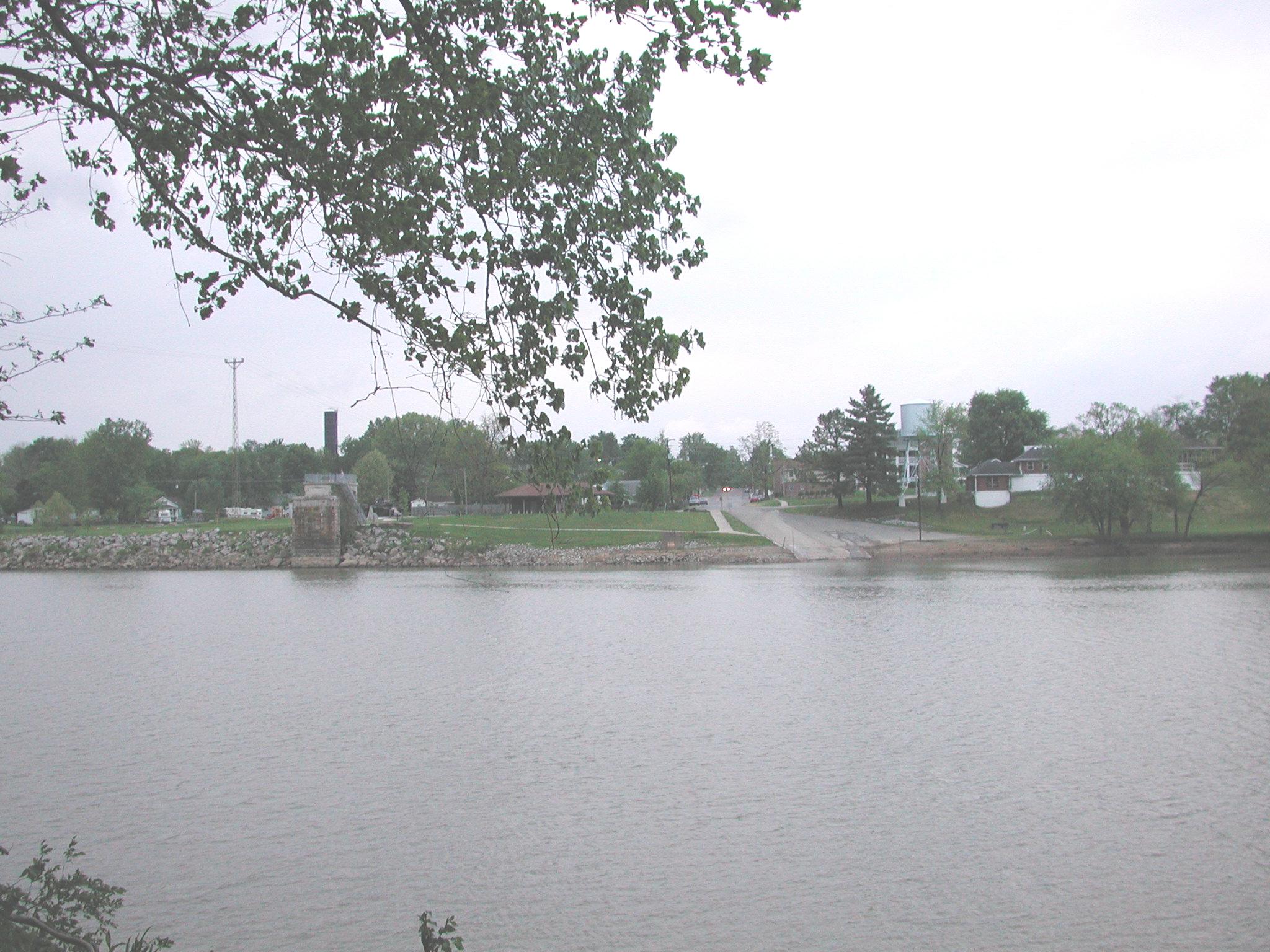
Livermore, Kentucky at the confluence of the Rough and Green Rivers. This public ramp is open 24/7/365. Rough River is
just to the right of what you see and not able to be seen in this photo easily. To the left of the photo is the
Veterans Memorial Park. Photo taken 23 April 2005
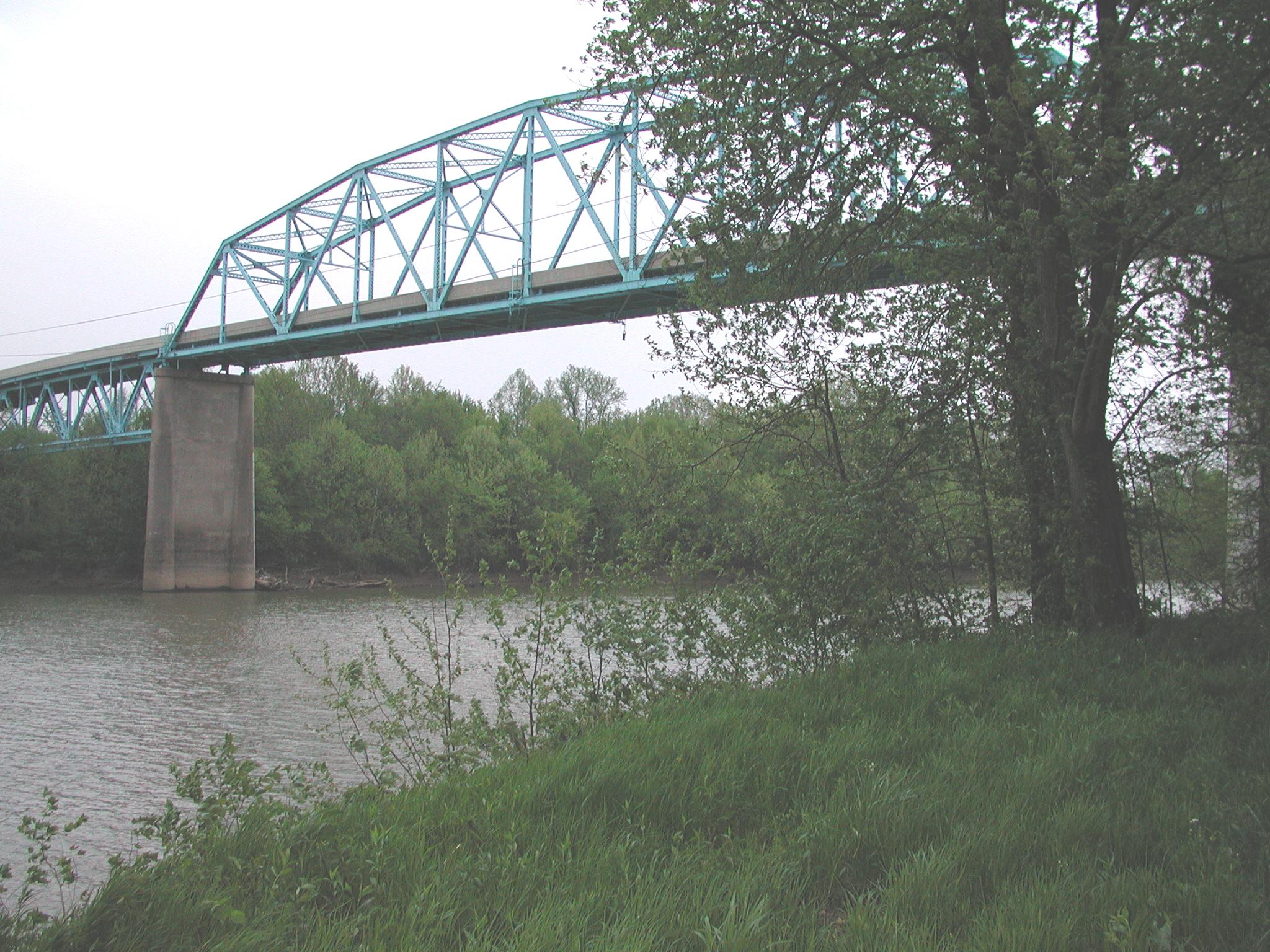
This bridge crosses both the Rough and Green Rivers as well as two Kentucky Counties. Photo taken 23 April 2005
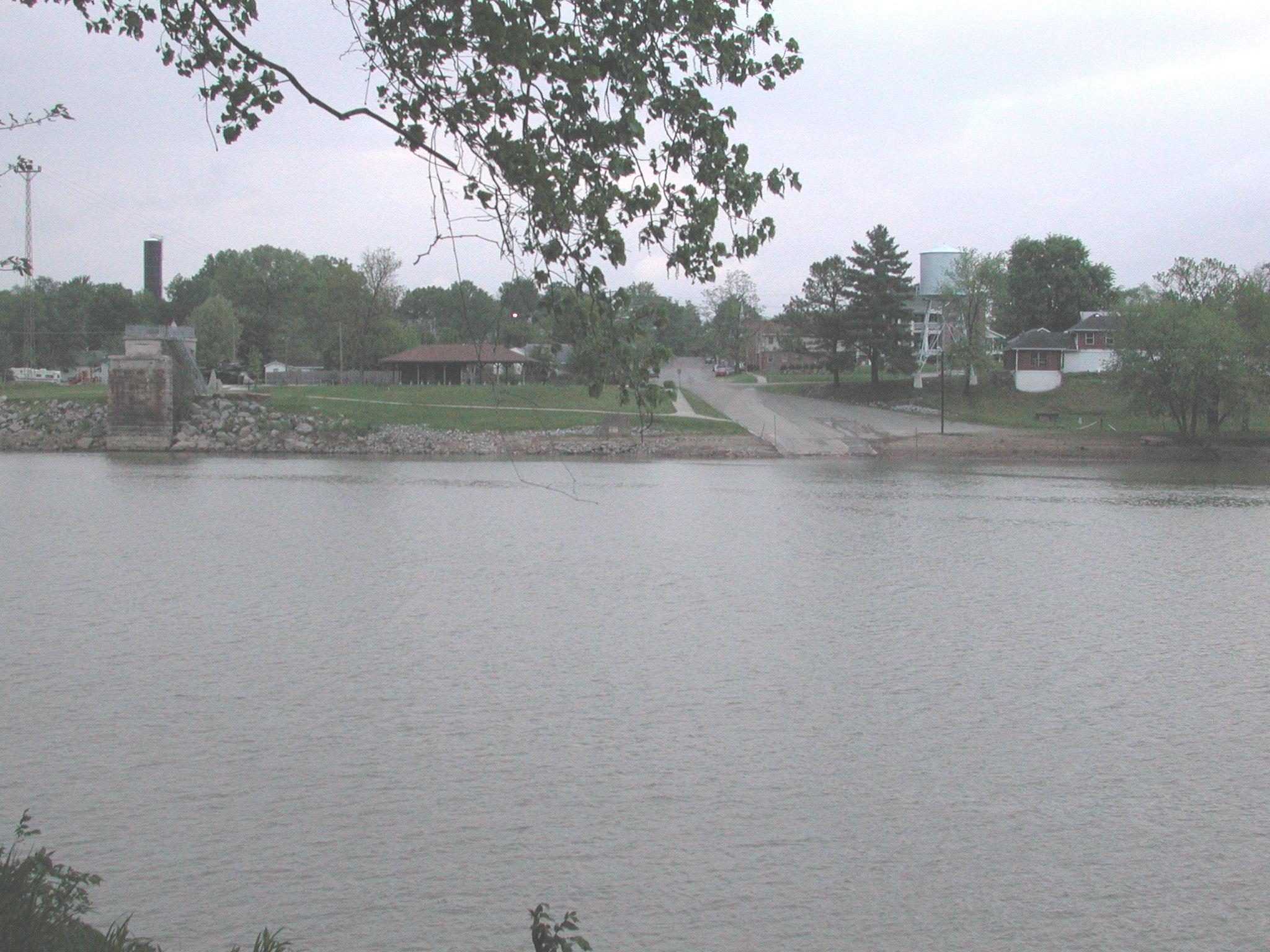
Livermore, Kentucky at the confluence of the Rough and Green Rivers. This public ramp is open 24/7/365. Rough River is
just to the right of what you see and not able to be seen in this photo easily. To the left of the photo is the
Veterans Memorial Park. Photo taken 23 April 2005
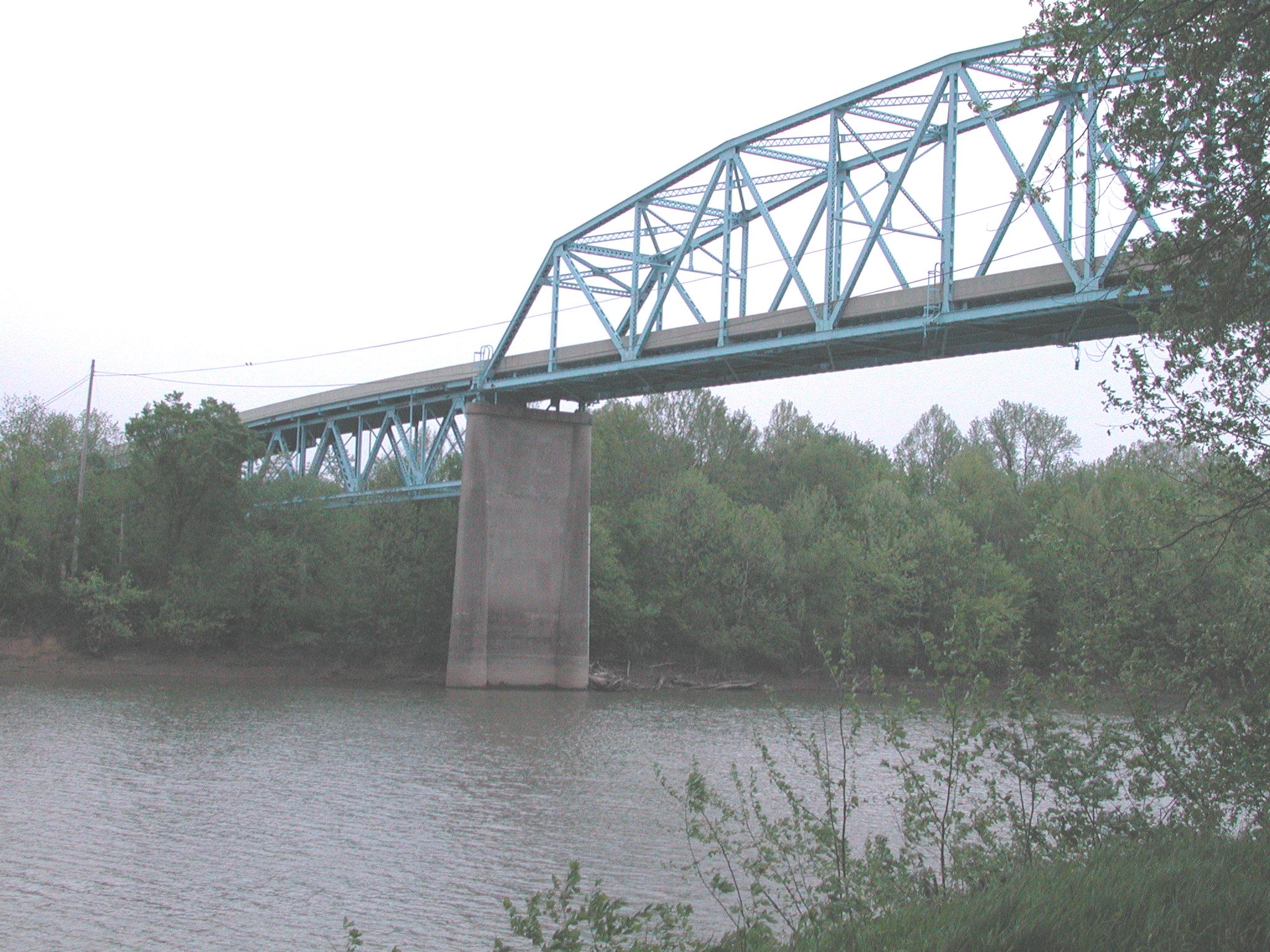
This bridge crosses both the Rough and Green Rivers as well as two Kentucky Counties. Photo taken 23 April 2005
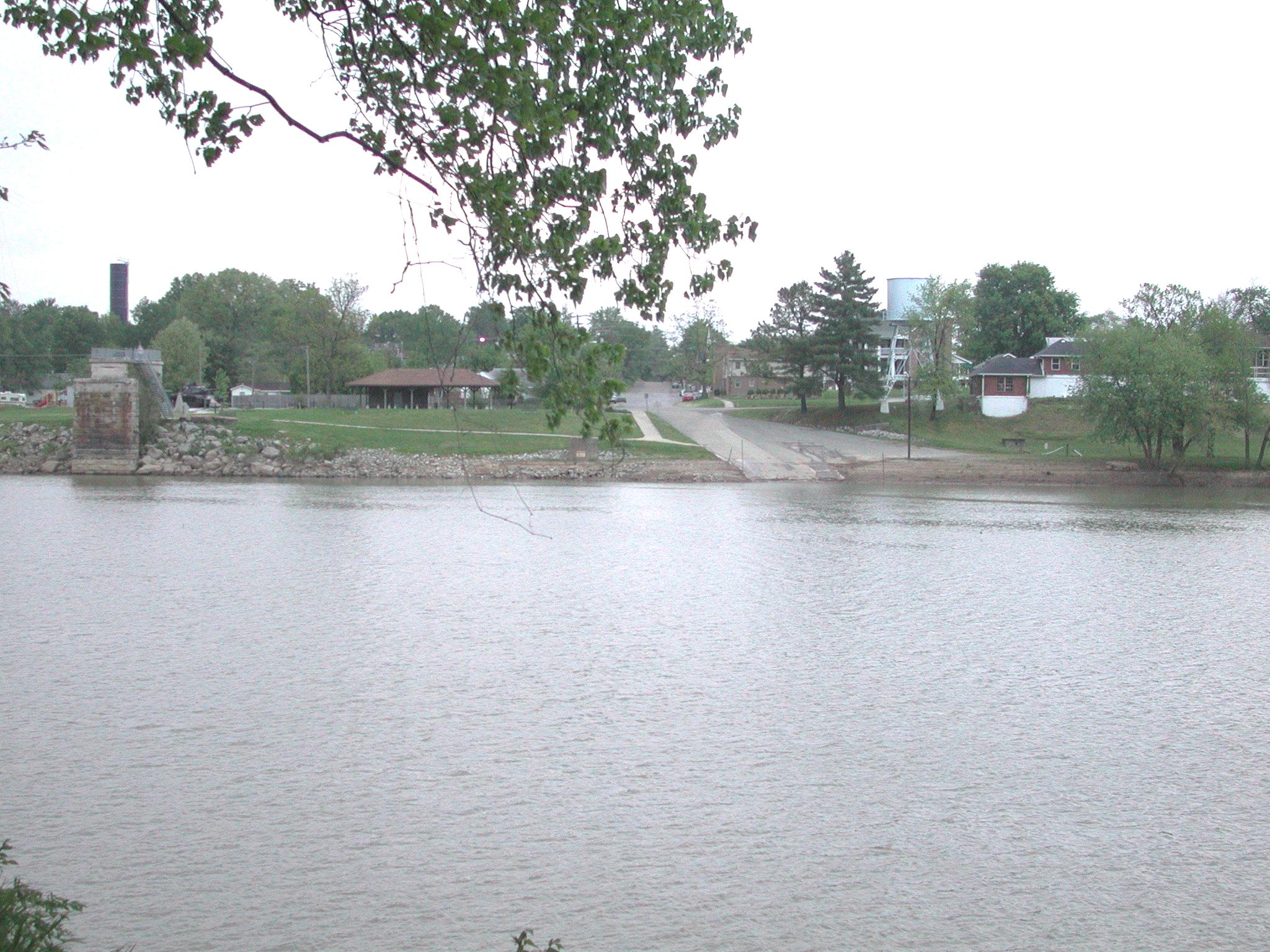
Livermore, Kentucky at the confluence of the Rough and Green Rivers. This public ramp is open 24/7/365. Rough River is
just to the right of what you see and not able to be seen in this photo easily. To the left of the photo is the
Veterans Memorial Park. Photo taken 23 April 2005
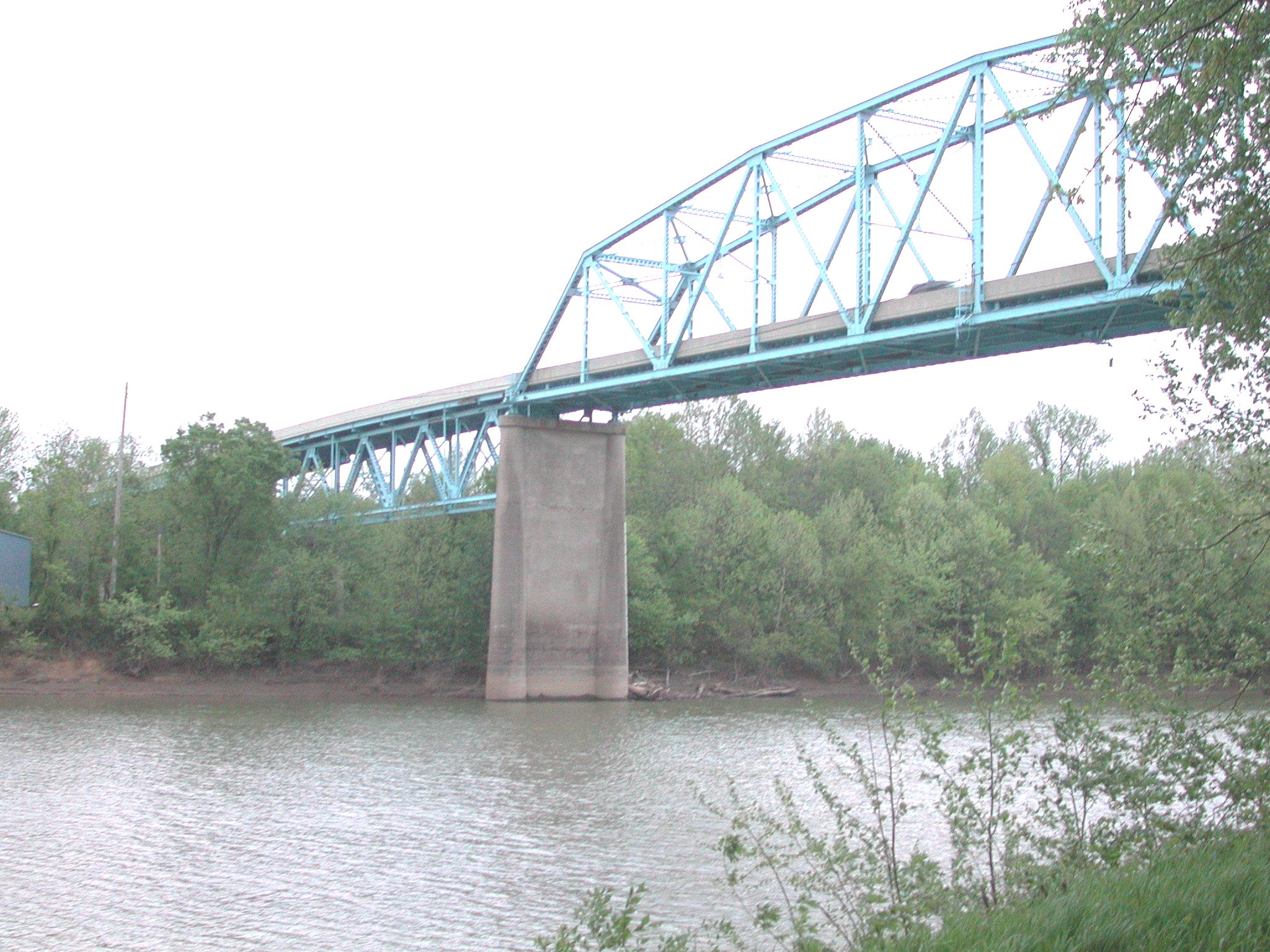
This bridge crosses both the Rough and Green Rivers as well as two Kentucky Counties. Photo taken 23 April 2005
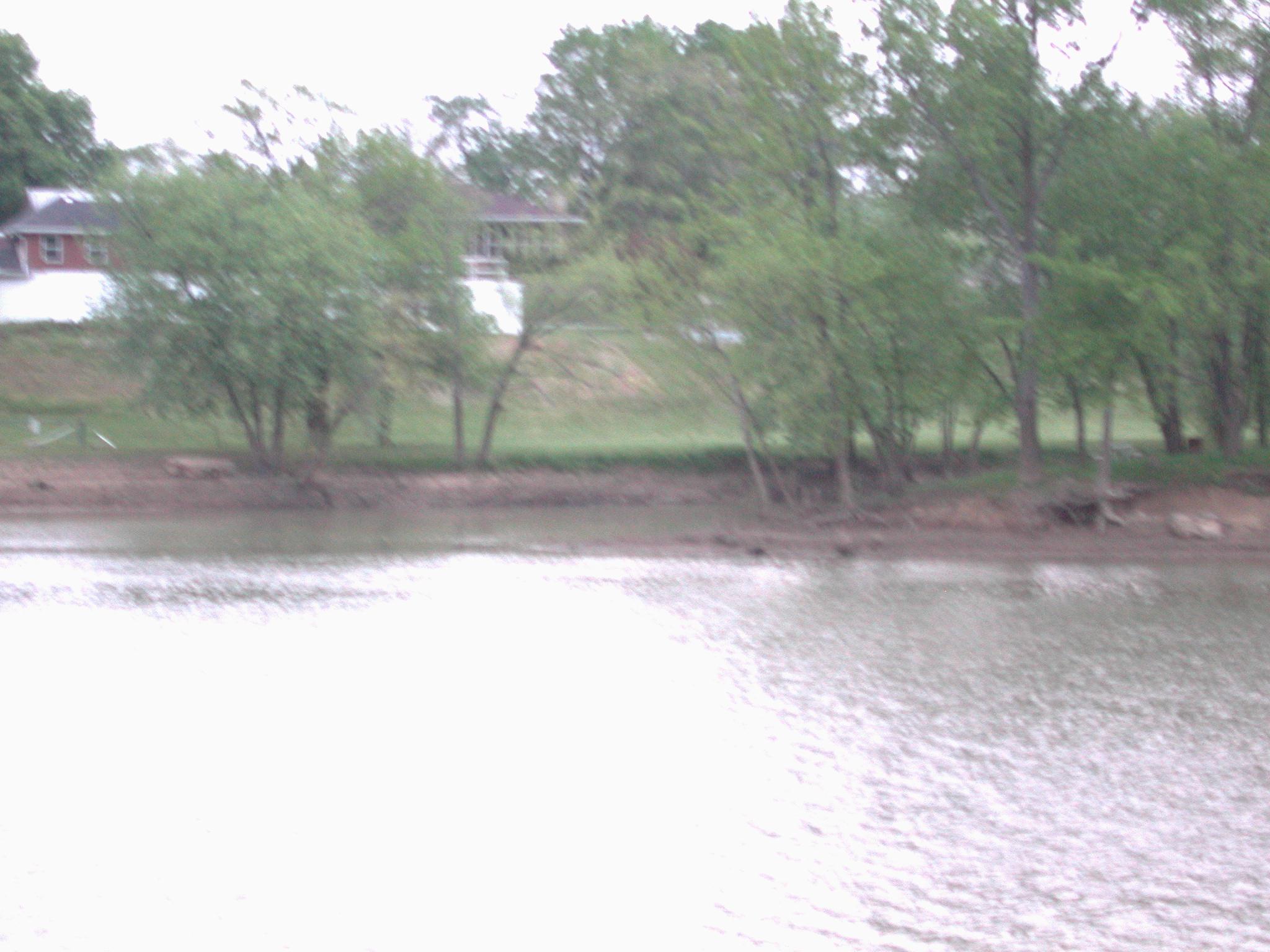
Actual confluence of both the Rough and Green Rivers. This photo was taken way too late at night and lacks the clarity
to see the confluence as well as one would hope. Photo taken 23 April 2005
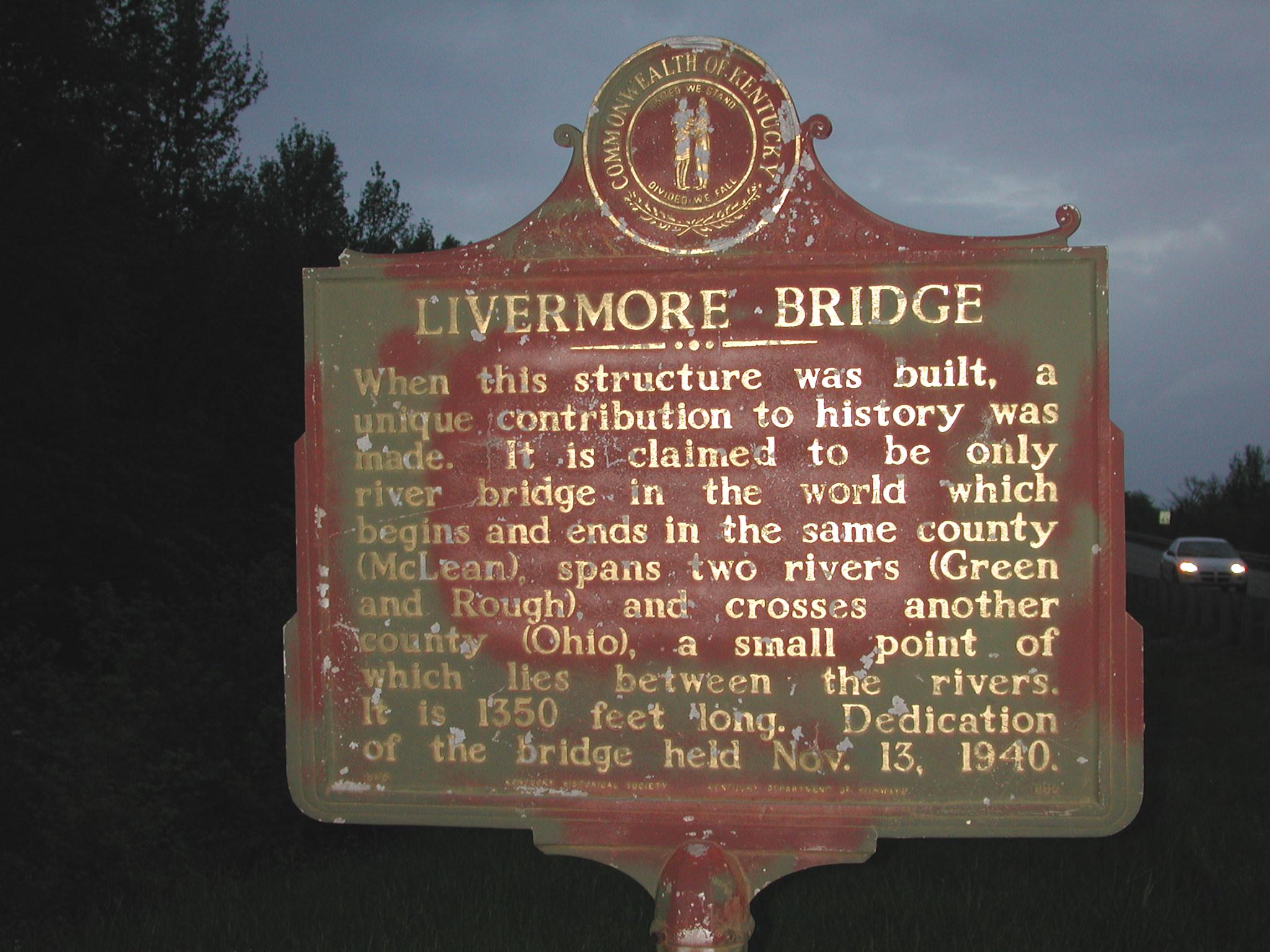
Historical Marker on the left descending bank of the Green River. Photo taken 23 April 2005
Governmental Links
Kentucky River Authority (for only
Kentucky River)

Ohio River Navigation Information

Navigation Information Connection
(NIC)
Barren River Lake
Green River Lake
Nolin River
Lake

Rough River Lake webpage with
USACE

Historical Links

Ohio County
History

Ohio County Map
Ohio county was formed in 1799. It is located in the Western Coal Field region of the state. The elevation in the
county ranges from 365 to 800 feet above sea level. In 2000 the county population was 22,916 in a land area of 593.79
square miles, an average of 38.6 people per square mile. The county seat is Hartford.

Ohio County, Kentucky

Ohio County PVA

OHIO COUNTY

Travel along KY 69 to Ohio County and to historic Fort Hartford where at the 340-acre Ohio County
Park is a "replica" of Fort Hartford - the first fortified settlement in the lower Green River
Valley. The 100-foot by 150-foot structure magically resembles the fort which protected early
settlers of Hartford from Indian attacks from 1782 to 1810. An authentic two-room log cabin,
believed to be built in 1840, stands in the fort's courtyard. Come for the history and stay for
the fun. The park's amphitheater is the home for the Ohio County Courthouse Player's summer
production and the location of the Ohio County Fair each July. Visitors to the park will also
find full hook-up camping, miniature golf, a driving range and putting green, a variety of
sporting activities, Muzzleloaders activities, bingo games and country-western & line dances on
Friday through Monday nights in the park's recreational building.
Ohio County Historical Society Museum - Main Street, Hartford (270) 298-3444 (J.T. Boling,
Sr., President of the Society).
There is no phone for the society due to the expense. You must call the president's cell phone
instead. In the near future, the secretaries phone number might be used instead.
This complex features four historic buildings: an 1838 cabin, the historic Thomas Home, a country
and a rustic homestead building.
Fordsville Depot Museum - Walnut Street, Fordsville, Open Daily 10 am - 2 pm.
This railroad museum also includes a historic depot.
Rosine Cemetery - Rosine.
This historic cemetery is the burial site of Uncle Pen Vandiver and The Monroe Brothers, the
founders of Bluegrass
Music.

STEAMBOATING LINKS

Steamboat Whistle Recordings
More Steamboat Whistle Recordings

Showboat
Majestic

Howard
Steamboat Museum

MEDIA LINKS

The
Ohio County Times News

WEATHER DATA
Local
Weather loop
The National Weather Service Wilmington River Forecast Center Home Page
NWS Mississippi River Watch
NWS Wilmington RFC Hydrometerological Support Page
NCEP Hydrometerological Prediction Center Page
The latest images (and a good deal more) are available from The Daily
Planet.

National Archives and Records Administration:
Records of the Office of the Chief of Engineers [OCE](Record Group 77)1789-1996:
77.10.26
Records of the Louisville, KY, District on Rough River
Textual Records (in Atlanta, except as noted): General records of the District Office, consisting of issuances, 1952-73;
standard permit files, 1907-43; survey report files, 1931-74; engineering studies, 1837-1945; comprehensive reports and
studies, 1911-55; basic topographical data, 1911-52; hydrological and hydraulic data, 1938-50; and records, 1940-51.
Records of the Construction Division, consisting of civil works operations and maintenance files, 1873-1950; civil works
construction files, 1936, 1939-52, 1958-70; and field notebooks, 1935-48. Daily vessel traffic logs for locks on the
Green, Barren, and Rough Rivers, compiled by the Owensboro, KY, Engineer Office, 1896-1944 (in Chicago).
Maps and Charts: Reconnaissance of Ohio River above the falls, in album, 1819 (112 items). Ohio River survey atlas, 1914
and 1938 (560 items). Surveys and flood plain maps of the Ohio and Wabash Rivers, and other rivers in IN, IL, and KY,
1899- 1946 (340 items). Ohio River flood plain, Cannelton Pool Reach, KY and IN, 1965 (63 items). Rough River Reservoir,
KY, 1941 (16 items). Property boundaries of Nolin Reservoir, KY, and Markland locks and dam, IN, 1960 (4 items). Savanna
Army Depot, IL, 1986 (57 items). See Also 77.18.
Architectural and Engineering Plans: Locks and dams, and lock tenders' dwellings, on the Green and Barren Rivers,
1890-1952 (3,011 items). Plans from civil works project files of the Construction Division, 1958-70 (200 items, in
Atlanta). Civil works project files, 1959-75. See Also 77.18.
Photographs (in Atlanta): District engineering activities and works, mainly on the Ohio and Kentucky Rivers, 1881-1962
(3,500 images). See Also 77.22.
6.
Operation of Rough River Lock and Dam No. 1 near Hartford, Ky. has been discontinued.
River Charts
Ohio River and Green River Navigation Charts
Availability
Ohio River Navigation Charts
Louisville District Navigation Charts cover from Cairo, Ill. to Foster, Ky. (Charts 1-122). These
charts include Louisville, Ky. and Cincinnati, Ohio. (Available for purchase from Government
Printing Office or for download below.)
Huntington District Navigation Charts
cover from Foster, Ky. to New Martinsville, W.Va.
(Charts 122-186). (Available for purchase from Government Printing Office or possibly for
download from the Huntington District
website.)
Pittsburg District Navigation Charts
cover from New Martinsville, W.Va. to Pittsburg,
Penn. (Charts 187-224). (Available for purchase from Government Printing Office or possibly for
download from the Pittsburgh District
website.)
Green River Navigation Charts
Green River Navigation Charts cover from confluence with the Ohio River to Lock and Dam 3 at Mile
108.5. (Available for download below.)
Purchase Navigation Chartbooks
The 2003 Ohio River Navigation Charts are available for purchase from the U.S. Government Online Bookstore, or by calling the
Government Printing Office toll-free at (866) 512-1800.
Mail orders with an attached Government Printing Office order form are accepted. The Government
Printing Office will accept payment by check, money order, Visa, MasterCard, Discover/NOVUS,
American Express, or Superintendent of Documents Deposit Account. Navigation charts are no longer
available for purchase directly from Corps of Engineers district offices. All hard copy charts
must be ordered through the U.S. Government Online Bookstore.
Download Navigation Chartbooks
Navigation Charts for the Green River and the Ohio River (Louisville District) are available below
in Portable Document Format (PDF). Use the Adobe Acrobat Reader or equivalent software to view
them.
18 NOV 2005 US Coast Guard contact information update
Green River: Charts 1 - 10 Updated 18 Nov 2005
Green River: Charts 11 - 20 Updated 18 Nov 2005
Green River: Charts 21 - 30 Updated 18 Nov 2005
Green River: Charts 31 - 40 Updated 18 Nov 2005
Green River: Charts 41 - 52 Updated 18 Nov 2005
Ohio River: Charts 1 - 5 (Cairo pool) Updated 18
Nov 2005
Ohio River: Charts 4 - 10 (Locks and Dam 53 pool)
Updated 18 Nov 2005
Ohio River: Charts 10 - 15 (Locks and Dam 52 pool)
Updated 18 Nov 2005
Ohio River: Charts 15 - 32 (Smithland pool)
Updated 18 Nov 2005
Ohio River: Charts 32 - 48 (John T Myers pool)
Updated 18 Nov 2005
Ohio River: Charts 48 - 60 (Newburgh pool) Updated
18 Nov 2005
Ohio River: Charts 60 - 85 (Cannelton pool) Updated
18 Nov 2005
Ohio River: Charts 85 - 102 (McAlpine pool) Updated
18 Nov 2005
Ohio River: Charts 102 - 122 (Markland pool)
Updated 18 Nov 2005
Ohio River: Lewis and Clark 2003 Commemorative Edition
pages
NAVIGATION NOTICE NO.
1-2004 Mississippi Valley Division Great Lakes and Ohio River Division Rev.97A January 2004
Ohio River Navigation Information
US Power Squadron
Navigable Waters
Projects Waters
Index to Navigation Charts by
Corps District
Great Lakes and Ohio River Division
Maps
BOOKS ABOUT THE ROUGH RIVER





















